Inbox and Environment News: Issue 619
March 24-30, 2024: Issue 619
Federal Offshore Gas Bill Added In Section Raises Environmental And First Nations Alarm Bells
Consistent with section 17 of the Legislation Act 2003, the Minister for the Environment and the Department of Climate Change, Energy, the Environment and Water would need to be consulted on any proposed amendments to the prescribes regulations before they are made.
The only requirement for regulations made under the OPGGS Act is that they are required or permitted to be prescribed by the Act, or necessary or convenient to be prescribed for carrying out or giving effect to the Act (OPGGS Act, s 781). The object of the OPGGS Act is merely to provide an ‘effective regulatory framework for petroleum exploration and recovery and the injection and storage of greenhouse gas substances in offshore areas’ (s 3). There is no mention of the protection of the environment, or any reference to the principles of ecologically sustainable development set out in the EPBC Act.
Because of the lack of safeguards or limits on this provision, NOPSEMA’s processes for assessing the impacts of offshore oil and gas activities could be fundamentally changed – to the point they no longer even refer to matters protected under the EPBC Act.
Critically, if this amendment has the intended effect ……. it could mean that far lower environmental protections and safeguards are in place for marine environments in Commonwealth waters – yet these lesser protections still act as a substitute assessment and approval under the EPBC Act.
If enacted, the EPBC Deeming Part would permanently override an important protection for both biodiversity and the environment more generally. The EPBC Act allows the Environment Minister to ‘switch off’ the requirement for environmental approvals by endorsing another environmental approval regime, but only after the regime concerned is assessed and the minister is satisfied, in effect, that it will deliver environmental outcomes equivalent to that provided by the EPBC Act. The effect of the EPBC Deeming Part, by implication, is to declare that the Environment Minister is satisfied, in advance and without assessment, that any environmental approval regime put in place under the OPGGS Act, whether pursuant to the current review or in future, delivers protection equivalent to that provided by the EPBC Act, provided it is within the scope of the original accreditation. This is obviously a complete fiction and is in effect a blank cheque, one that would enable a Resources Minister, current or future, to water down protections enacted by Parliament, if so minded.
Living Ocean 'No Plastics Please' Beach Clean Up; South Avalon Beach

Volunteers For Barrenjoey Lighthouse Tours Needed
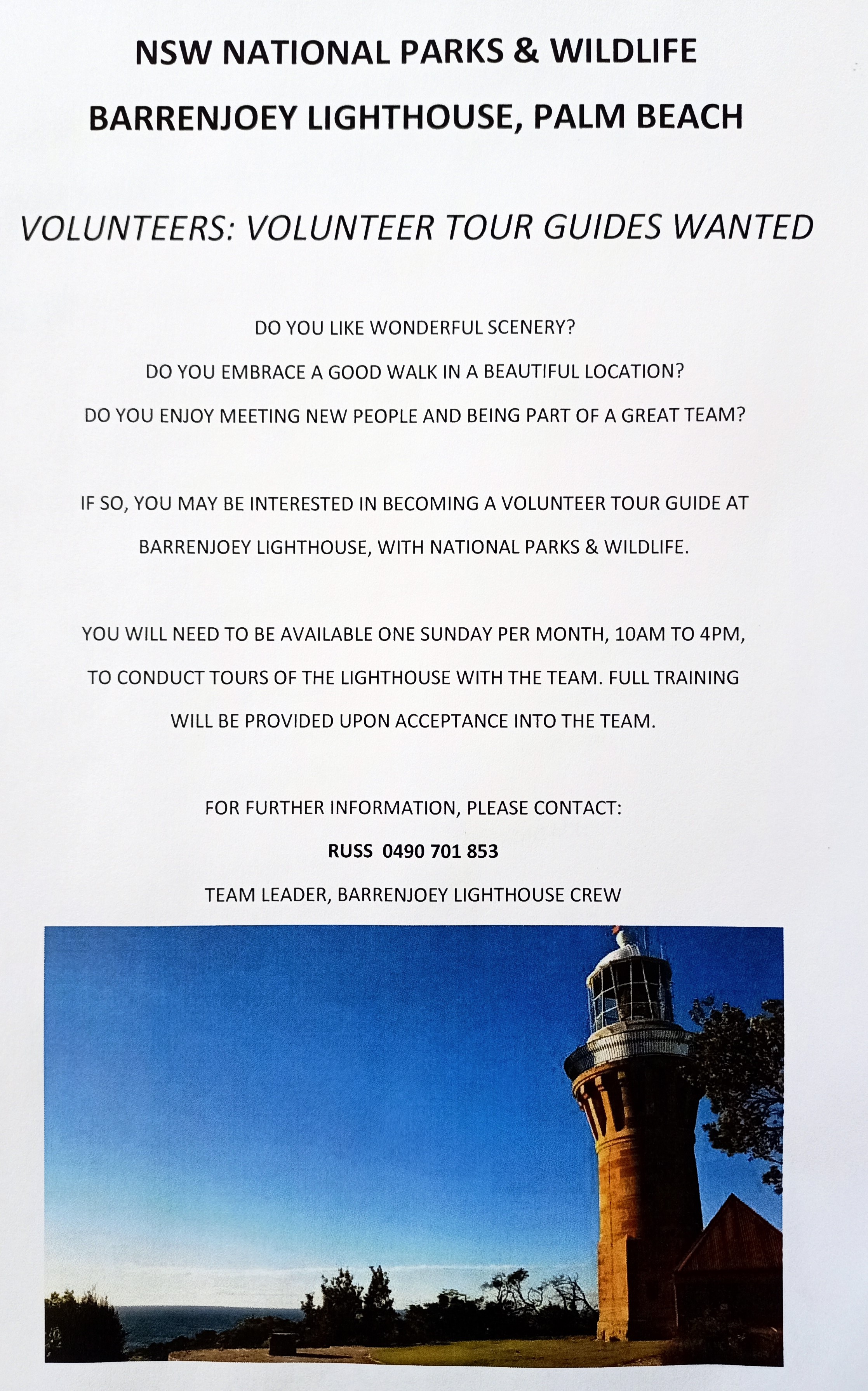
Increase Tree Vandalism Penalties: NSW Parliamentary Petition
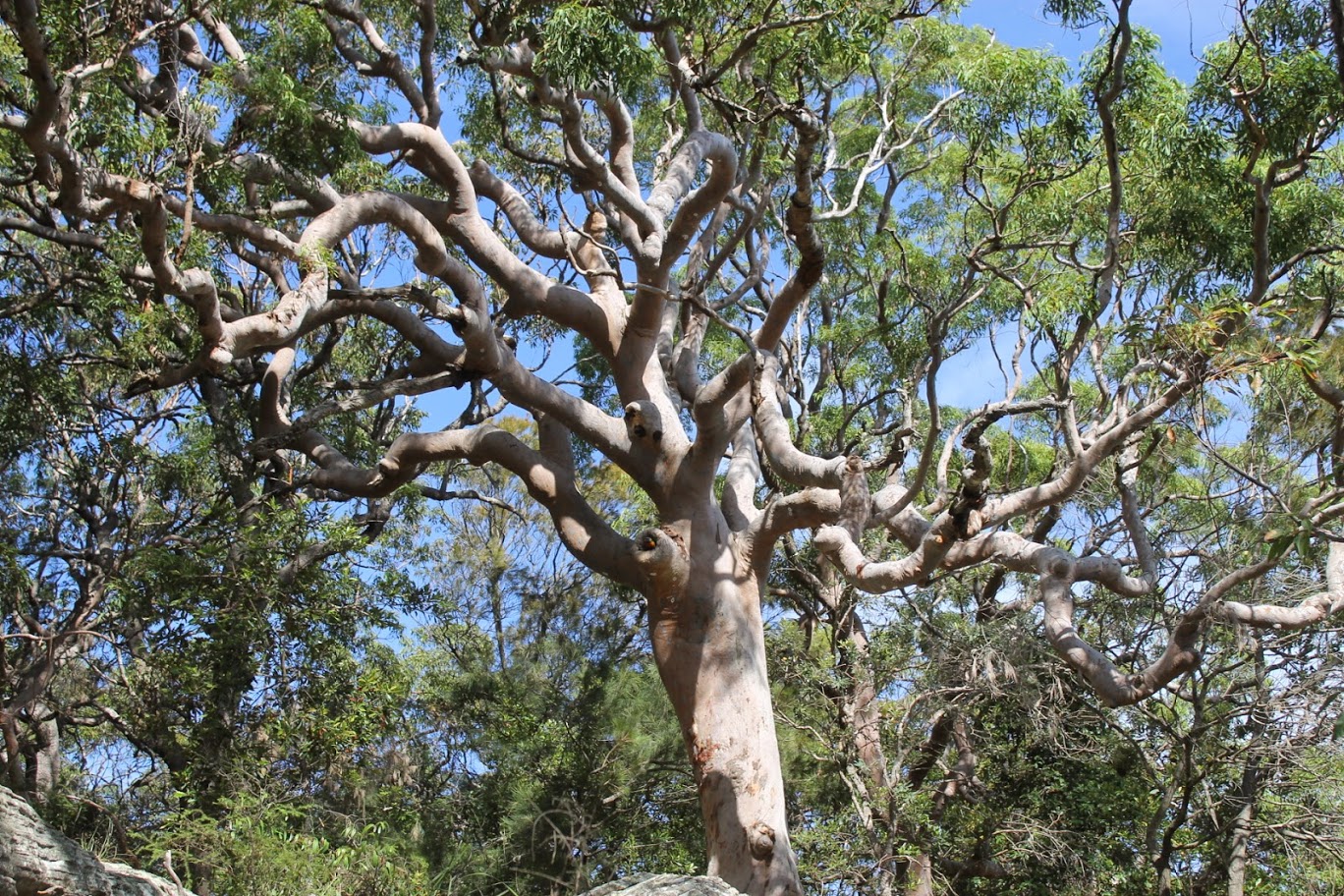
.jpg?timestamp=1708790130470)
Proposal To Destroy And Burn Forest Bad For Nature And The Climate: NCC
- Clearing rates have increased almost 13-fold from an annual average rate of 2,703ha a year under the old laws to 37,745ha under the new laws
- Biodiversity in 9 out of 11 regions is now at risk
- Unexplained clearing has increased, with the NRC concluding “compliance frameworks are inadequate and high rates of clearing pose a major risk”
- Burning green wood chips emits 50% more CO2 per megawatt hour of energy produced than burning coal. See further research here
- The proposal is to use biomass from land that has been cleared, not in forests that are going to regrow.
- Even if the forests did regrow, logged forests store far less carbon than old growth forests, and they can take hundreds of years to sequester the carbon the logged trees stored.
Federal Investigation Into NT Fracking Water Trigger Compliance Welcomed
Koalas, Regent Honeyeaters, Gang-Gang Cockatoos In Yancoal’s Firing Line For New Coal Project Adjoining Nature Reserve
“The revised Project would result in clearance of approximately 113.02 ha… of Koala habitat across the valley floor, reducing the area of habitat and foraging resources available to the species and potentially impacting movement from east to west. Koalas would be displaced over the life of the Project as habitat is progressively cleared. The habitat within the Development Footprint was determined to potentially constitute habitat critical to the survival of the species.”
- Destroy habitat where the national endangered Gang-gang Cockatoos and several other threatened native species have been recorded
- Dig four open cut coal pits in a unique valley surrounded on three sides by Munghorn Gap Nature Reserve.
- Contribute around 65 million tonnes of carbon emissions into the atmosphere.
Cumberland Plain Conservation Plan To Facilitate Housing 'Enhanced' - March 18 2024 Update
- updating planning controls to clarify that CPCP avoided land, such as koala corridors, should be zoned C2 Environment Conservation Zone (or similar) at the planning proposal stage
- publishing koala fencing guidelines so landholders, developers and consent authorities are clear on best-practice design and expected locations of koala exclusion fencing
- providing precinct planning level guidance on protecting native vegetation. This includes the benefits of co-locating green space and parks with existing vegetation to reduce urban heat effects and support more liveable communities
- committing an additional $2.5 million to deliver the new Caring for Country Strategy, which will enable Aboriginal communities to deliver programs to benefit their communities.
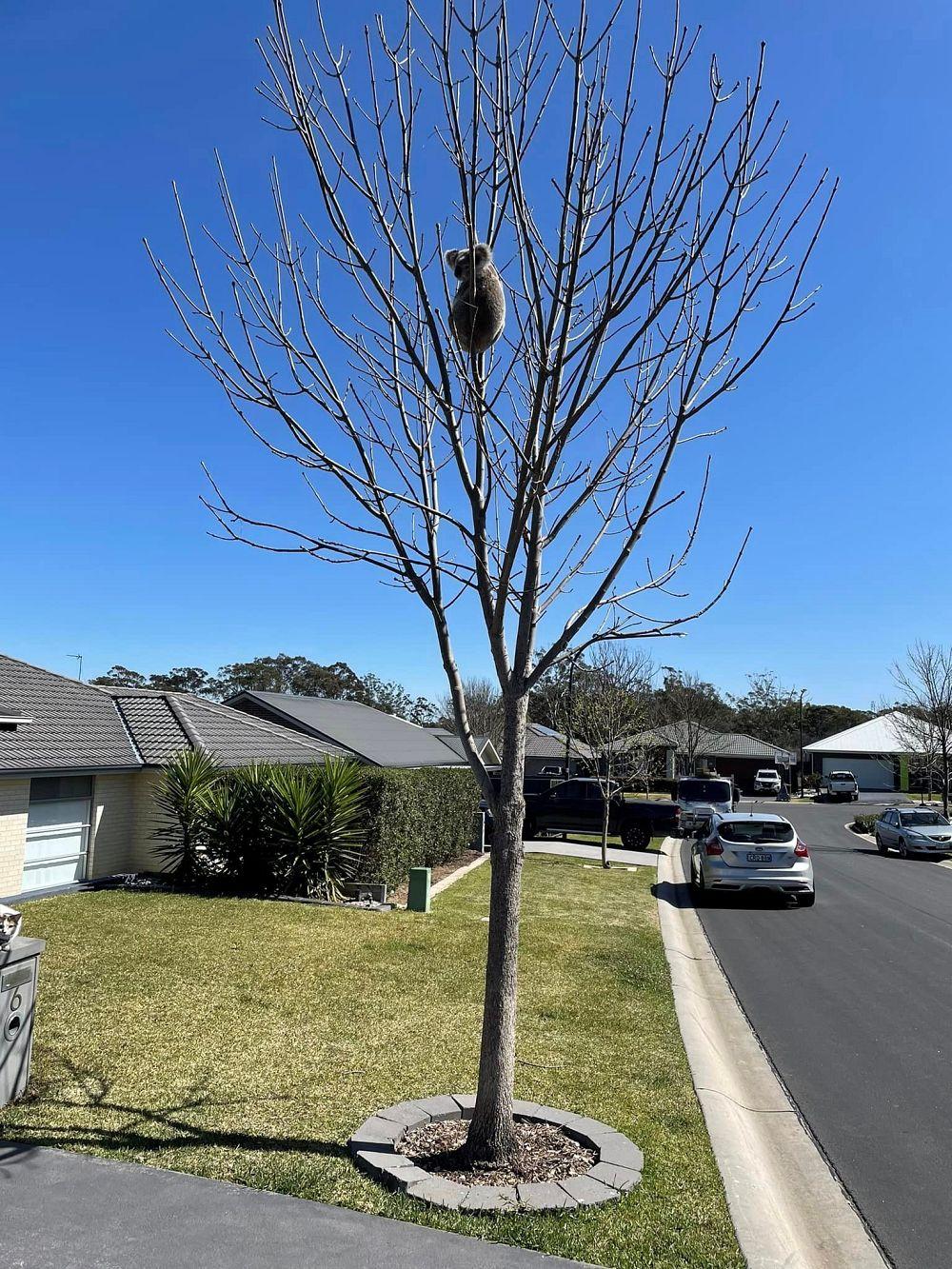
- Saving Sydney's Koalas Requires Scrapping The Cumberland Plain Tree Museum Plan According To 25 Organisations: October 2023 Update
- Ringtail Posse 8: September 2023 - Saving Sydney's Last Koalas; Logging Stopped In Future Koala Park By Minns Government - ''Is There Time To Save Sydney's Last Koalas Too?'' Asks: John Illingsworth, WIRES, Sydney Wildlife Rescue, Save Sydney Koalas, The Sydney Basin Koala Network, The Help Save The Wildlife & Bushlands In Campbelltown Group, Appin Koalas Animal Rescue Service, Patricia and Barry Durham, Sue Gay, Save Mt. Gilead, Paola Torti Of The International Koala Intervention Group
- Local MP's Call For Halt On Habitat Logging In State Forests: Logging Continues Within So-Called 'Great Koala Park' - 20% To Be Destroyed Before Koala Park Even Established Under RFA's That Run Until 2048 In NSW, Meanwhile, More Habitat Of Last Population Of Sydney Koalas To Be Razed For Profit - September 2023
- NSW Government 'Fast-Tracks' Destruction Of Endangered Wildlife, Habitat For Local Species and Community Consultation On Massive New Developments - November 2022
- Finalised Cumberland Plain Plan Released: 'A Developers Plan That Will Facilitate Extinction Of Sydney's Koalas' Locals State - A 'Tree Museum Plan' For Critically Endangered Woodplain - August 2022
- Bayview Koala Sanctuary - August 2012 History page
- Saving Ballina’s Koalas – Will Pittwater’s Mistakes Be Repeated? - March 2015
- Community Calls On Government To Put Koalas Before Developers For Once - June 2016; Mt. Gilead, Appin Road losses
- These Two Koalas Lost Their Mothers To Deforestation - November 2018 + Greater Macarthur 2040 Plan
- Mount Gilead Development Bulldozing Koala Habitat Approved: Resident Turtles To Go Too - The Beginning Of The End Of Campbelltown's Koalas - July 2019
- Summer Creature Features; Koala - Treed - 2012
- Saving Ballina’s Koalas – Will Pittwater’s Mistakes Be Repeated? - March 2015
- Koala Plans Receive Federal Government Approval - Ballina Highway; Update deliberate Destruction of Koalas Chosen - August 2016
- More Than 2.2 Million Hectares Of NSW Koala Habitat Could Be Cleared - October 2016 Pittwater Online Environment News
- Koala Sighted In Kosciuszko National Park for first time in 70 years - December 2016 Pittwater Online Environment News
- Australia: Place Of The Culling Fields, Koala Skins for Profit - August 2017
- Pacific Highway Koala Holocaust: Koala habitat destroyed - October 2017
- Koalas Now Safer Thanks To New Pacific Highway Signs - Ballina Highway upgrade: 110 hectares of koala food trees planted, now they only have to NOT be hungry while they grow - February 2018
- Environment Groups Call On Premier To Halt Logging In Core Koala Habitat; Gladstone State Forest, near Bellingen - February 2018
- Berejiklian Government Allows Open Slather On Wildlife - March 2018
- Old Growth Forest Under Attack As NSW Government Winds Back Environmental Protections - May 2018
- New Analysis Shows Government’s Koala Reserve System Offers The Species Virtually No New Protection - June 2018 Pittwater Online Environment News
- Community Calls On Government To Put Koalas Before Developers For Once - Mount Gilead Development - June 2018
- Destructive Logging Laws Slammed By Government Scientists; 99% of koala habitat at risk from clearing - November 2018 Pittwater Environment News
- These Two Koalas Lost Their Mothers To Deforestation - December 2018 Pittwater Online Environment News
- As The Dust Of The Election Settles, Australia’s Wildlife Still Needs A Pathway For Recovery - May 2019
- A Report Claims Koalas Are ‘Functionally Extinct’ – But What Does That Mean? - May 2019
- Mount Gilead Development Bulldozing Koala Habitat Approved: Resident Turtles To Go Too - The Beginning Of The End Of Campbelltown's Koalas - July 2019 - Pittwater Online Environment News
- Fires Last Straw For Koalas: Extinction Now Imminent Unless You Speak Up - November 2019
- School Strike 4 Climate At Narrabeen: December 13, 2019 - Bushfires - wildlife deaths
- Call For Pittwater Support To Save Sydney's Koalas - August 2020
- Our Koalas Need A Win! - August 2020
- Good News For Koalas This Week From NSW Government: The New Guula Ngurra National Park Has Been Proclaimed + The Cumberland Plain Conservation Plan Is Now Open For Feedback - August 2020
- Koala Extinction In NSW: The Facts And Directions For Action - Community Forum At Warriewood - March 2021
- Pittwater Action To Save Koalas: What You Can Do To Help Prevent Their Extinction - April 2021
- Sydney's Last Koala Population Being Killed As Mount Gilead Development Cuts Down Trees With No Fauna Passes Or Protections In Place: Pittwater Demonstration Falls On Deaf Ears - December 2021 to January 2022
- Koalas Now Listed As Endangered In NSW - Qld - ACT - February 2022
- Residents Rally For Koalas At Manly On Save The Koala Day: Calls To Prioritise Wildlife, Stop Clearing Habitat - October 2022
New Research Shows Koalas In The Sydney Basin Are In Decline: NSW State Government Seeking Feedback On Reviewing The NSW Koala Strategy
- Overall, the proportional area where koalas are found in the Sydney Basin has slightly declined and there are fewer areas supporting long-standing breeding populations.
- The geographic extent (Extent of Occurrence) of koalas across the Sydney Basin has remained relatively stable from 2021 – 2023, though with a slight overall trend towards decline (0.75%). This represents a decrease of 35,857ha.
- The proportion of this extent which is occupied by koalas (Area of Occupancy) across the Sydney Basin shows a small but significant decline from 12.81% ± 0.18% (2021) to 12.55% ± 0.13% (2023).
- Areas of Generational Persistence (long standing source populations) across the Sydney Basin are dynamic, though there is an overall decrease in the number of cells of Generational Persistence between the time frames 2021 (n = 141) and 2023 (n = 125).
- When considering the six Focal Areas, patterns are variable with some areas showing small increases or relative stability e.g. Hawkesbury LGA and Liverpool LGA respectively, while other areas show significant declines e.g. Cessnock LGA and Wingecarribee LGA.
- The results of this study may be impacted by delays in entering koala sightings records into government databases, though we note that significant decreases in Cessnock occur despite high numbers of records.
- The majority of relevant councils still have no Comprehensive Koala Plan of Management (KPoM) in place.
- Disparities in koala protection remain, with progress towards returning to a single State Environmental Planning Policy (SEPP) for koalas stalled.
- The new Labor government has not detailed its plans for environmental reform, including in relation to its commitments around land clearing and biodiversity offsets, and is still preparing its response to the 5-year statutory reviews of the BC Act and Part 5A of the Local Land Services Act 2013 (NSW) (LLS Act).
- The Commonwealth government continues to work on legislative reform to the Commonwealth Environment Protection and Biodiversity Conservation Act 1999 (EPBC Act), yet progress is slow and, at this stage, it is still unclear how the reforms will ensure improvements in threatened species conservation, including koalas.
- Finalise the Koala SEPP Guideline - applying a full list of koala habitat trees to rural and urban land.
- Add all LGAs in the Sydney Basin with koala sightings to the Koala SEPP i.e. Sutherland Shire, Penrith, and Hills Shire.
- Give recognised koala corridors legal protection e.g. via relevant SEPP changes, by following Chief Scientist recommendations to protect, restore, and zone appropriately sized corridors as conservation land (C2).
- Reform the Cumberland Plain Conservation Plan
- Scrap the Rural Boundary Clearing Code (RBCC) in the Sydney Basin Bioregion, to prevent further fragmentation of koala habitat.
- Urgently adopt interim controls on koala habitat in Areas of Regional Koala Significance (ARKS) to prevent clearing of koala habitat across public, and private land.
- Fund councils via NSW Koala Strategy to develop Comprehensive Koala Plans of Management (CKPoM) ensuring all councils have a CKPoM in place.
- Reform the Local Land Services (LLS) Act to end code based clearing and strictly limit allowable activities on koala habitat.
- Reform the Biodiversity Conservation Act (BCA) and Biodiversity Offsets Scheme (BOS) to strengthen protection for koalas (and other species).
- Support Wildlife Rescue Groups to enable timely data to be uploaded to Bionet.
- Incorporate wildlife mitigation measures such as overpasses and underpasses into plans for all new roads and upgrades.
- Undertake a strategic supply plan to reduce ad-hoc quarry development on koala habitat.
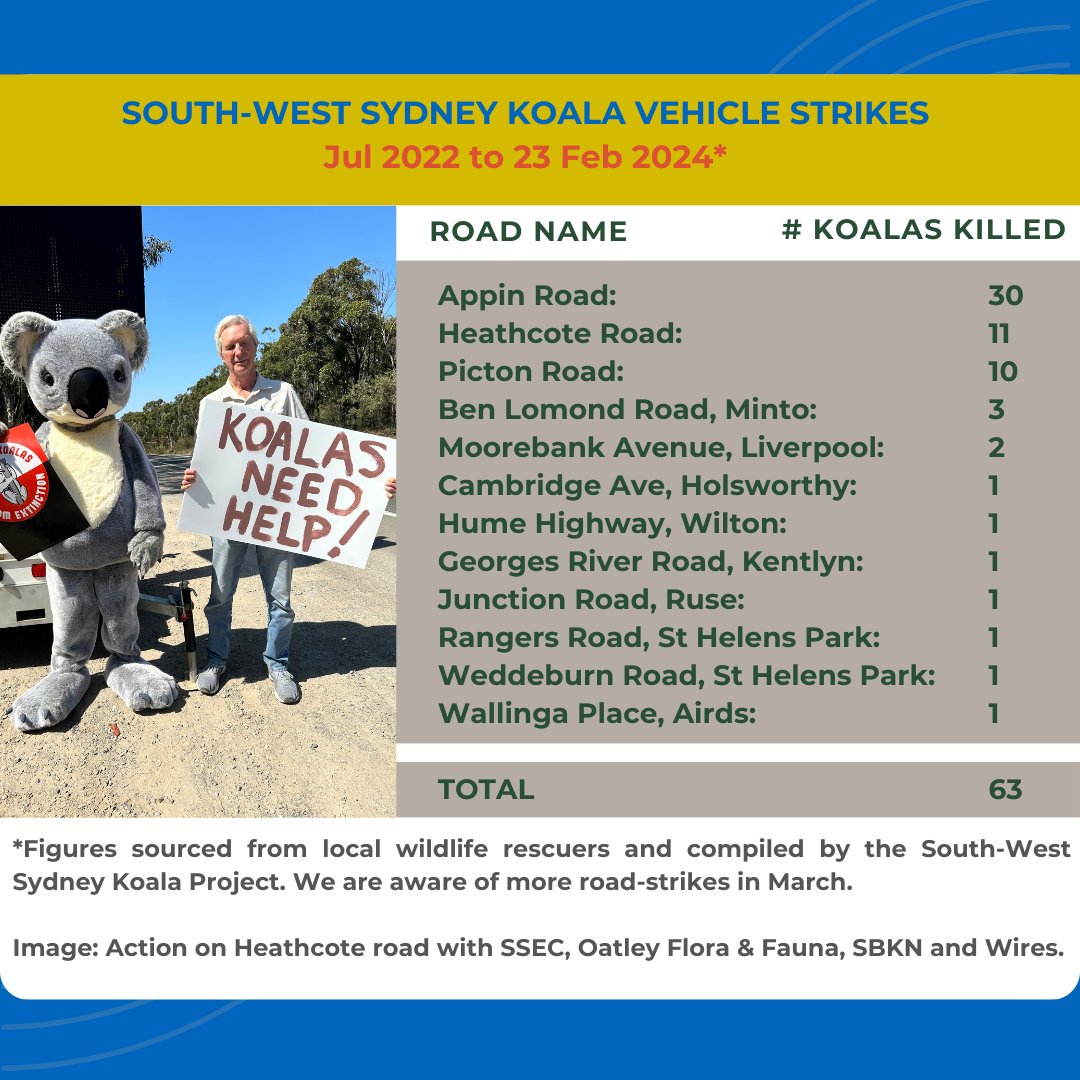
New NSW Solar Farm To Power 200,000 Homes
First Platypus Translocation In NSW Results In Breeding Success
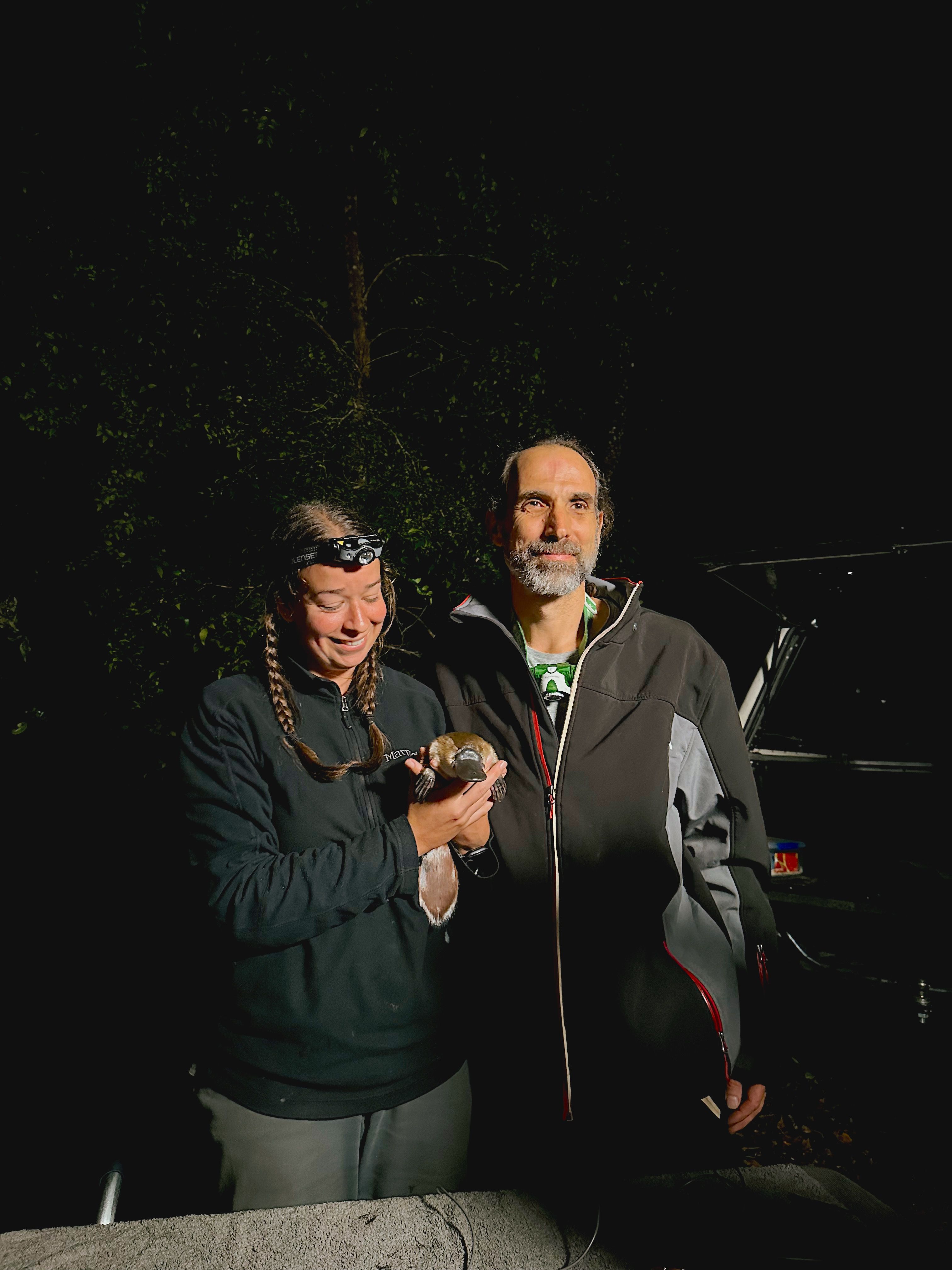
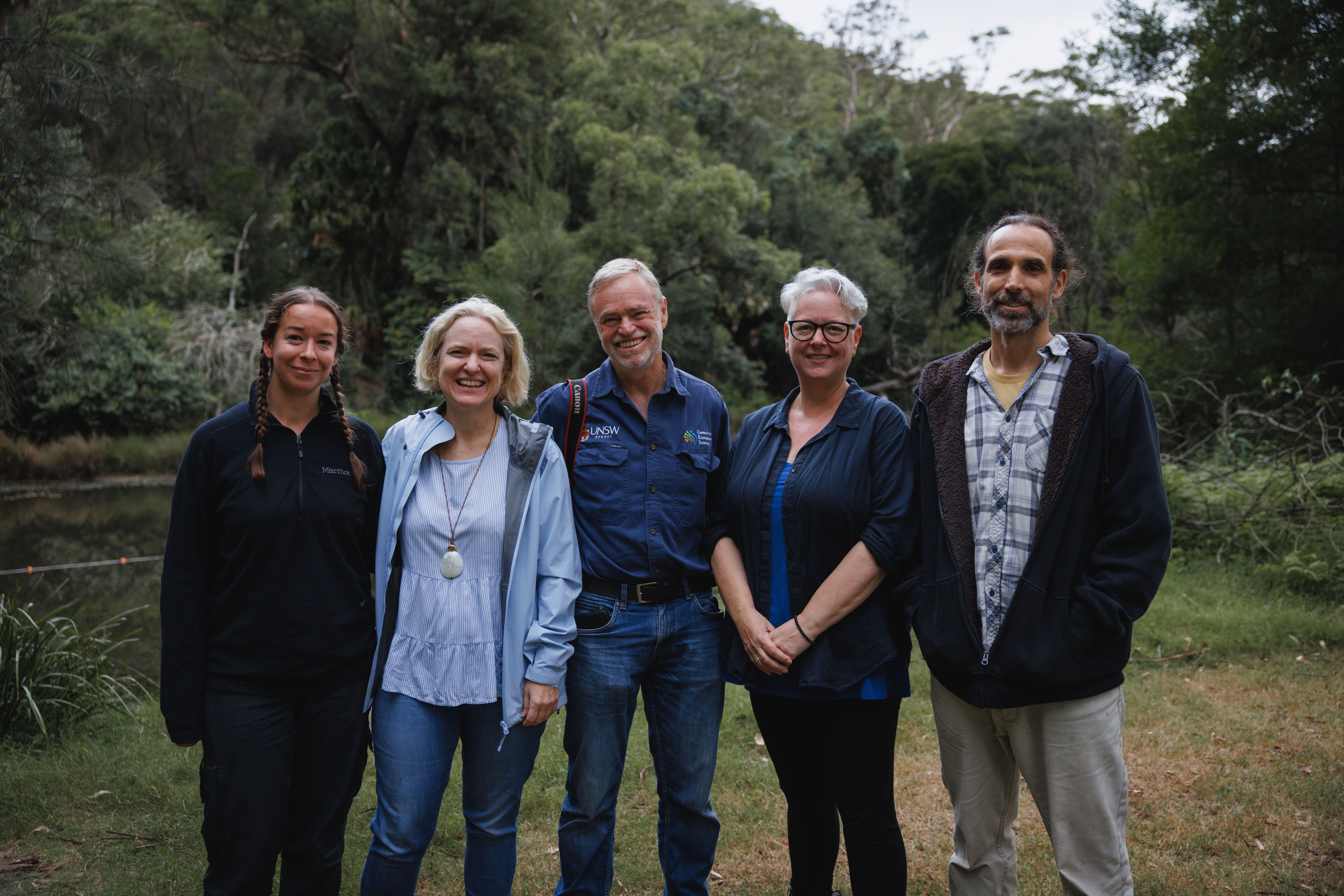
Saving The Booroolong Frog No Croaking Matter: Indications Saving Our Species-Taronga Program Is Working
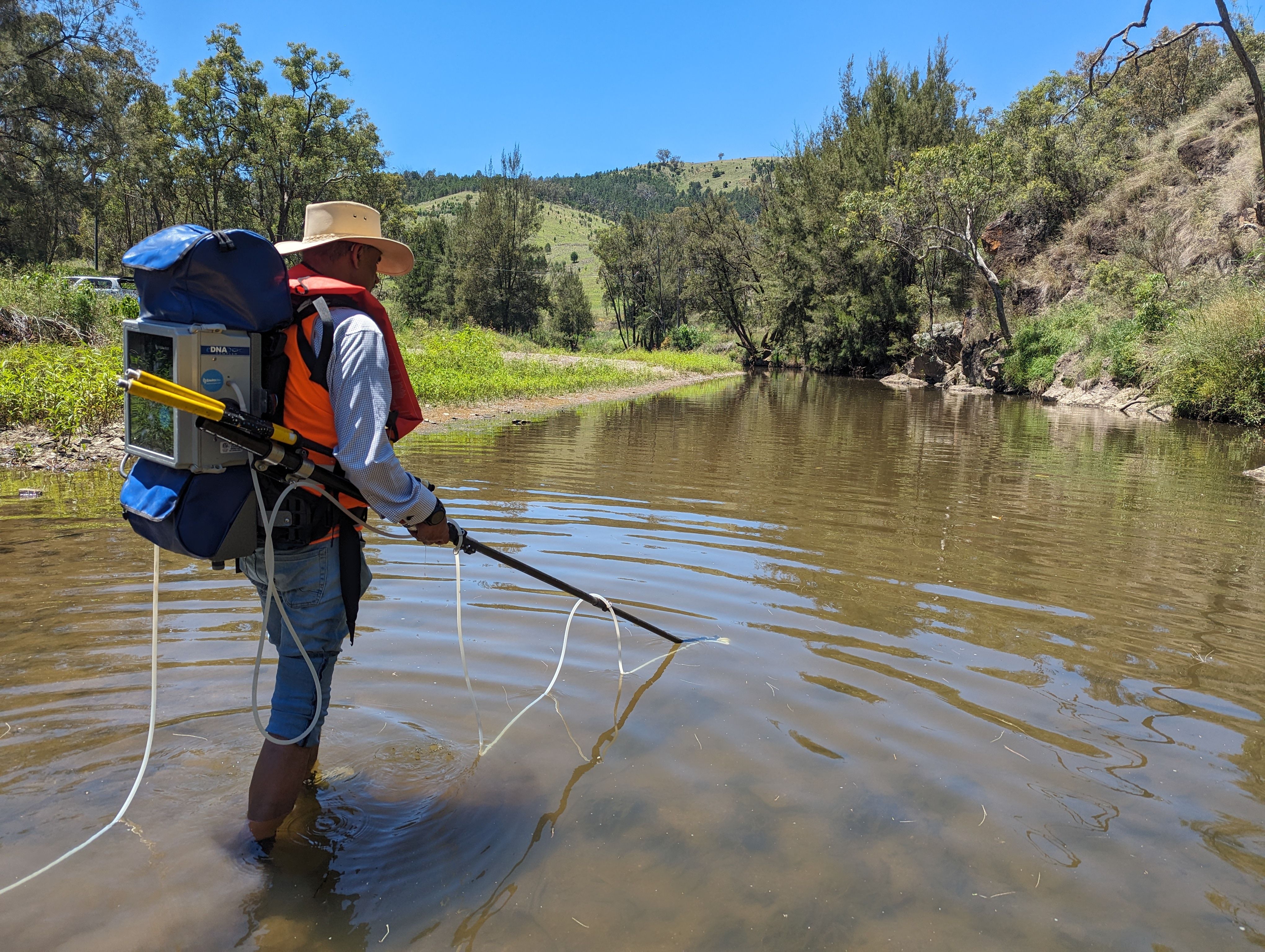
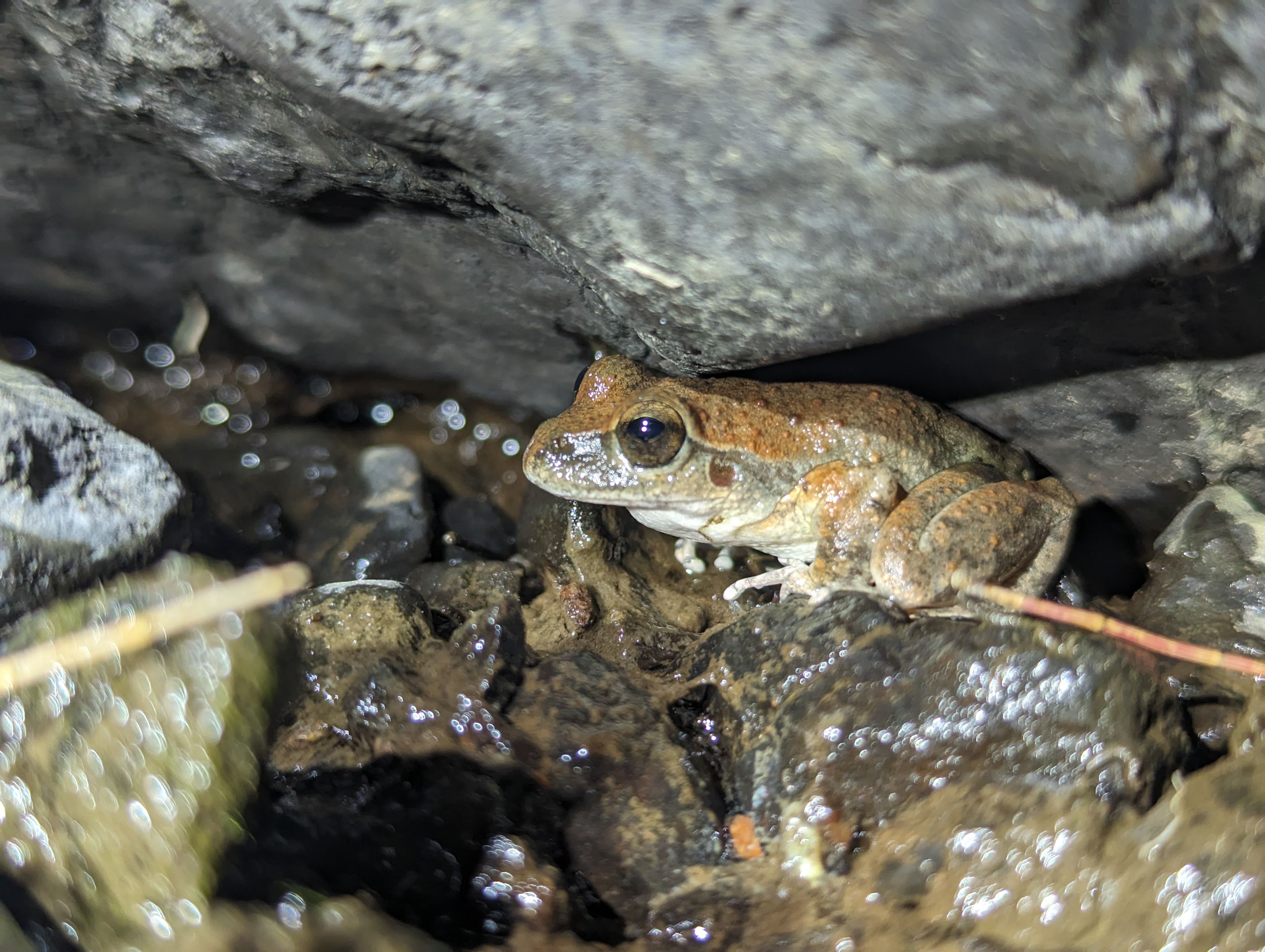
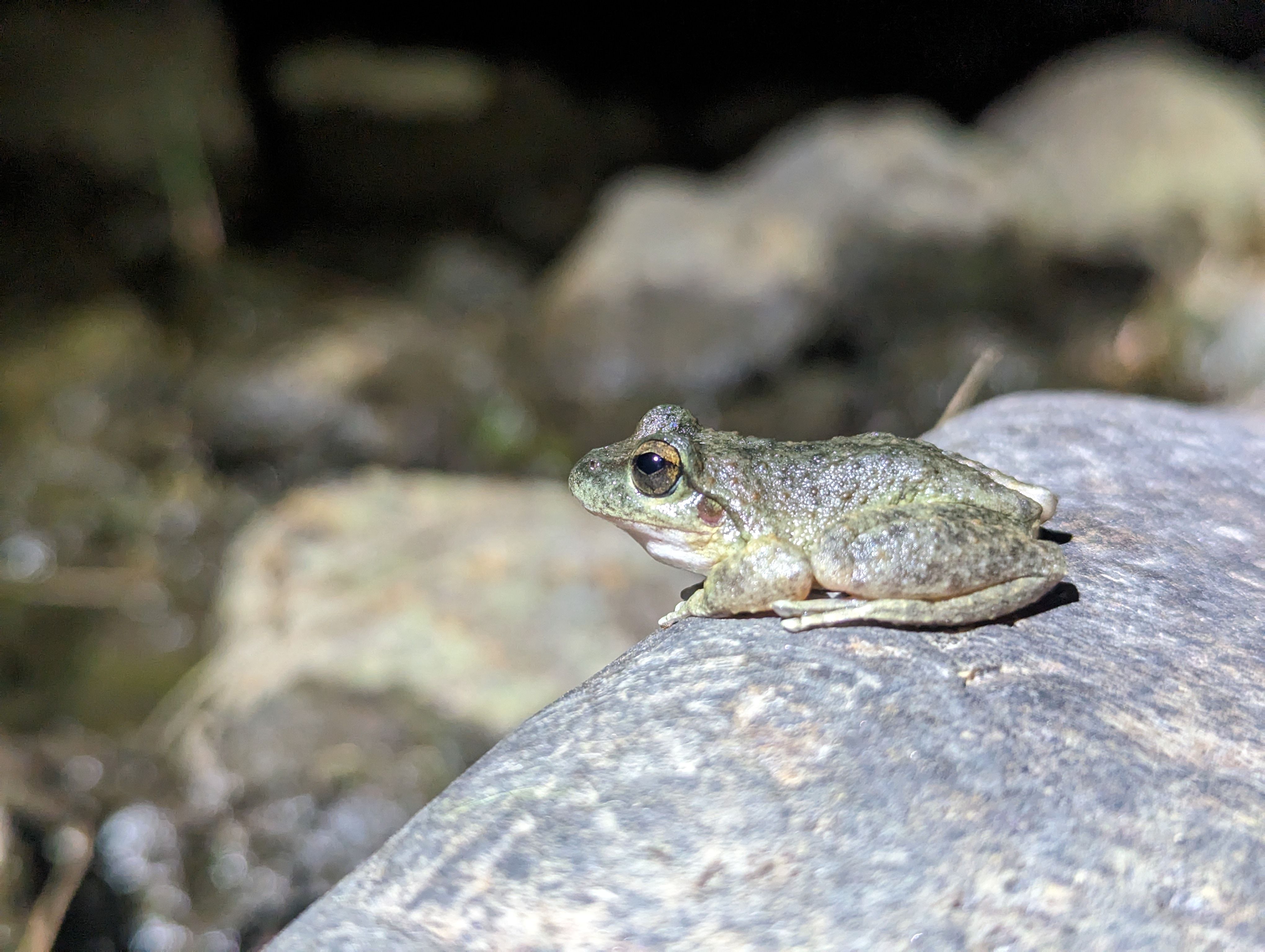
Iconic Byron Bay Locations Have Dual Aboriginal Name Added
Eastern Blue Groper Changes: Have Your Say
Iconic Blue Groper Now Protected In NSW
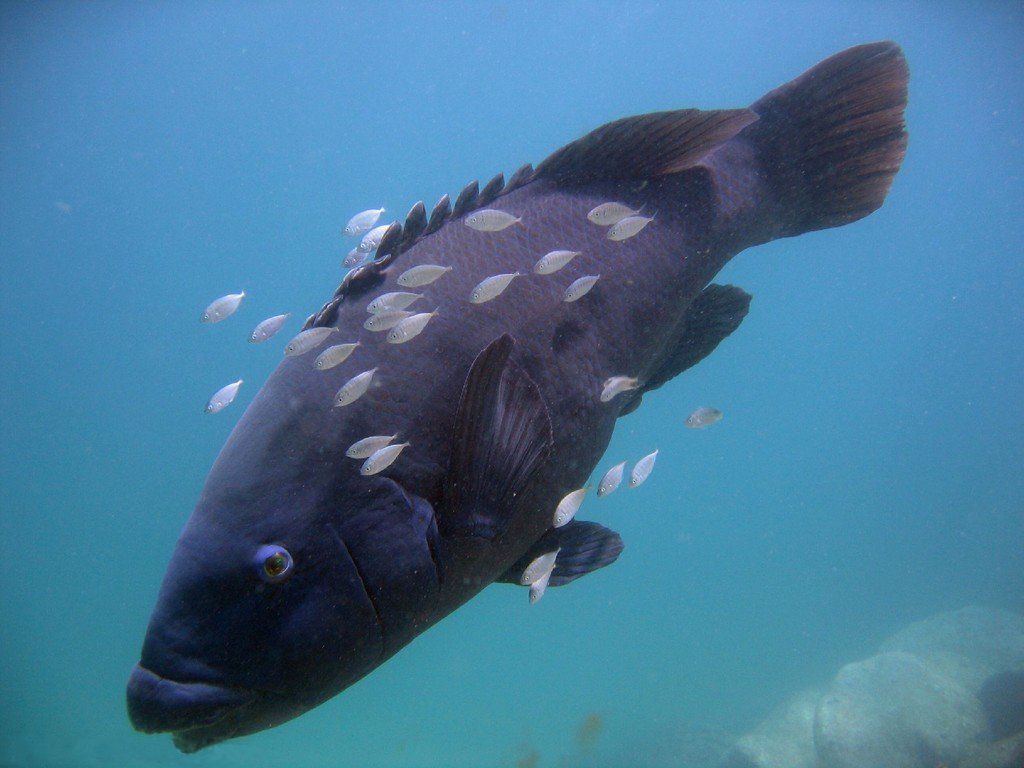
Harvest Seeds & Native Plants: Education Sessions 2024 - "The Harvest Huddle"
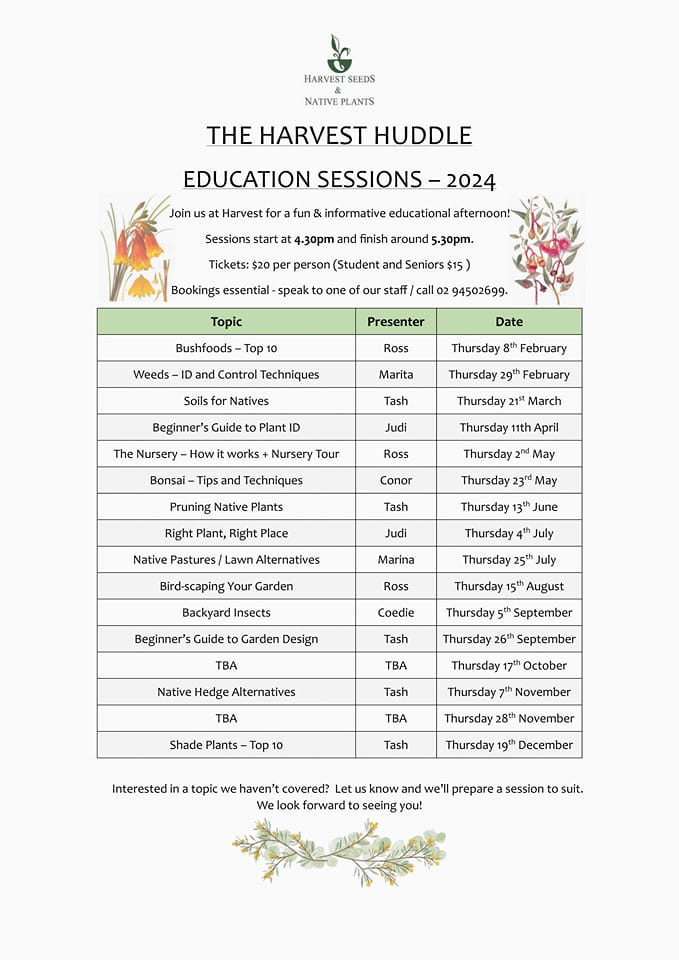
Upcoming Events At Permaculture Northern Beaches
 Saving Our Seeds is a crucial part of our own food chain and it enables us to grow our own food and plants with no additional costs! The strongest seeds are locally grown over many generations and well adapted to local conditions - so your plants will thrive while you save on costs. Join us with seed-saving guest speakers Mylene Turban, and Elle Sheather to have an overview and to inspire you to get seed-saving!
Saving Our Seeds is a crucial part of our own food chain and it enables us to grow our own food and plants with no additional costs! The strongest seeds are locally grown over many generations and well adapted to local conditions - so your plants will thrive while you save on costs. Join us with seed-saving guest speakers Mylene Turban, and Elle Sheather to have an overview and to inspire you to get seed-saving!About

Stony Range Nursery
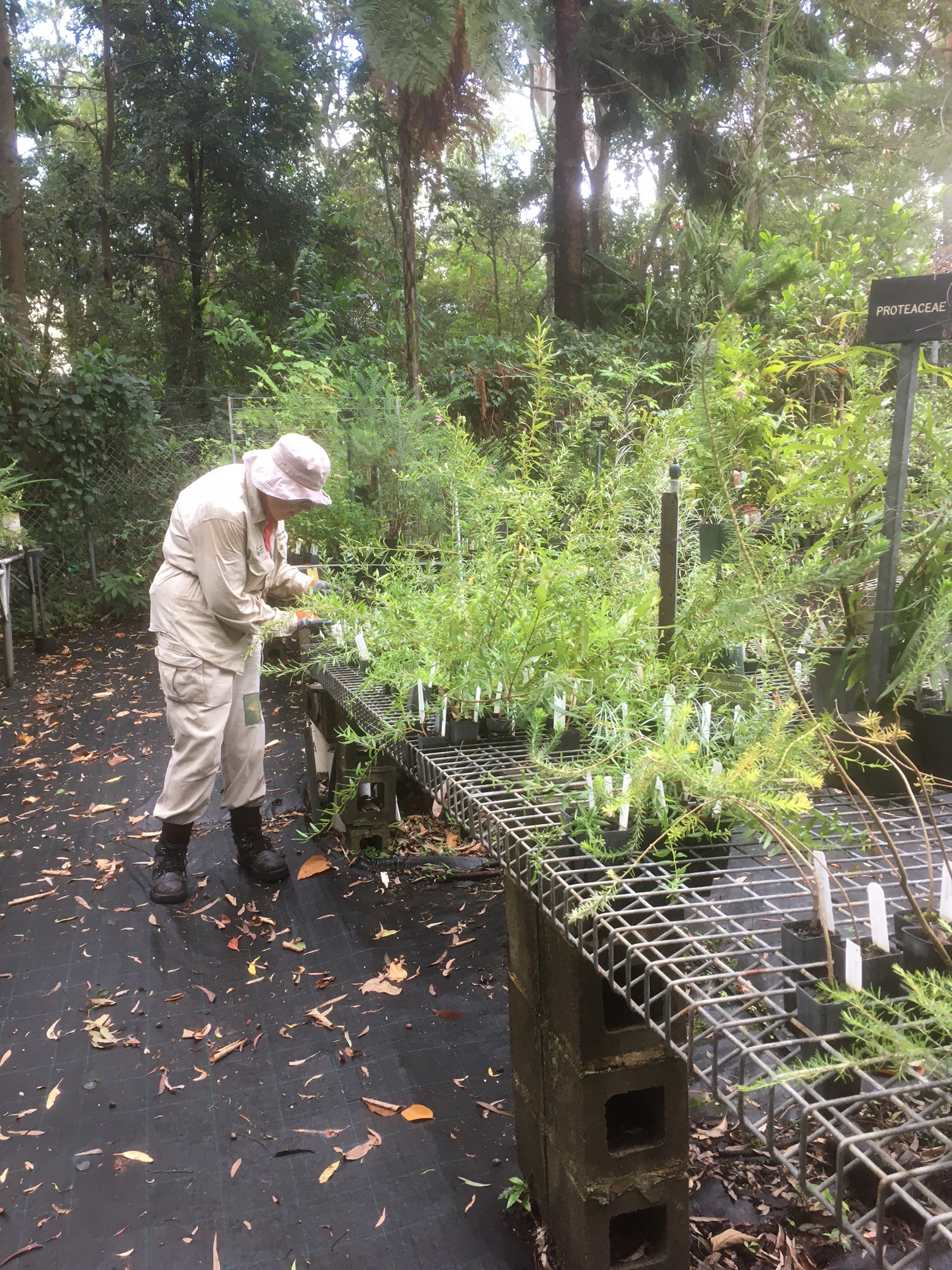
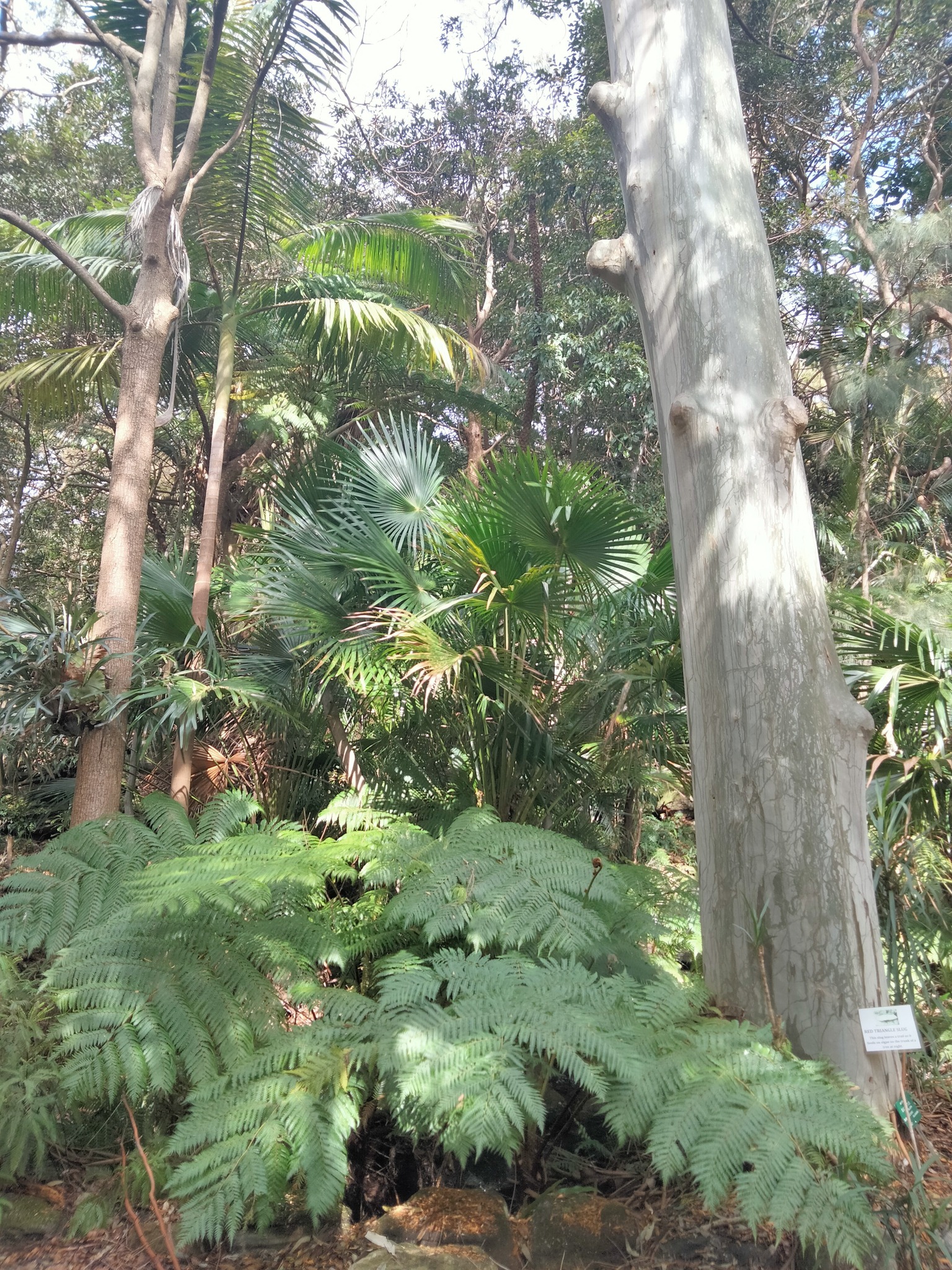
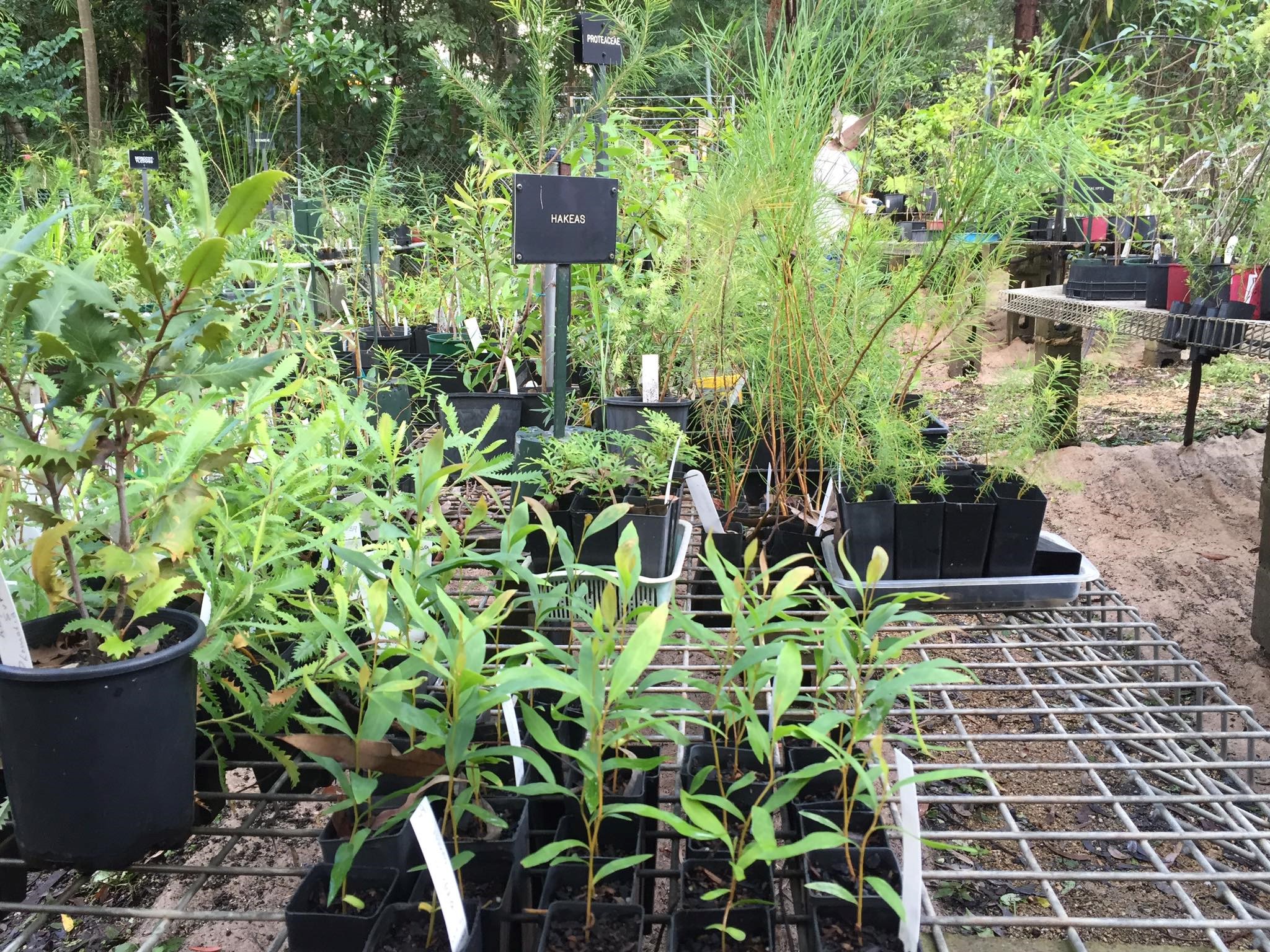
Stay Safe From Mosquitoes
- Applying repellent to exposed skin. Use repellents that contain DEET, picaridin, or oil of lemon eucalyptus. Check the label for reapplication times.
- Re-applying repellent regularly, particularly after swimming. Be sure to apply sunscreen first and then apply repellent.
- Wearing light, loose-fitting long-sleeve shirts, long pants and covered footwear and socks.
- Avoiding going outdoors during peak mosquito times, especially at dawn and dusk.
- Using insecticide sprays, vapour dispensing units and mosquito coils to repel mosquitoes (mosquito coils should only be used outdoors in well-ventilated areas)
- Covering windows and doors with insect screens and checking there are no gaps.
- Removing items that may collect water such as old tyres and empty pots from around your home to reduce the places where mosquitoes can breed.
- Using repellents that are safe for children. Most skin repellents are safe for use on children aged three months and older. Always check the label for instructions. Protecting infants aged less than three months by using an infant carrier draped with mosquito netting, secured along the edges.
- While camping, use a tent that has fly screens to prevent mosquitoes entering or sleep under a mosquito net.
Mountain Bike Incidents On Public Land: Survey
- Mountain Bike Incidents On Public Land: Survey Launched To Gather Data On What's Happening To Public Parks - Community Land - Bush Reserves In Pittwater
- Mother Brushtail Killed On Barrenjoey Road: Baby Cried All Night - Powerful Owl Struck At Same Time At Careel Bay During Owlet Fledgling Season: calls for mitigation measures - The List of 'What You can Do' as requested
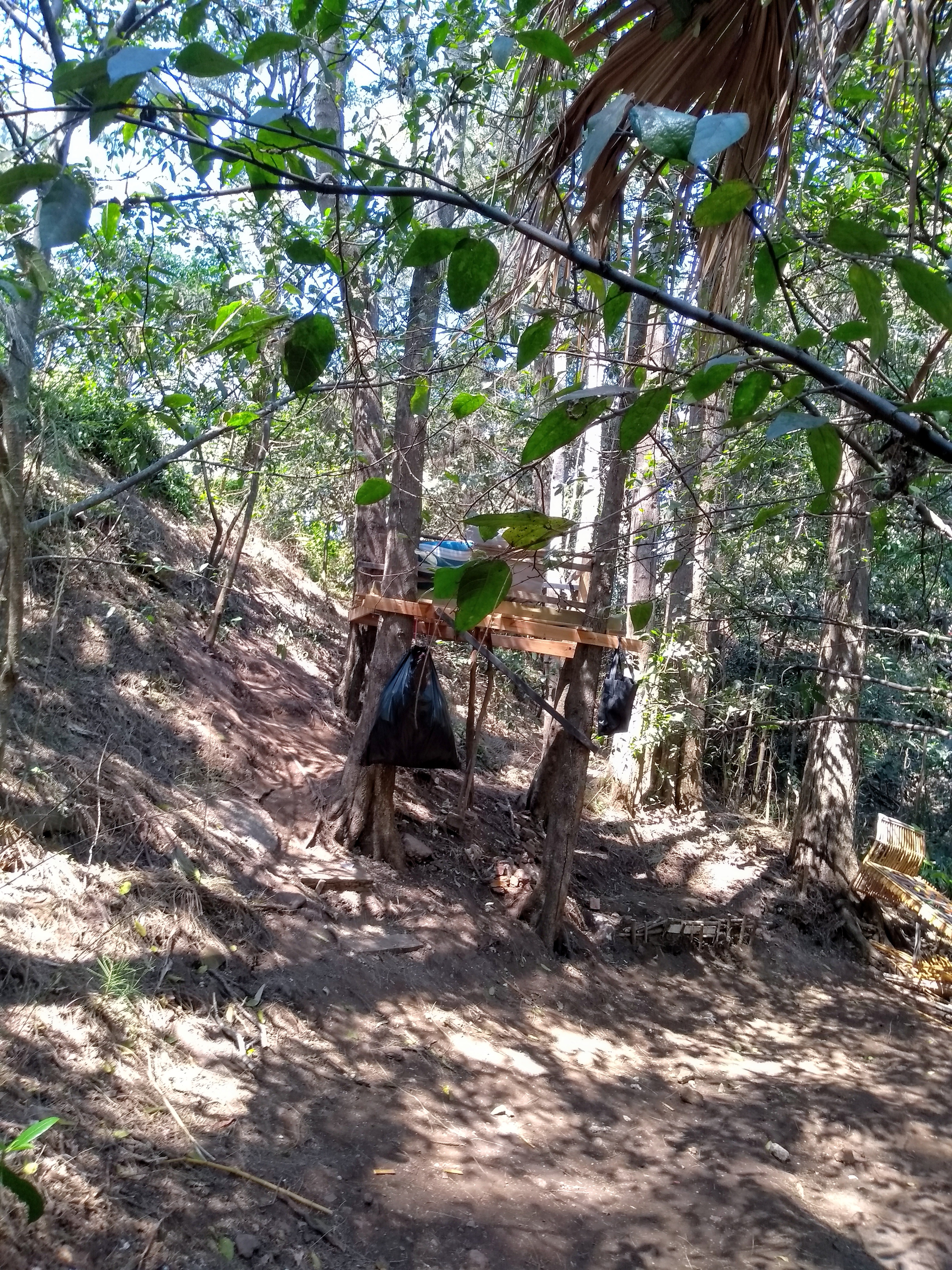
Please Look Out For Wildlife During Heatwave Events

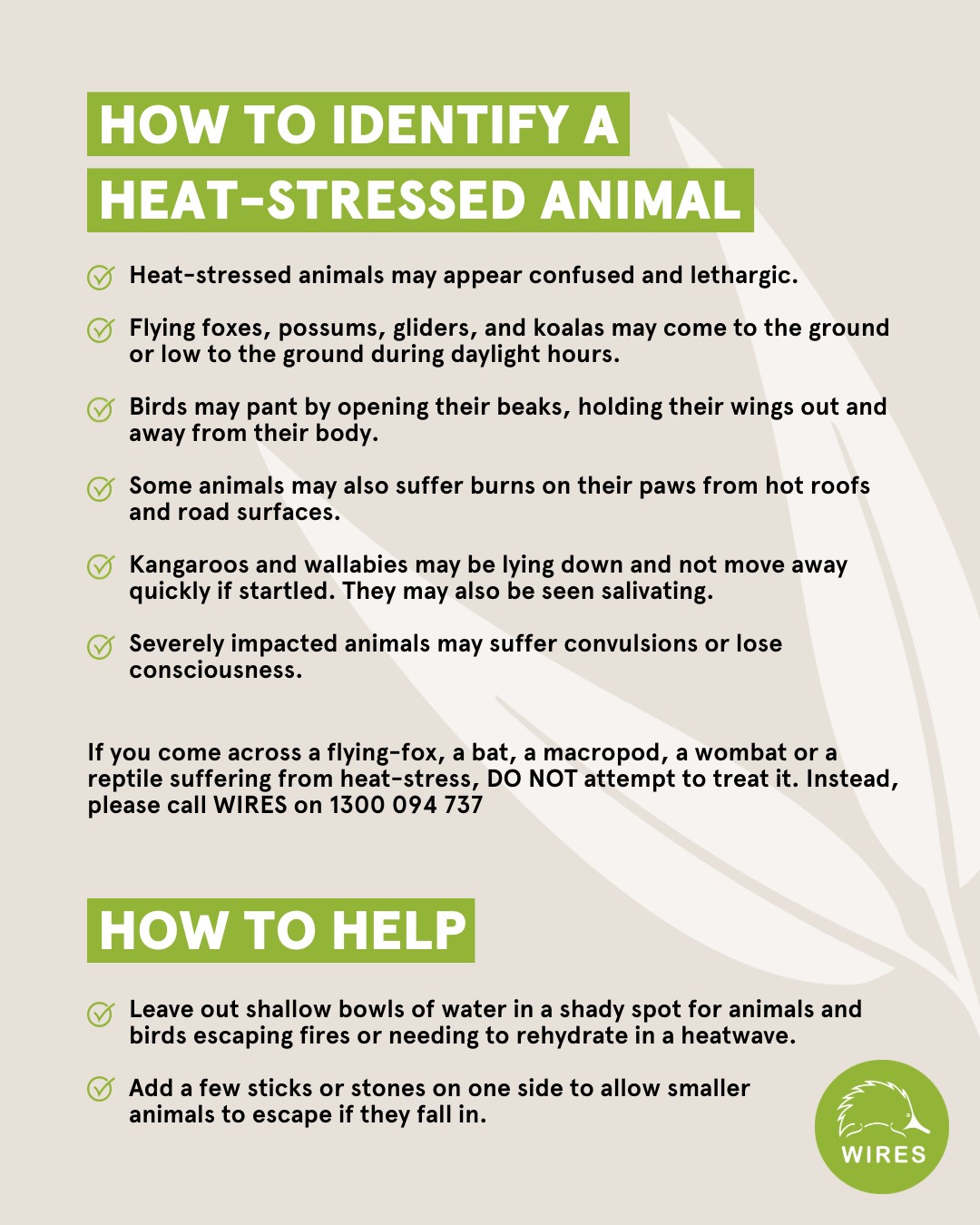
Palmgrove Park Avalon: New Bushcare Group
 Palmgrove Park Avalon is a remnant of the Spotted Gum forest that was once widespread on the lower slopes of the Pittwater peninsula. This bushland’s official name and forest type is Pittwater and Wagstaffe Endangered Ecological Community, endangered because so much has been cleared for suburban development. Canopy trees, smaller trees and shrubs, and ground layer plants make up this community. Though scattered remnant Spotted Gums remain on private land, there is little chance of seedlings surviving in gardens and lawns. More information HERE
Palmgrove Park Avalon is a remnant of the Spotted Gum forest that was once widespread on the lower slopes of the Pittwater peninsula. This bushland’s official name and forest type is Pittwater and Wagstaffe Endangered Ecological Community, endangered because so much has been cleared for suburban development. Canopy trees, smaller trees and shrubs, and ground layer plants make up this community. Though scattered remnant Spotted Gums remain on private land, there is little chance of seedlings surviving in gardens and lawns. More information HERE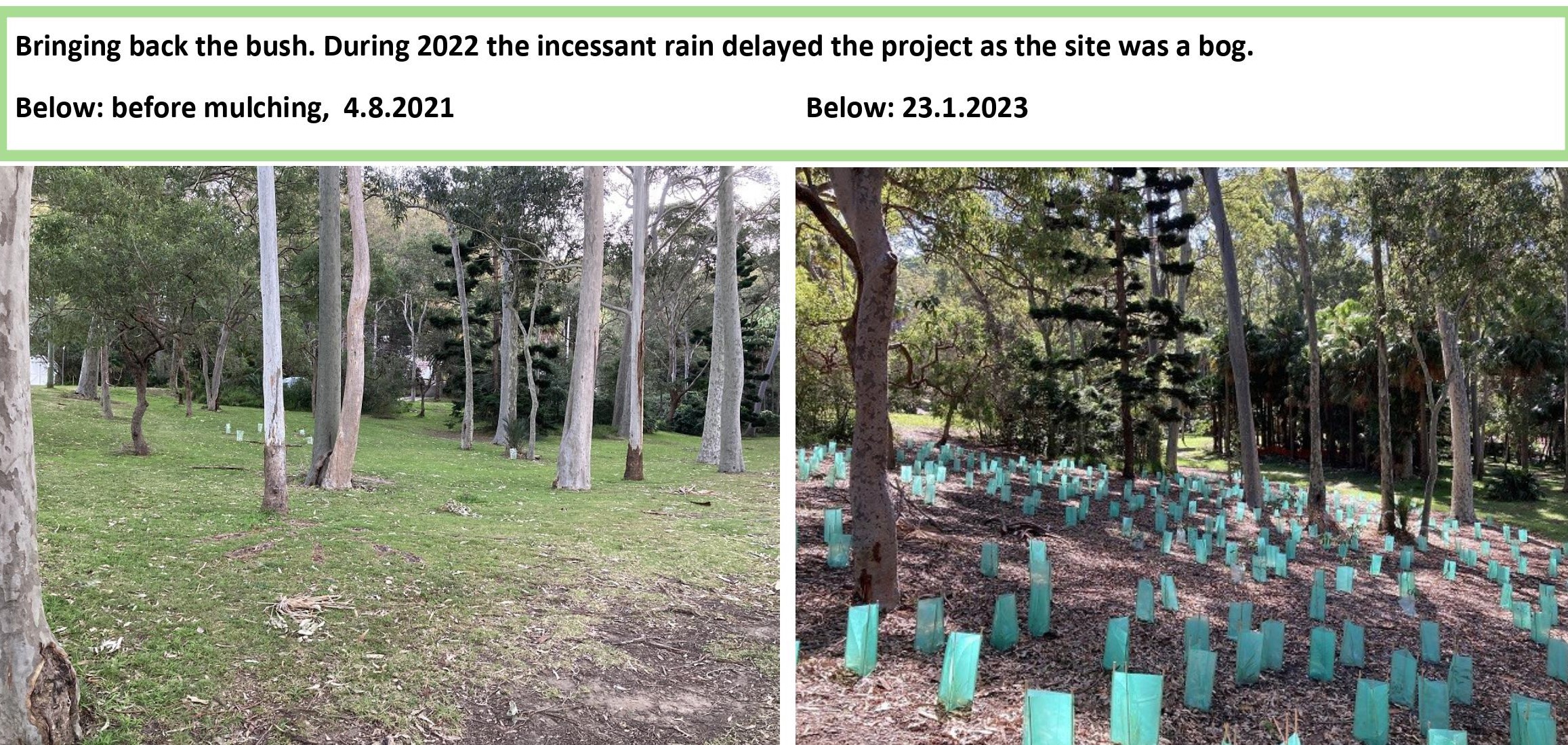
Report Fox Sightings
%20(1).jpg?timestamp=1675893929686)
Marine Wildlife Rescue Group On The Central Coast
A new wildlife group was launched on the Central Coast on Saturday, December 10, 2022.
Marine Wildlife Rescue Central Coast (MWRCC) had its official launch at The Entrance Boat Shed at 10am.
The group comprises current and former members of ASTR, ORRCA, Sea Shepherd, Greenpeace, WIRES and Wildlife ARC, as well as vets, academics, and people from all walks of life.
Well known marine wildlife advocate and activist Cathy Gilmore is spearheading the organisation.
“We believe that it is time the Central Coast looked after its own marine wildlife, and not be under the control or directed by groups that aren’t based locally,” Gilmore said.
“We have the local knowledge and are set up to respond and help injured animals more quickly.
“This also means that donations and money fundraised will go directly into helping our local marine creatures, and not get tied up elsewhere in the state.”
The organisation plans to have rehabilitation facilities and rescue kits placed in strategic locations around the region.
MWRCC will also be in touch with Indigenous groups to learn the traditional importance of the local marine environment and its inhabitants.
“We want to work with these groups and share knowledge between us,” Gilmore said.
“This is an opportunity to help save and protect our local marine wildlife, so if you have passion and commitment, then you are more than welcome to join us.”
Marine Wildlife Rescue Central Coast has a Facebook page where you may contact members. Visit: https://www.facebook.com/profile.php?id=100076317431064
- Ph: 0478 439 965
- Email: marinewildlifecc@gmail.com
- Instagram: marinewildliferescuecc

Watch Out - Shorebirds About
.JPG.opt1460x973o0,0s1460x973.jpg?timestamp=1663629195339)
Possums In Your Roof?: Do The Right Thing

Aviaries + Possum Release Sites Needed

Bushcare In Pittwater: Where + When
Where we work Which day What time
Avalon
Angophora Reserve 3rd Sunday 8:30 - 11:30am
Avalon Dunes 1st Sunday 8:30 - 11:30am
Avalon Golf Course 2nd Wednesday 3 - 5:30pm
Careel Creek 4th Saturday 8:30 - 11:30am
Toongari Reserve 3rd Saturday 9 - 12noon (8 - 11am in summer)
Bangalley Headland 2nd Sunday 9 to 12noon
Bayview
Winnererremy Bay 4th Sunday 9 to 12noon
Bilgola
North Bilgola Beach 3rd Monday 9 - 12noon
Algona Reserve 1st Saturday 9 - 12noon
Plateau Park 1st Friday 8:30 - 11:30am
Church Point
Browns Bay Reserve 1st Tuesday 9 - 12noon
McCarrs Creek Reserve Contact Bushcare Officer To be confirmed
Clareville
Old Wharf Reserve 3rd Saturday 8 - 11am
Elanora
Kundibah Reserve 4th Sunday 8:30 - 11:30am
 Mona Vale
Mona Vale Mona Vale Beach Basin 1st Saturday 8 - 11am
Mona Vale Dunes 2nd Saturday +3rd Thursday 8:30 - 11:30am
Newport
Bungan Beach 4th Sunday 9 - 12noon
Crescent Reserve 3rd Sunday 9 - 12noon
North Newport Beach 4th Saturday 8:30 - 11:30am
Porter Reserve 2nd Saturday 8 - 11am
North Narrabeen
Irrawong Reserve 2nd Saturday 2 - 5pm
Palm Beach
North Palm Beach Dunes 3rd Saturday 9 - 12noon
Scotland Island
Catherine Park 2nd Sunday 10 - 12:30pm
Elizabeth Park 1st Saturday 9 - 12noon
Pathilda Reserve 3rd Saturday 9 - 12noon
Warriewood
Warriewood Wetlands 1st Sunday 8:30 - 11:30am
Whale Beach
Norma Park 1st Friday 9 - 12noon
Western Foreshores
Coopers Point, Elvina Bay 2nd Sunday 10 - 1pm
Rocky Point, Elvina Bay 1st Monday 9 - 12noon
Friends Of Narrabeen Lagoon Catchment Activities

Gardens And Environment Groups And Organisations In Pittwater
- Ringtail Posse: 1 – February 2023; Anna Maria Monticelli: King Parrots/Water Dragons - Jacqui Scruby: Loggerhead Turtle - Lyn Millett OAM: Flying-Foxes - Kevin Murray: Our Backyard Frogs - Miranda Korzy: Brushtail Possums
- Ringtail Posse: 2 - March 2023; Kevin Murray: Tawny Frogmouth - Kayleigh Greig: Red-Bellied Black Snake - Bec Woods: Australian Water Dragon - Margaret Woods: Owlet-Nightjar - Hilary Green: Butcher Bird - Susan Sorensen: Wallaby
- Ringtail Posse 3 - April 2023: Jeffrey Quinn: Kookaburra, Tom Borg McGee: Kookaburra, Stephanie Galloway-Brown: Bandicoot, Joe Mills: Noisy Miner
- Ringtail Posse 4 May 2023 - Andrew Gregory: Powerful Owl, Marita Macrae: Pale-Lipped Or Gully Shadeskink, Jools Farrell: Whales & Seals, Nicole Romain: Yellow-Tailed Black Cockatoo
- Ringtail Posse 5: June 2023 - Lynleigh Greig OAM: Snakes, Dick Clarke: Diamond Python, Selena Griffith: Glossy Black-Cockatoo, Eric Gumley: Bandicoot
- Ringtail Posse 6: July 2023 - Sonja Elwood: Long-Nosed Bandicoot, Dr. Conny Harris: Swamp Wallaby, Neil Evers: Bandicoot, Bill Goddard: Bandicoot
- Ringtail Posse 7: August 2023 - Geoff Searl OAM: Tawny Frogmouth, Peter Macinnis: Echidna, Peter Carter: Ringtail Possum, Nathan Wellings; Kookaburra
- Ringtail Posse 8: September 2023 - Saving Sydney's Last Koalas; Logging Now Stopped In Future Koala Park By Minns Government - ''Is There Time To Save Sydney's Last Koalas Too?'' Asks: John Illingsworth, WIRES, Sydney Wildlife Rescue, Save Sydney Koalas, The Sydney Basin Koala Network, The Help Save The Wildlife & Bushlands In Campbelltown Group, Appin Koalas Animal Rescue Service, Patricia and Barry Durham, Sue Gay, Save Mt. Gilead, Paola Torti Of The International Koala Intervention Group
- Ringtail Posse 9: October 2023 - David Palmer OAM: Bandicoots, Helen Pearce: Brushtail Possum, Amina Kitching: Goanna, David Goudie: Ringtails Possums + Bandicoots + Owls
- Mother Brushtail Killed On Barrenjoey Road: Baby Cried All Night - Powerful Owl Struck At Same Time At Careel Bay During Owlet Fledgling Season: calls for mitigation measures - The List of what you can do for those who ask 'What You I Do' as requested
- Ringtail Posse 10: November 2023 - Stop Wildlife Roadkill Group: You Can Help By Using The Wildlife Incident Mapping Website
Coastal Floodplain Drainage Project: Have Your Say
- addressing the complexity, time and costs associated with the approvals process
- reducing the impact of these works and activities on downstream water quality, aquatic ecosystems, communities and industries.
- Option 1: One-stop shop webpage - A single source of information on the various approvals that may be required by government agencies for coastal floodplain drainage works.
- Option 2: Drainage applications coordinator - A central officer(s) to guide the applicant through the approvals processes for all NSW government agencies (Department of Planning and Environment’s Water Group, Planning, Crown Lands, and the Department of Primary Industries — Fisheries) and answer the applicant’s questions about their individual location and proposed works. The drainage applications coordinator would complement both Option 1 and Option 3.
- Option 3: Concurrent assessment - Concurrent assessment of applications by relevant government agencies.
- Option 4: Risk-based approach - NSW Government agencies would use a standardised risk matrix to compare the type and extent of the drainage works against the acidic water and blackwater potential of the drainage area to identify the level of risk associated with the proposed works. The identified level of risk could then be used to determine the level of information required from applicants, the level of assessment required by the approval authority, and the types of conditions applied to any approvals.
- Option 5: Drainage work approvals under the Water Management Act 2000 - Switch on drainage work approvals under the Water Management Act 2000. Two different methods of implementation are possible:
i. a drainage work approval would be required only when works are proposed and for the area of works onlyii. a drainage work approval could apply to existing and new drainage works across the entire drainage network.
Within either of these two methods, one of three different approaches for public authorities could be applied:
a. require public authorities to hold a drainage work approvalb. allow for public authorities to hold a conditional exemption from requiring approvalsc. exempt public authorities from requiring a drainage work approval.
- Option 6: Streamlining of Fisheries and Crown Land approvals through the use of drainage work approvals - Drainage work approvals, particularly under Option 5(ii), have the potential to deliver a catchment-wide consideration of the drainage network. This would provide greater certainty to other agencies such as Fisheries and Crown Land that environmental impacts have been considered and appropriate conditions applied, supporting them to assess and issue approvals more quickly.
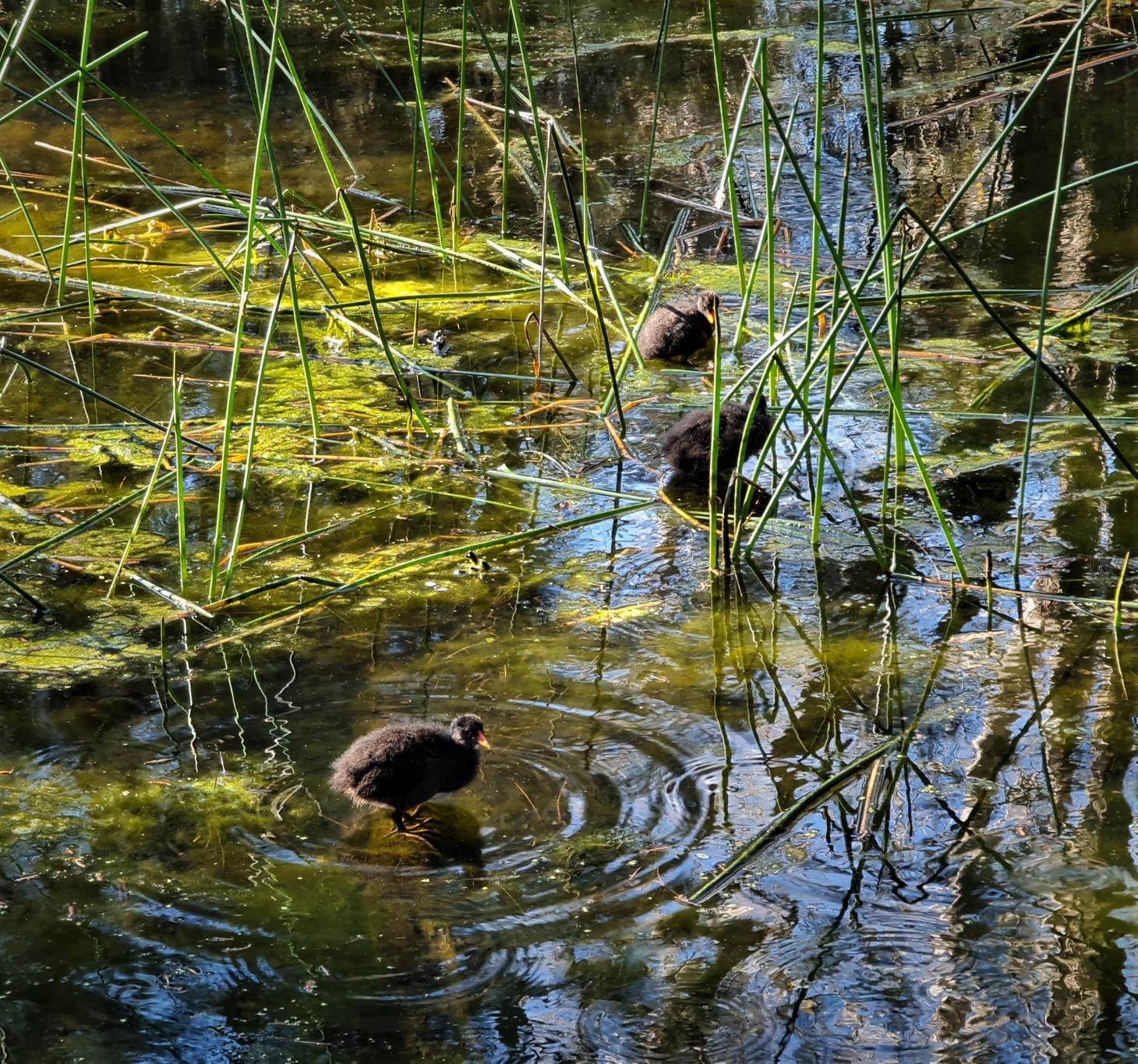
10 million animals die on our roads each year. Here’s what works (and what doesn’t) to cut the toll
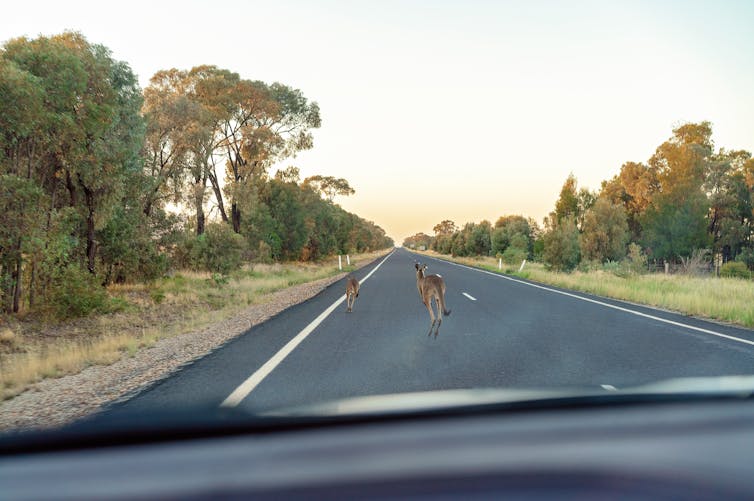
There’s almost no warning. A dark shape appears on the side of the road, then you feel a jolt as something goes under the car. Or worse, the shape rears up, hits the front of your vehicle, then slams into the windscreen. You have just experienced a wildlife-vehicle collision.
This gruesome scene plays out every night across Australia. When these collisions happen, many animals become instant roadkill. An estimated 10 million native mammals, reptiles, birds and other species are killed each year.
Others are injured and die away from the road. Some survive with terrible injuries and have to be euthanised. The lucky ones might be rescued by groups such as Wildlife Rescue, Wildlife Victoria and WIRES.
Wildlife-vehicle collisions also increase the risk to whole populations of some threatened species, such as Lumholtz’s tree-kangaroo on the Atherton Tablelands in Queensland.
People are affected, too. Human deaths and injuries from these collisions are rising, with motorcyclists at greatest risk. Vehicle repairs are inconvenient and costly. Added to this is the distress for people when dealing with a dead or dying animal on the roadside.
How can we reduce the wildlife toll on our roads? Many measures have been tried and proven largely ineffective. However, other evidence-based approaches can help avoid collisions.
Evidence For What Works Is Limited
Many communities are worried about the growing impacts of wildlife-vehicle collisions and are desperate for solutions. Recent reports from Europe and North America review the many methods to reduce such collisions.
Do these findings apply to Australia’s unique fauna? Unfortunately, we don’t have a detailed analysis of options for our wildlife, but here’s what we know now.
Well-designed fences keep wildlife off our highways but also fragment the landscape. Happily, animals will use crossing structures – overpasses and underpasses – to get to food and mates on the other side of the road. Fences and crossings do work, but are regarded as too costly over Australia’s vast road network.
As for standard wildlife warning signs, drivers ignore most of them after a while, making them ineffective. Signs with graphic images and variable messages get more attention, but we need road trials to assess their effect on drivers and collision rates.
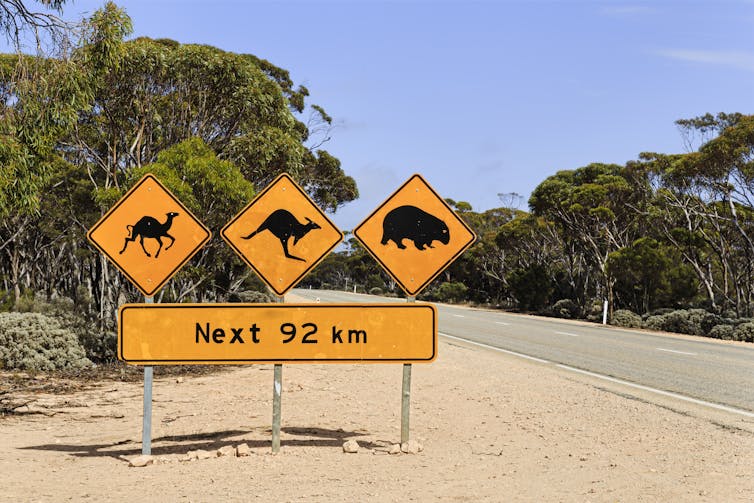
Whistling In The Dark
Some drivers install cheap, wind-driven, high-pitched wildlife whistles on their vehicles. Tests in the United States 20 years ago found humans and deer could not hear any whistling sound above the road noise of the test vehicle. Yet these devices are still sold in Australia as kangaroo deterrents.
The Shu-Roo, an Australian invention, is an active wildlife whistle. It is fitted to the bumper bar, producing a high-pitched electronic sound, which is claimed to scare wildlife away from the road. Sadly, our tests show the Shu-Roo signal can’t be heard above road noise 50 metres away and has no effect on captive kangaroo behaviour.
We also recruited fleets of trucks, buses, vans, utes and cars to field test the Shu-Roo. Nearly 100 vehicles covered more than 4 million kilometres across Australia over 15,500 days. The drivers reported just over one wildlife-vehicle collision per 100,000km travelled, but there was no difference in the rate for vehicles fitted with a Shu-Roo versus those without one.
The virtual fence is the latest attempt to reduce wildlife-vehicle collisions. It uses a line of posts spaced along the roadside, each with a unit producing loud sounds and flashing lights aimed away from the road. Vehicle headlights activate the units, which are claimed to alert animals and reduce the risk of collision.
Early results from Tasmania were encouraging. A 50% drop in possum and wallaby deaths was reported, but this trial had many design flaws. Recent trials in Tasmania, New South Wales and Queensland show no effect of virtual fencing on collisions with possums, wallabies or wombats.
Our concern is that this system is being rolled out in many parts of Australia. It gives the impression of action to reduce collisions with wildlife, but without an evidence base, solid study design or adequate monitoring.
A Very Messy Problem
The problem has many dimensions. We need to consider all of them to achieve safe travel for people and animals on our roads.
At a landscape level, collision hotspots occur where wildlife frequently cross roads, which can help us predict the collision risk for species such as koalas. But the risk differs between species. For example, on Phillip Island most wallaby collisions happen on rural roads, while most involving possums and birds are in urban streets.
Traffic volume and speed are key factors for many species, including kangaroos.
Driver training and experience are also important. In the Royal National Park in New South Wales, half the drivers surveyed had struck animals, including wallabies and deer. Yet most still weren’t keen to slow down or avoid driving at dawn and dusk.
Road design has a major influence on wildlife-vehicle collions too, but the planning process too often neglects wildlife studies.
Smarter cars are being developed. One day these will use AI to spot animal hazards, apply automatic emergency braking and alert other drivers of real-time risk.
To explore potential technological solutions, Transport for NSW is running a symposium at the University of Technology Sydney on May 21. The symposium will cover wildlife ecology and the evidence base for options to reduce wildlife-vehicle collisions in Australia.
If you see an injured animal on the road, call Wildlife Rescue Australia on 1300 596 457. for specific state and territory numbers, go to the RSPCA injured wildlife site.![]()
Graeme Coulson, Honorary Principal Fellow, School of BioSciences, The University of Melbourne and Helena Bender, Senior Lecturer, Environmental Social Sciences, The University of Melbourne
This article is republished from The Conversation under a Creative Commons license. Read the original article.
Australia must lead the world on nature restoration through ambitious interpretation of international law
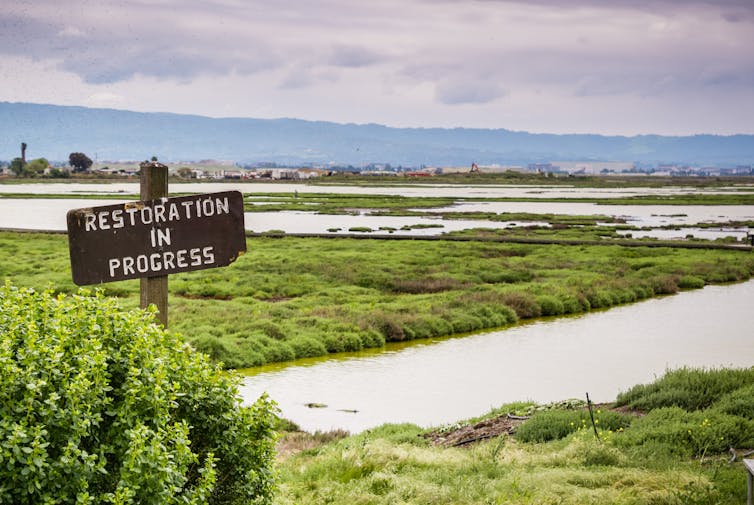
Australia has a once-in-a-generation opportunity to halt and reverse biodiversity loss through ambitious law and policy reform.
The federal government is currently rewriting our national environmental laws and updating the overarching Strategy for Nature. The updated strategy will include, among other things, goals for the restoration of degraded areas.
Part of the impetus for this reform is the Kunming-Montreal Global Biodiversity Framework. This 2022 United Nations treaty was signed by almost 200 countries committing to address the biodiversity crisis. It includes a pledge to achieve 30% of degraded land, water, coastal and marine ecosystems “under effective restoration” by 2030.
But as we argue in our new correspondence in Nature Ecology and Evolution, this restoration target is wide open to interpretation at the domestic level. Some responses could be very ambitious, while others would barely shift us from the status quo. Australia has an opportunity to lead here. We can show the world how to restore land and water for the benefit of all.
Interpreting The 30% Restoration Target
The global framework contains 23 targets, to be “initiated immediately and completed by 2030”.
The restoration target obliges countries to:
Ensure that by 2030 at least 30% of areas of degraded terrestrial, inland water, and marine and coastal ecosystems are under effective restoration, in order to enhance biodiversity and ecosystem functions and services, ecological integrity and connectivity.
At first glance, this 30% restoration target sounds like a huge and important step towards reversing biodiversity loss. But the devil is in the detail, and almost every word of this target is open to interpretation.
For example, the term “degraded” can be interpreted in various ways. A country may interpret it to include only areas that have seen a drastic decline in biodiversity, such as those that have been totally cleared.
But if a country interprets it more broadly as areas that have experienced any decline in biodiversity, this translates to a much larger area for restoration.
The wording also refers to 30% of areas of “degraded terrestrial, inland water, and marine and coastal ecosystems”. Crucially, it does not say effort must be spread evenly across these different ecosystems. This may lead countries to focus on areas where restoration is easier or cheaper. Given the complexities involved in marine and coastal restoration, there is a risk countries may focus their efforts on land while continuing to neglect freshwater, marine or coastal ecosystems.
The phrase “under effective restoration” also has a range of possible meanings. Does “effective” simply mean in a better state than it was before restoration began? Or does it mean bringing the ecosystem back to an approximation of its natural state – prior to interference from development or other harm?
How the term “effective” restoration is defined at a national scale will drastically influence reports of “success” and make it difficult to compare results between countries.
Scaling Up
Australia has signed the framework and is currently considering how to implement it domestically. If Australia does decide to interpret the restoration target broadly and commit to restoring larger areas of land and water through more ambitious standards, there will be other issues to contend with.
For example, one study identified a lack of funding and complex legal requirements as barriers to upscaling restoration in marine and coastal areas. In particular, having to apply for numerous government permits for restoration can slow progress and lead people to scale back their plans.
To meet the 30% target, the government will need to reconsider how to fund restoration and streamline legal processes. Remember, much of the heavy lifting is currently done by non-government organisations such as The Nature Conservancy, Australian Wildlife Conservancy, Bush Heritage Australia and Trust for Nature.
Leading By Example
Ultimately, we argue countries should have discretion over how and where to implement restoration based on their individual circumstances. But we also think the global framework could be supplemented by standardised terminology and metrics to allow genuine comparison of countries’ progress towards the global targets.
Closer to home, our analysis has some important lessons for Australia as the federal government contemplates the fate of our national environmental laws and biodiversity strategy. Australia’s most recent State of the Environment Report painted a bleak picture of biodiversity decline, highlighting an urgent need to upscale restoration of our land and water.
Australia has an opportunity to take a leading role in this area and reverse our legacy of biodiversity loss. Interpreting the 30% restoration target broadly and ambitiously would set us on a path towards achieving meaningful outcomes for biodiversity and make Australia a world leader in restoration. ![]()
Justine Bell-James, Associate Professor, TC Beirne School of Law, The University of Queensland
This article is republished from The Conversation under a Creative Commons license. Read the original article.
On a climate rollercoaster: how Australia’s environment fared in the world’s hottest year
Albert Van Dijk, Australian National University; Shoshana Rapley, Australian National University, and Tayla Lawrie, The University of QueenslandGlobal climate records were shattered in 2023, from air and sea temperatures to sea-level rise and sea-ice extent. Scores of countries recorded their hottest year and numerous weather disasters occurred as climate change reared its head.
How did Australia’s environment fare against this onslaught? In short, 2023 was a year of opposites.
For the past nine years, we have trawled through huge volumes of data collected by satellites, measurement stations and surveys by individuals and agencies. We include data on global change, oceans, people, weather, water, soils, vegetation, fire and biodiversity.
Each year, we analyse those data, summarising them in an annual report that includes an overall Environmental Condition Score and regional scorecards. These scores provide a relative measure of conditions for agriculture and ecosystems. Scores declined across the country, except in the Northern Territory, but were still relatively good.
However, the updated Threatened Species Index shows the abundance of listed bird, mammal and plant species has continued to decline at a rate of about 3% a year since the turn of the century.
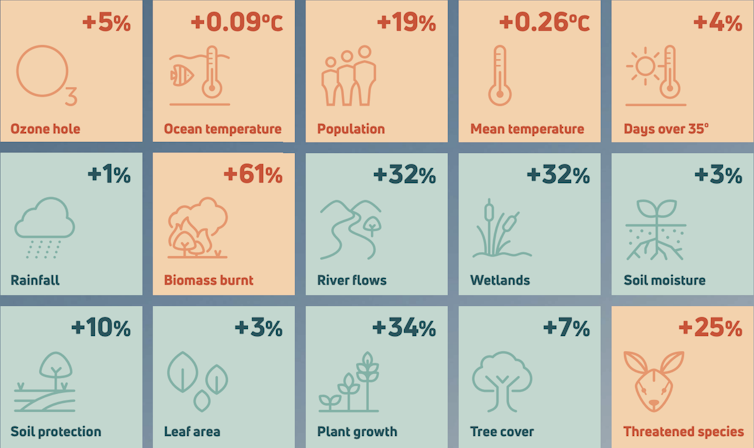
Riding A Climate Rollercoaster In 2023
Worldwide, 77 countries broke temperature records. Australia was not one of them. Our annual average temperature was 0.53°C below the horror year 2019. Temperatures in the seas around us were below the records of 2022.
Even so, 2023 was among Australia’s eight warmest years in both cases. All eight came after 2005.
However, those numbers are averaged over the year. Dig a bit deeper and it becomes clear 2023 was a climate rollercoaster.
The year started as wet as the previous year ended, but dry and unseasonably warm weather set in from May to October. Soils and wetlands across much of the country started drying rapidly. In the eastern states, the fire season started as early as August.
Nonetheless, there was generally still enough water to support good vegetation growth throughout the unusually warm and sunny winter months.
Fears of a severe fire season were not realised as El Niño’s influence waned in November and rainfall returned, in part due to the warm oceans. Combined with relatively high temperatures, it made for a hot and humid summer. A tropical cyclone and several severe storms caused flooding in Queensland and Victoria in December.
As always, there were regional differences. Northern Australia experienced the best rainfall and growth conditions in several years. This contributed to more grass fires than average during the dry season. On the other hand, the rain did not return to Western Australia and Tasmania, which ended the year dry.
So How Did Scores Change?
Every year we calculate an Environmental Condition Score that combines weather, water and vegetation data.
The national score was 7.5 (out of 10). That was 1.2 points lower than for 2022, but still the second-highest score since 2011.
Scores declined across the country except for the Northern Territory, which chalked up a score of 8.8 thanks to a strong monsoon season. With signs of drought developing in parts of Western Australia, it had the lowest score of 5.5.
The Environmental Condition Score reflects environmental conditions, but does not measure the long-term health of natural ecosystems and biodiversity.
Firstly, it relates only to the land and not our oceans. Marine heatwaves damaged ecosystems along the eastern coast. Surveys in the first half of 2023 suggested the recovery of the Great Barrier Reef plateaued.
However, a cyclone and rising ocean temperatures occurred later in the year. In early 2024, another mass coral bleaching event developed.
Secondly, the score does not capture important processes affecting our many threatened species. Among the greatest dangers are invasive pests and diseases, habitat destruction and damage from severe weather events such as heatwaves and megafires.
Threatened Species’ Declines Continued
The Threatened Species Index captures data from long-term threatened species monitoring. The index is updated annually with a three-year lag, largely due to delays in data processing and sharing. This means the 2023 index includes data up to 2020.
The index showed an unrelenting decline of about 3% in the abundance of Australia’s threatened bird, mammal and plant species each year. This amounts to an overall decline of 61% from 2000 to 2020.
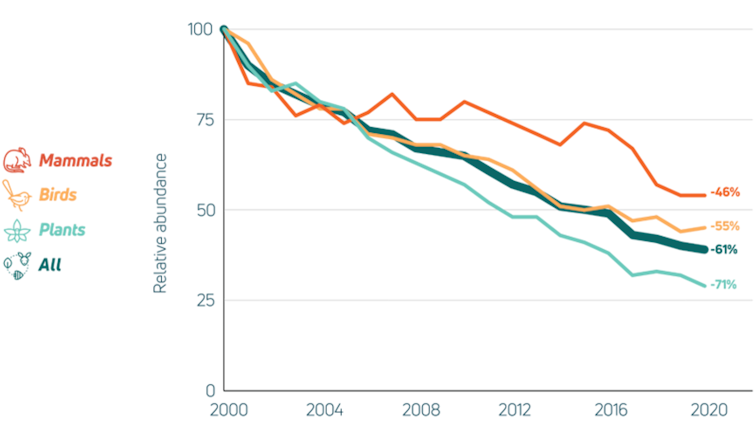
The index for birds in 2023 revealed declines were most severe for terrestrial birds (62%), followed by migratory shorebirds (47%) and marine birds (24%).
A record 130 species were added to Australia’s threatened species lists in 2023. That’s many more than the annual average of 29 species over previous years. The 2019–2020 Black Summer bushfires had direct impacts on half the newly listed species.
Population Boom Adds To Pressures
Australia’s population passed 27 million in 2023, a stunning increase of 8 million, or 41%, since 2000. Those extra people all needed living space, food, electricity and transport.
Australia’s greenhouse gas emissions have risen by 18% since 2000. Despite small declines in the previous four years, emissions increased again in 2023, mostly due to air travel rebounding after COVID-19.
Our emissions per person are the tenth-highest in the world and more than three times those of the average global citizen. The main reasons are our coal-fired power stations, inefficient road vehicles and large cattle herd.
Nonetheless, there are reasons to be optimistic. Many other countries have dramatically reduced emissions without compromising economic growth or quality of life. All we have to do is to finally follow their lead.
Our governments have an obvious role to play, but we can do a lot as individuals. We can even save money, by switching to renewable energy and electric vehicles and by eating less beef.
Changing our behaviour will not stop climate change in its tracks, but will slow it down over the next decades and ultimately reverse it. We cannot reverse or even stop all damage to our environment, but we can certainly do much better.![]()
Albert Van Dijk, Professor, Water and Landscape Dynamics, Fenner School of Environment & Society, Australian National University; Shoshana Rapley, Research Assistant, Fenner School of Environment & Society, Australian National University, and Tayla Lawrie, Project Manager, Threatened Species Index, The University of Queensland
This article is republished from The Conversation under a Creative Commons license. Read the original article.
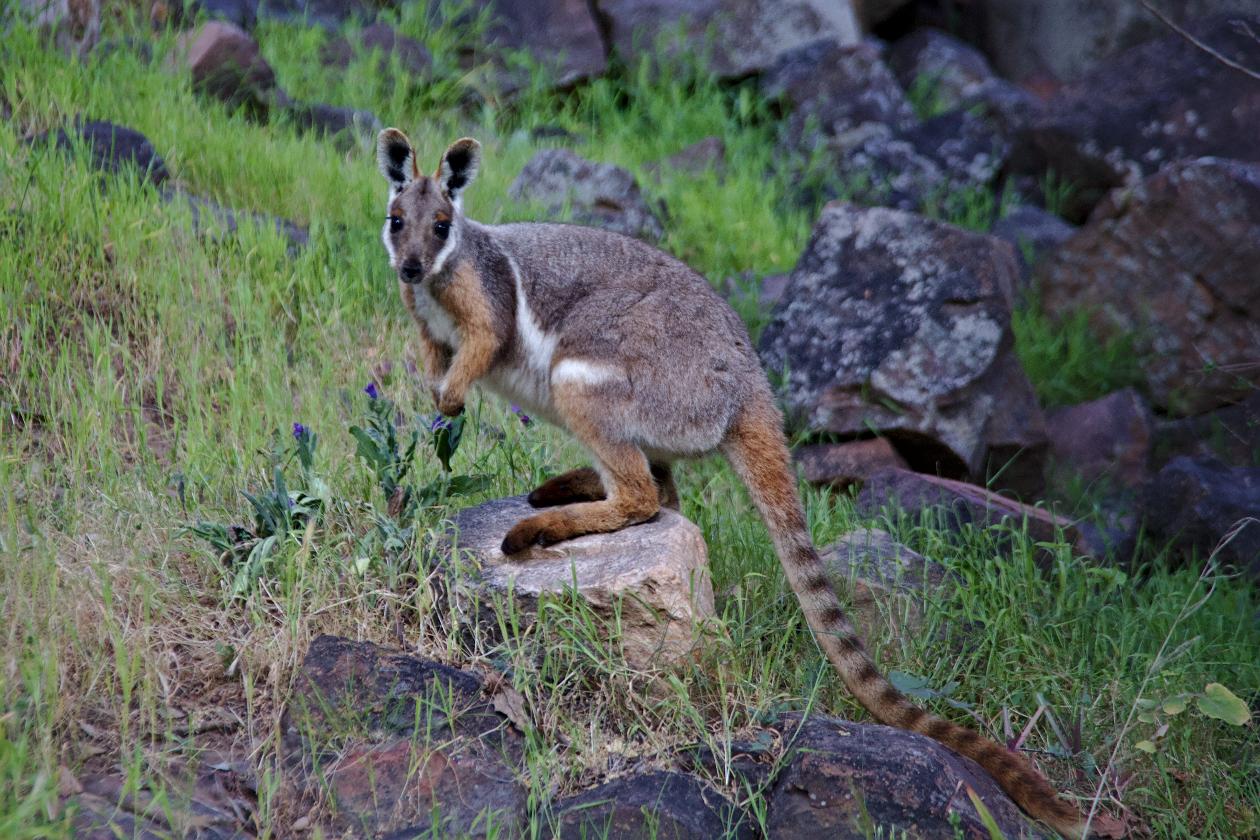
Grey-headed flying-fox population is stable – 10 years of monitoring reveals this threatened species is doing well

Flying foxes, or fruit bats, are familiar to many Australians. So it may come as a surprise to learn two of the four mainland species, both grey-headed and spectacled flying foxes, are threatened with extinction.
But our decade-long survey of one of these species – the grey-headed flying fox – brings some encouraging news. Our data show the population has been relatively stable since 2012, when surveys first began under the National Flying-fox Monitoring Program.
Incredibly, the species emerged from the Black Summer of 2019–20 relatively unscathed. Flying foxes also suffer in heatwaves and many die, but overall numbers have remained stable.
While this study is good news for the species, we must not become complacent. Heatwaves are expected to become more frequent and intense as the climate changes. Only further monitoring can determine its effects.
Hanging Out With Flying Foxes
The grey-headed flying fox (Pteropus poliocephalus) is common in most cities and towns across south-eastern Australia. More recently, colonies have become established in South Australia.
The species can be found anywhere from Maryborough, on Queensland’s Fraser Coast, to Adelaide, with some outlying populations as far north as Ingham in north Queensland. There’s also a breakaway group in Port Augusta, 300km north of Adelaide.
The “vulnerable” listing means the species is at risk of extinction. But it’s not as dire as if it were “endangered”.
The original vulnerable assessment, endorsed in 2001, was based on a population decline of about 30% over ten years and the potential for ongoing land clearing in the grey-headed flying fox’s core range.
But this is the flying fox you’re most likely to see and hear in south-east Australia, from Sydney to Adelaide.
During the day, flying foxes like to hang out together. They rest and socialise in large roosts, sometimes numbering more than 100,000 animals.
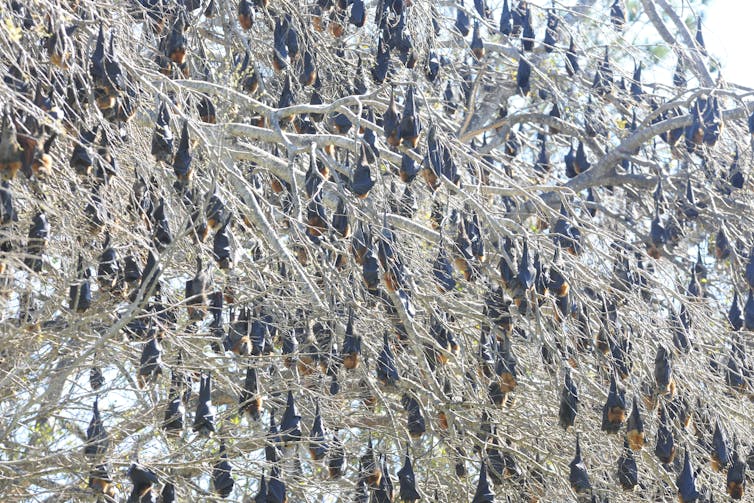
As the sun sets, they take to the sky, departing in large streams to forage during the night in the surrounding landscape. They can travel long distances to find food, sometimes venturing more than 40km from home, and flying more than 300km in a single night.
Their food of choice is nectar from a wide variety of eucalypt, bloodwood and melaleuca species. In return, they play an important pollination role, as if they were nocturnal bees with a one-metre wingspan.
They also feed extensively on native figs. In urban areas, they feast on the nectar and fruit of introduced species found in gardens and street trees.
Individuals regularly change roosts. They move throughout the species’ range, following food resources.
That means the number of bats in roosts is constantly changing, depending on the availability of the surrounding resources, which makes accurate counting particularly challenging.
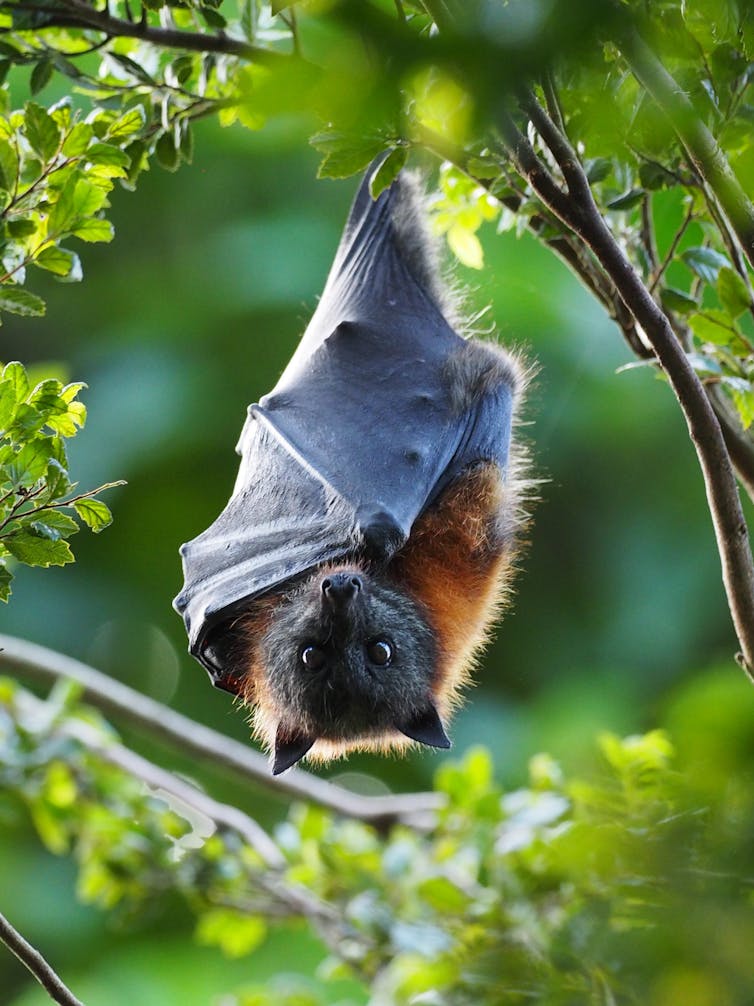
Monitoring A Threatened Species
Australia’s national science agency, CSIRO, co-ordinated the National Flying-fox Monitoring Program in partnership with federal and state environmental agencies from 2012 to 2022.
The intention was to monitor the populations of the two nationally listed flying fox species on the mainland. It was specifically designed to understand their population trends. Here we focus on the grey-headed flying foxes.
The program involved quarterly visits by federal, state and local government staff and volunteers to as many flying fox roosts as possible. Over the entire program almost 12,000 counts were conducted at 912 potential roosts. Grey-headed flying foxes were found at 469 of those roosts.
This program would not have been possible without hundreds of hours of work around the clock by staff and volunteers, often in challenging conditions. Their work highlights the importance of long-term monitoring programs.
From 2012 to 2022 we counted an average of 580,000 grey-headed flying foxes in each survey. But total numbers ranged between 330,000 and 990,000, with strong seasonal variation. This variation relates to their reproductive cycle and the availability of food within their range.
Flying foxes pup late in the year. When those pups become independent, they can be counted. This results in a sudden increase in the numbers, typically around February. So while our data show peaks and troughs throughout each year, overall the population remained stable.
We developed a model to allow for this seasonality and examine overall population trends. The model strongly suggests the population hovered around 600,000 adults for the ten years of the survey. We found a 70% chance of a slightly increasing population, versus a 30% chance the population has declined slightly.
The population appeared to be stable despite exceptional events such as the 2019–20 megafires and severe heatwaves known to have killed thousands of flying foxes.
The flying foxes seem resilient to these threats for two main reasons.
First, they are nomadic and well adapted to travelling long distances. This allows them to evade threats such as fires and droughts.
Second, grey-headed flying-foxes are likely to benefit from a “human-modified landscape”. In other words, they may well be urban “winners”, as the urban areas we’ve created provide diverse foraging opportunities.
Grey-headed flying foxes continually occupied all major cities within their range throughout our monitoring program.
These urban environments offer a smorgasbord of flowering and fruiting species, especially palms and figs. Many of these species are exotics, with flowering and fruiting patterns that flying foxes can readily exploit.
We found continuous occupation of individual roosts was unusual. The few that were continuously occupied were all in urban areas, supporting the view that urban areas are increasingly important for this species.

Good News, But We Need To Be Cautious
After ten years of monitoring we can safely say the grey-headed flying fox is doing ok, for the time being.
But threats to its survival remain. Climate change is expected to cause more heatwaves, bushfires and droughts within their range. This could turn their fate around.
It’s also worth noting that while our monitoring continued for two years after the 2019–20 bushfires, the longer-term impacts are still unknown.
Given this uncertainty, continuing monitoring using similar methods and incorporating updated technology would increase certainty about the population trajectory. Unfortunately, monitoring has paused since 2022, pending further funding discussions. ![]()
Eric Vanderduys, Research Projects Officer, CSIRO; Adam McKeown, Experimental Scientist in Ecology, CSIRO; Chris R. Pavey, Principal Scientist in Ecology, CSIRO; John Martin, Adjunct associate and ecological research scientist, University of Sydney, and Peter Caley, Senior Research Scientist in quantitative ecology, CSIRO
This article is republished from The Conversation under a Creative Commons license. Read the original article.
Almost a third of Australia’s plant species may have to migrate south if we hit 3 degrees of warming

For ecologists, one of the most pressing questions is to understand how ecosystems will change or adapt as the climate changes rapidly. We are already seeing many species of plant and animal moving uphill and towards the poles in response to higher temperatures. It’s very likely most species will move to track their preferred temperature niche.
But what’s strange is that many species can survive in much broader temperature ranges than their current distribution suggests. We don’t yet fully understand why temperature affects ecosystems so strongly.
To shed light on this puzzle, our new research used the current range of Australian plants and calculated each species’ minimum and maximum temperature preferences. These data told us how many and what percentage of species are lost or gained when transitioning from, say, a 15°C to a 16°C average annual temperature.
The results were astonishing. In Australia’s wetter east coast, you gain on average 19% more species and lose 14% of species when moving up the temperature gradient by 1°C. In the dry centre, you gain 18% of species and lose 21% of species for every extra degree.
That’s at in our current climate. What will happen if the world warms by 3°C, which we are still heading towards?
If we assume the whole flora is trying to track their current climate niche, we would likely see 30% of our plant species in Australia moving south. That would be an enormous shift. Almost one in every three species would change in the natural vegetation around us.

What Does This Mean?
What our data show is that even slight natural changes in temperature have an effect on the species occurring in different regions.
Why do most plant species only occur in a narrow band within the wider range in which they can survive? A long-held theory, dating back to the work of Charles Darwin, is that species ranges are determined more by competition as you head towards warmer temperatures.
In this theory, some species are simply better at finding and using resources than others. These competitive traits are thought to be fine-tuned to work best at specific temperatures. These species outcompete those with lower growth rates or fitness at these temperatures.
Why wouldn’t superior competitors spread everywhere? Their traits are likely only functional under specific, often narrow, temperature bands. As soon as it gets too cold, they can’t grow as efficiently and other species can compete.
This means the southern limit of an Australian species is determined by its tolerance of cooler temperatures. If you were on a road trip from Cape York to Tasmania, you would see new species appearing and tropical species becoming less common and disappearing as you drove south towards the pole.
When The Heat Is On, Do Plants Have To Move?
Australia’s plant species – especially in the wetter east – tend to be very old. Species with long histories have likely found their ideal temperature niche.
But the climate is heating up rapidly. 2023 was the first full year Earth was 1.5°C hotter than the pre-industrial era.
As temperatures rise, staying put may no longer be possible. More and more species will find themselves out of their preferred temperature niche. They either adapt, move or go locally extinct.

But the evidence so far suggests species will move – if they can.
When species do move, the ecosystems they leave behind and the new ones they move into will change.
We don’t know if all species will be able to move freely down the east coast. Our industrious efforts to make farms, homes, roads and cities have heavily fragmented the natural vegetation. We have converted once-continuous spans of habitats into island-like remnants.
Some species can disperse better and over longer distances between habitat fragments than others. For instance, species with winged or windborne seeds are better dispersers than species with large seeds, which include many of our rainforest species.
The more dispersive species may win the race to secure new climate niches. To avoid some species becoming overly dominant, should we help plant species that don’t spread their seeds well by transplanting seedlings or sowing their seeds? This is an important question for the future to which we don’t yet have an answer.
Our plant species have found their climate niches over millions of years. What our research suggests is that climate change may force a surprising amount of our plants to move.![]()
Julian Schrader, Lecturer in Plant Ecology, Macquarie University
This article is republished from The Conversation under a Creative Commons license. Read the original article.
Tasmania’s tall eucalypt forests will be wiped out by heatwaves unless we step in to help them
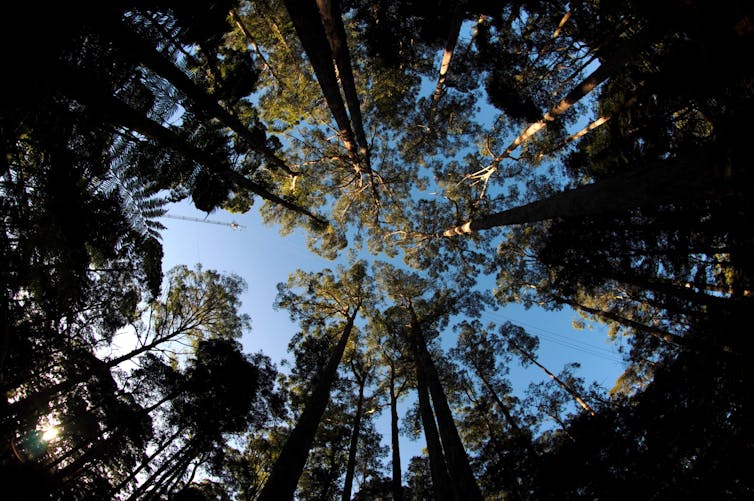
Tasmania’s tall eucalypt forests are globally significant. They accumulate carbon faster than any other natural forest ecosystem in the world.
But climate change is making it harder for these forests to remove carbon from the atmosphere and store it in wood. During heatwaves, they stop removing carbon altogether and release it instead.
What will happen as heatwaves occur more frequently? Tasmania’s tall eucalypt forests will become carbon sources more and more of the time. As temperatures continue to rise, the forests will reach a “tipping point”. When this happens the forests will no longer be able to store carbon and mass tree deaths will occur.
My new report released today makes recommendations about preparing for this. There are serious implications for greenhouse gas emissions, conservation and wood production. We cannot ignore the risks of a warming climate. There is a lot we can do now to prepare and make future forests more resilient.
Forests Of Immense Value
The Tasmania Wilderness World Heritage Area is ranked number one of all UNESCO sites globally for taking carbon out of the atmosphere and storing it. That’s because western Tasmania’s high rainfall and cool temperatures are ideal for forest growth.
These tall eucalypt forests contribute greatly to Tasmania’s claim to net-zero emissions in its greenhouse gas accounts.
The forests have produced most of the high-quality sawlogs supplying Tasmania’s sawmilling industry for more than a century.
They also provide unique and long-lasting habitat for wildlife. Large logs support diverse communities of insects and fungi.
The forest supports unique tourism experiences and an emerging opportunity for “big tree tourism”.
Tall eucalypt forests are dominated by one or two or three species of Eucalyptus:
- E. obliqua (messmate or stringy bark)
- E. regnans (swamp gum or mountain ash)
- E. delegatensis (alpine ash or gum-top stringybark).
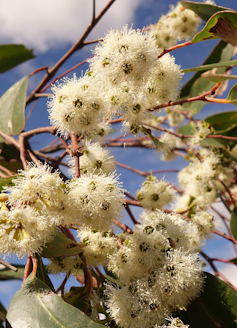
Preparing For Tipping Points
As temperatures continue to rise, many ecosystems are predicted to reach a tipping point. This is the point at which the ecosystem can no longer function and is eventually replaced by a different ecosystem.
Many plant-based ecosystems, mostly in the tropics, are expected to reach a tipping point within three decades. Tasmania’s tall eucalypt forests may be among them because they share similarities with tropical rainforest.
World Heritage values would be jeopardised, huge amounts of stored carbon would be released, and biodiversity dependent on the tall trees would be threatened. So there is an urgent need to begin preparing now for a future tipping point in these forests.
The main ambition of the measures outlined in my report released today is to restore forested areas after the original forest is lost – or damaged irreversibly. The new forests would be grown from the same species of eucalypts but the seed sown would regenerate forests better suited to the new climate than the original forest.
To achieve this ambition, we need to decide what features of tall eucalypt forests we want to retain in future forests. Capacity for rapid growth after disturbance would be high on the list of those features.
We also need to know what features need to change to make the forests better suited to a new climate. Increasing the optimum temperature for carbon uptake is the top priority.

Producing Climate-Ready Seed For Sowing
In new research, soon to be published, I reviewed several studies that compared the features of Tasmanian tall eucalypt forests with other forests on the Australian mainland.
I wanted to understand why Tasmania’s forests were so sensitive to heatwaves and what, if anything, could be done to lessen their impact. I found the poor response to heatwaves had more to do with the local conditions than anything else. The forests are accustomed to high rainfall and a narrow temperature range.
Could we speed up natural selection to help Tasmania’s tall eucalypt forests adapt to a new, warmer climate?
Previous research has shown forests can be managed to speed up natural selection and produce seed better suited to new climates. But this is only feasible in forests managed for wood production.
We need to find out whether natural selection can increase the optimum temperature for carbon uptake by the forest, and if so, by how much.
We need to ensure the right policy settings are in place. A policy to end logging of native forests, for example, would rule out speeding up natural selection.
And we need to think and plan what to do if tall eucalypt forests in reserves are lost or irreparably damaged. Should we try to restore new generations of tall eucalypt forests, and if so, how?
Finally, community support is required. People need to understand what we are trying to achieve. They can also bring new ideas about how to make tall eucalypt forests more resilient.
Timely, accurate, trusted, and accessible information will be crucial. Ongoing monitoring of the tall eucalypt forest in the upper reaches of Tasmania’s Huon Valley can provide much of this information.
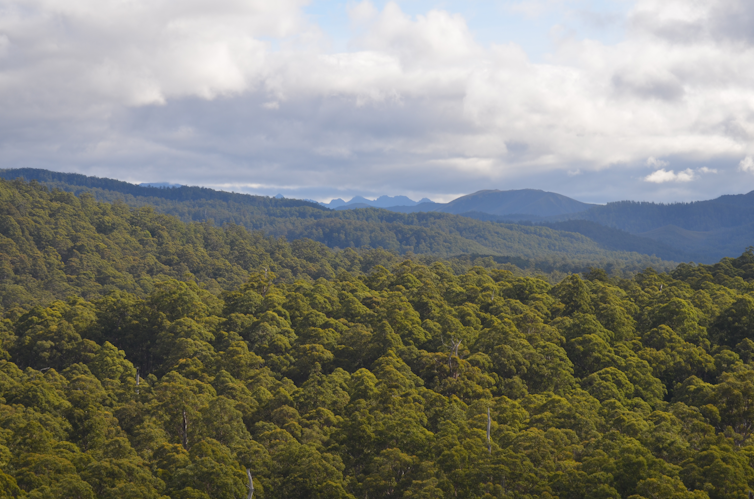
Future Forests
Clearly, humanity must cut greenhouse gas emissions and limit global warming. But some climate impacts are now unavoidable and we need to be prepared.
As heatwaves intensify, Tasmania’s tall eucalypt forests will reach a tipping point. Trees will die. The forest we know today will be lost forever.
But if we are prepared, we can ensure another forest takes its place. With our help, future generations of tall eucalypt forests can still exist – forests better suited to Tasmania’s new climate.![]()
Tim Wardlaw, Research Associate, University of Tasmania
This article is republished from The Conversation under a Creative Commons license. Read the original article.
Each Easter we spend about $62 a head on chocolates, but the cost of buying unsustainable products can be far greater
Stephanie Perkiss, University of Wollongong; Cristiana Bernardi, The Open University, and John Dumay, Macquarie UniversityAustralians enjoy chocolate, consuming on average the equivalent of 32 kilograms a year, but there is growing interest in its origins and how it’s made.
They want to know their product is sustainably made by companies that only deal with ingredient suppliers who engage in fair labour practices and safeguard against deforestation and other environmentally damaging processes.
But according to the 5th Edition of the Chocolate Scorecard, produced by Be Slavery Free, two Australian universities and several sustainability interest groups, some retailers are lagging when it comes to stocking sustainable products.
The scorecard is released at Easter, the busiest time of the year for the sweet treat. Sales in this period account for 75% of chocolate sold annually in Australia, with the average consumer spending $62 on Easter chocolates.
The scorecard ranks the policies and practices of chocolate traders, manufacturers, brands and retailers, assessing 63 companies on six criteria. These are traceability and transparency, living income, child and forced labor, climate change and deforestation, agroforestry and agrochemical use.
Next year’s report card will also include a rating based on gender equality which is being added as a seventh criteria.
It assesses companies deemed industry leaders in sustainable policies and practices and awards them a green rating (or “egg”), while yellow and orange ratings are given to companies considered to be “progressing” and “needing improvement”. Red is given to those “trailing in policy and practice” and grey indicates a lack of transparency.
This year, the German brand, Ritter Sport, available in some large Australian supermarkets, was given a Good Egg Award in the medium and large company category for its progress and to show bigger companies can do much better.
Dutch brand, Tony’s Chocolonely, was given a special achievement award in the same category for consistently rating green. New Zealand manufacturer Whittaker’s was a highly rated yellow.
Mars Wrigley (maker of Mars bars, Snickers, Milky Way and Twix) rated strongly among the world giants of chocolate, followed by Nestle (Kit Kat, Smarties), Hershey’s (Kisses, chocolate syrup) and Ferrero (Nutella, Kinder, Ferrero Rocher), all of which received yellow awards.
Lindt and Mondelēz, whose portfolio includes Cadbury, Toblerone and Green & Black’s, received orange, indicating the need for improvement.
Globally, no retailers were rated green. Of the stores operating in Australia, Aldi (run by Aldi Sud), received yellow while Woolworths (including Big W) scored a disappointing orange. This was followed by red recipients Coles, David Jones and Kmart.
Chocolate Is A Growing Business
Global revenue from chocolate is expected to reach US$254 billion in 2024. Around US$3.5 billion is generated in Australia and this is expected to grow by nearly 8% over the next few years.
According to the United Nations Guiding Principles on Business and Human Rights, a business is responsible for any and all adverse human rights impacts either through their or their suppliers’ activities. Responsibility should not be shifted to another level in the supply chain.
Research on retail stores reveals confectionery is often an impulse purchase. Stores stock sweet products at payment areas, setting a high profit margin. These products can financially make or break a retailer.
So when a retailer sells chocolate, they have a responsibility to address human rights and environmental issues.
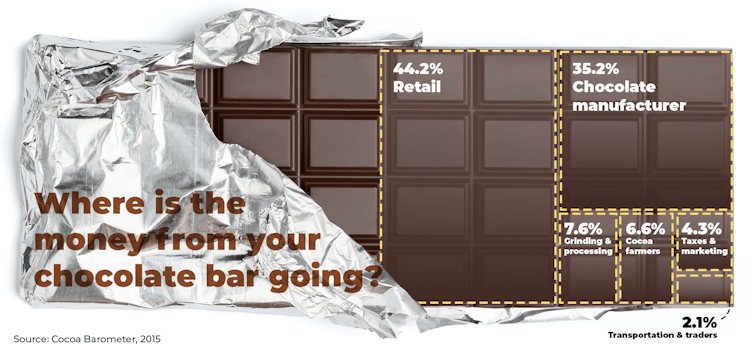
Some Retailers Are Falling Behind In Sustainable Sourcing
Unlike other regions, all Australian retailers took part in this year’s chocolate scorecard. These companies were early adopters in responding to human rights and environmental issues through certifications such as Fairtrade and Rainforest Alliance.
But most retailers have poor data on their supply chains. While they develop a code of practice for their manufacturers and suppliers for the chocolate to be certified, it’s up to suppliers to adopt. This cascading model can lead to all responsibility resting with the farmer.
US retailers are the largest in the world and have the resources to lead the way. However, all US retailers received “grey” ratings in this year’s scorecard for not responding. This list includes three of the largest outlets in the US by revenue, Walmart, Costco, and Kroger.
One likely reason the US chocolate industry is lagging is because it has not passed regulations to curb deforestation. The European Union has passed the EU Deforestation Regulation, to ensure commodities such as cocoa, sold in the EU, are not sourced from deforested areas. The UK Environment Act 2021 calls for similar due diligence on critical forest-risk commodities. The US has proposed the Forest Act, but has not passed it.
Making Responsible Decisions
Retailers need to be aware that consumers are increasingly seeking ethically produced and sustainable products, including chocolate.
Ethically-produced cocoa must become a core element of their corporate responsibility and business strategy. Retailers can make improvements by working with their suppliers and manufacturers to trace their cocoa supply chains to ensure they are untainted by human rights and environmental abuse.
Consumers can use the 5th Edition Chocolate Scorecard to inform their sustainable purchasing decisions about the brands they buy and the retailers they buy from.![]()
Stephanie Perkiss, Associate professor in accounting, University of Wollongong; Cristiana Bernardi, Senior Lecturer in Accounting and Financial Management, The Open University, and John Dumay, Professor in Department of Accounting and Corporate Governance, Macquarie University
This article is republished from The Conversation under a Creative Commons license. Read the original article.
Climate quitting: the people leaving their fossil fuel jobs because of climate change

As the climate crisis gets ever more severe, the fossil fuel industry is struggling to recruit new talent. And now a number of existing employees are deciding to leave their jobs, some quietly, some very publicly, because of concerns over climate change.
In this episode of The Conversation Weekly podcast, we speak to a researcher about this phenomenon of “climate quitting”.
My name is Caroline Dennett and this is my resignation.
In a video posted on LinkedIn in 2022, Caroline Dennett, a senior safety consultant working at a major oil company, announced she was terminating her contract because of what she called the company’s “double-talk” on climate.
When Grace Augustine and her colleague Birth Soppe saw the video, which went viral, they decided to start looking for more people who had left their jobs because of concerns over climate change.
Augustine, an associate professor in business and society at the University of Bath in the UK, and Soppe, an associate professor of organisation studies, at the University of Innsbruck in Austria, have so far conducted interviews with 39 people from around the world in their ongoing research. Most, though not all, of their interviewees are young people who work in white collar jobs in the oil and gas sector.
One man they spoke to explained the feelings that led him to leave his job.
On a Friday afternoon travelling home, I would feel physically uncomfortable. And I was wondering: why am I feeling physically uncomfortable? I had a good week, I’ve done good work. And then you realise that, you may have done good work, but the goal that you’re working towards is evil in a way; does not align with your moral compass.
Many referred to having a sense of cognitive dissonance – the idea that your behaviour doesn’t match your belief system. And they couldn’t live it with any longer. Augustine explained:
They were increasingly feeling a sense of urgency around the climate crisis … something that they’d thought might be happening ten, 15, 20 years down the line, such as heat records being broken or climate related weather events. They felt an increasing sense that it couldn’t wait any longer for them to leave this industry.
Listen to Grace Augustine talk about her ongoing research on The Conversation Weekly podcast, which also features extracts from her interviews and an introduction from Sam Phelps, commissioning editor for international affairs at The Conversation in the UK.
A transcript of this episode will be available shortly.
Thanks to Grace Augustine for getting permission for The Conversation to use clips from her interviews, and to her interview subjects who agreed to let us use their voices and statements in this podcast.
This episode of The Conversation Weekly was written and produced by Katie Flood, with assistance from Mend Mariwany. Gemma Ware is the executive producer. Sound design was by Eloise Stevens, and our theme music is by Neeta Sarl. Stephen Khan is our global executive editor, Alice Mason runs our social media and Soraya Nandy does our transcripts.
Newsclips in this episode were from PBS News Hour.
You can find us on Instagram at theconversationdotcom or via email. You can also subscribe to The Conversation’s free daily email here.
Listen to The Conversation Weekly via any of the apps listed above, download it directly via our RSS feed or find out how else to listen here.![]()
Gemma Ware, Editor and Co-Host, The Conversation Weekly Podcast, The Conversation
This article is republished from The Conversation under a Creative Commons license. Read the original article.
School’s out: how climate change is already badly affecting children’s education

Schools across South Sudan have been ordered to close as a heat wave of 45°C sweeps across the country. In recent years, severe flooding has already caused major disruptions to schooling in South Sudan where, on average, children complete less than five years of formal education across their lives.
As researchers interested in both climate change and learning, we’ve been surprised that most public debate in this area concerns how best to teach children about climate change as part of the curriculum. Recently, we examined a less discussed, but arguably much more consequential, question: How is climate change impacting children’s education worldwide?
In a recent paper published in Nature Climate Change, we reviewed studies linking climate change-related events or “climate stressors” to education outcomes. One of the clearest connections was between heat exposure and reduced academic performance.
A study in the US found that adolescents’ maths scores decreased significantly on days above 26°C. In China, hotter day-of-test temperatures were associated with a drop in exam performance equal to losing a quarter of a year – or several months – of schooling.
But it’s not just test days that matter. Studies show that raised temperatures also affect learning over longer time periods. For example, pupils’ test scores suffered when there were more hot days across the school year and even when the hotter weather occurred three to four years before exam day.
Our review also highlights how climate-related regional disasters like wildfires, storms, droughts and floods are keeping many children out of school entirely. Floods can prevent children from travelling to school and cause damage to school buildings and materials, which disrupts learning and lowers test scores.
In developing countries, storms and droughts commonly cause children to leave school permanently to join the workforce and support their families. Children in higher-income countries are not immune. They miss school days due to hurricanes and wildfires and these absences have measurable effects on education outcomes.
The impacts of climate disasters can also affect children before they are born with consequences that reverberate across their lives. For example, children whose mothers were pregnant during Hurricane Sandy were more likely to be diagnosed with attention-deficit hyperactivity disorder (ADHD), a condition that can make schooling more challenging.
In India, researchers found that raised temperatures lead to lower test scores due to crop failure and malnutrition, highlighting the importance of indirect links between climate stressors and subsequent school participation and learning.
Educational Injustice
Our analysis suggests that climate change will exacerbate existing inequalities in global education access and attainment, with already disadvantaged groups facing the largest learning setbacks. In the US, heat had worse effects on exam scores for racial and ethnic minorities and children living in lower-income school districts.
Following a super typhoon in the Philippines, children whose families had fewer financial resources and smaller social networks were more likely to drop out of school than their better-resourced neighbours. In contexts where girls’ education is less prioritised than boys’, their school attendance and exam scores have suffered more following climate change stressors such as droughts and storms.
Globally, regions where people are more vulnerable to the effects of climate change – in terms of risk of harmful stressors occurring and resources available to adapt – are also regions where children already receive fewer years of schooling.

The impacts of climate change on education are already widely visible. While the scale of the problem is daunting, there are many ways to take action. Most critically, global heating urgently needs to be limited by reducing emissions of greenhouse gases.
At the same time, children’s education must be protected from climate change stressors that are already occurring. Possible measures include installing cooling technologies, effective disaster response planning, building stressor-resilient schools and addressing systemic global inequalities related to socioeconomic, gender and racial discrimination.
Preventing harm to children’s education is a worthy goal in itself. But improving education can also contribute to greater awareness and climate literacy, while mitigating climate change and making children more resilient in the face of climate stressors.
Education can help fight climate change. But we must also fight climate change to prevent harm to education. Without action, the future of young people around the world hangs in the balance.![]()
Caitlin M Prentice, Postdoctoral Fellow, Department of Psychology, University of Oslo; Francis Vergunst, Associate Professor, Psychosocial Difficulties, University of Oslo; Helen Louise Berry, Honorary Professor, Centre for Health Systems and Safety Research, Macquarie University, and Kelton Minor, Postdoctoral Research Scientist, Computational Social and Behavioural Science, Columbia University
This article is republished from The Conversation under a Creative Commons license. Read the original article.
Food prices will climb everywhere as temperatures rise due to climate change – new research

Climate change, and specifically rising temperatures, may cause food prices to increase by 3.2% per year, according to a new study by researchers in Germany. As climate change continues to worsen, this price inflation will mean more and more people around the world don’t have a varied and healthy diet, or simply don’t have enough food.
The new analysis shows that global warming could cause food price inflation to increase by between 0.9 and 3.2 percentage points per year by 2035. The same warming will cause a smaller rise in overall inflation (between 0.3 and 1.2 percentage points), so a greater proportion of household income would need to be spent on buying food.
This effect will be felt worldwide, by high and low-income countries alike, but nowhere more so than in the global south. As with various other consequences of climate change, Africa will be worst affected despite contributing little to its causes.
Our own research on food security in Ghana, west Africa, gives a sense of what price inflation might mean in practice. The The Intergovernmental Panel on Climate Change describes west Africa as a “hotspot” of climate change, with models predicting extreme rising temperatures and reduced rainfall. With more than half of the population being directly dependent on rain-fed agriculture, Ghana is particularly vulnerable to climate change.
We recently carried out a study in Mion, a rural district in the north of the country. We spoke to almost 400 people, and very single one of them told us they had experienced some level of food insecurity in the previous 12 months. Some 99% said climate change was at least partly to blame.
Additionally, 62% were moderately or severely food insecure, with 26% experiencing severe food insecurity (going without food for an entire day). These percentages are much worse than Ghana’s national averages (39% and 6% respectively), but similar to some of the poorest countries in west Africa such as Togo, Burkina Faso and Benin.
We also carried out a similar study among refugees from neighbouring Burkina Faso who fled across the border to the upper east region of Ghana. Again, 100% had experienced food insecurity.
Mion isn’t suffering from a sudden famine, and nothing particularly unusual has happened to cause this food insecurity. This situation is considered to be a “normal phenomenon” due to the effects of climate change.
Climate-related food inflation can be broken down into two interlinked problems.
Shifting Seasons, Pests And Diseases
The first is that the same climate change effects that are causing the inflation are already making food harder to get hold of. For instance, higher temperatures can cause long-established and predictable farming seasons to shift and so may hinder crop production.
Other consequences can include more pest and disease outbreaks that deplete livestock and food reserves, and heat stress to already-poor roads which makes it harder to access rural communities.
All of these factors push prices higher and reduce the purchasing power of affected households. The drivers of food inflation are already worsening food insecurity.
The second part of this problem is the rise in inflation itself. A 3% annual price increase would mean households are less able to purchase what they need.
They would likely need to compromise on quality or perhaps even culturally important foods. This in turn makes people more vulnerable to disease and other health issues. Malnutrition is the leading cause of immunodeficiency globally.
In Ghana, we found that those who reported more knowledge of climate change were more likely to be food secure. This is despite few people having any formal education. This is evidence that affected populations are very aware of the changing temperatures and unpredictability of the climate, and are perhaps engaging in proactive mitigation practices.
Those without any schooling are more likely to engage in a climate-sensitive occupations such as farming, and so would be more immediately exposed. Teaching people about climate change might provide some capacity to adapt to it, and therefore increase food security.
Alterations in the climate are a hunger-risk multiplier for those populations with entrenched vulnerability. In light of this, 134 countries at COP28 signed a declaration to incorporate food systems into their climate action, to ensure everyone has enough to eat in light of climate change.
The researchers behind the new study suggest that reducing greenhouse gas emissions could limit any impacts on the global economy. We also suggest that diversifying economies would serve as some protection for those communities reliant on agriculture for both their food and income.
Government intervention could also ensure financial protection and nutritional aid for those vulnerable to becoming trapped in the poverty cycle by inflation and diminished accessibility to food.![]()
Jessica Boxall, Public Health & Nutrition Research Fellow, University of Southampton and Michael Head, Senior Research Fellow in Global Health, University of Southampton
This article is republished from The Conversation under a Creative Commons license. Read the original article.
New islands are being built at sea – but they won’t help millions made homeless by sea-level rise

Dubai’s famous Palm Jumeirah is not the only man-made island to have emerged from the sea this century. Over the past 20 years, many islands have been built to accommodate both tourists and well-heeled residents – especially in the Arabian Gulf states and China.
In an era of sea-level rise and increased storm activity, new islands may seem a risky venture. Yet the desire for a sea view and to put blue water between yourself and the noise, traffic and crime of the mainland is keeping the market buoyant.
Residential artificial islands cater for the rich and have serious environmental consequences. But they ride high on big promises. How else to explain the continuing expansion of Eko Atlantic, a complex of islands sprouting off coastal Lagos in Nigeria?
Construction firms broke ground on Eko Atlantic’s boulevards and high-rise apartments in 2009. The city government has recently announced five more artificial islands “to open up the city”, and claims that the new islands generate and attract wealth and have already created “30,000 direct new jobs”, mostly in construction and maintenance.
The fashion for island-building shows no signs of abating. But instead of an answer to the desperate need for new housing among people who are set to be displaced by rising seas, new islands are offering yet another distraction for the wealthy.
How To Build An Island
As research for my book The Age of Islands, I visited all sorts of new enclaves that have been reclaimed from the sea. I was amazed at how quickly they can be built. In shallow water, creating an island is not technically complex: usually, the sea bed across a wide area is hoovered up and ground down, then sprayed and pummelled into a stable base.
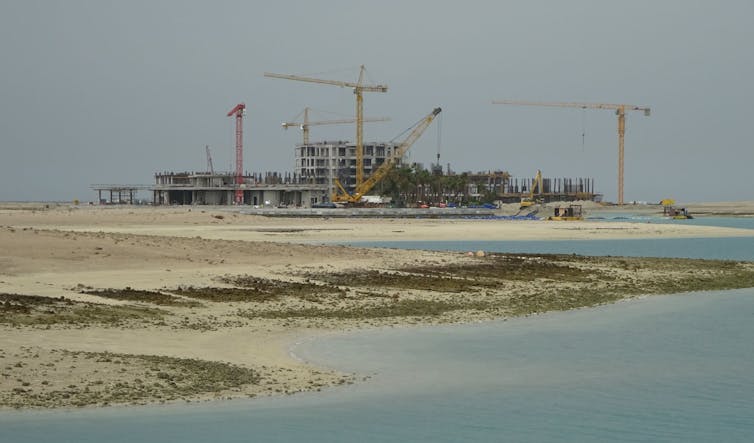
In Lagos, the Gulf states and other island-building hotspots like the shores of the Chinese island province of Hainan, developers know their creations must be defended from the sea. Nigeria has the Great Wall of Lagos, a sea barrier containing about 100,000 concrete blocks and rising nine metres above the sea, to protect Eko Atlantic. More modest structures are favoured elsewhere, usually in the form of artificial reefs that are dragged and dropped into place, creating a shield against surging seas.
Will any of this be enough? Such barriers provide enough protection long enough to make island-building an economic proposition. But this calculation misses something important: all these islands rely on the mainland – that’s where they get their energy, water and food. Lagos is a low-lying city and large parts are in danger of flooding. The boulevards of Eko Atlantic won’t look so chic if they are marooned.
Critics of new islands point to the havoc they cause to coastal and river systems, changing patterns of sediment deposition and erosion and creating silty, warm lagoons that turn living marine environments into dead zones.
This is one of the reasons the Chinese government intervened to halt island-building around Hainan. From its shores you can see 11 projects, some in full swing, most paused.
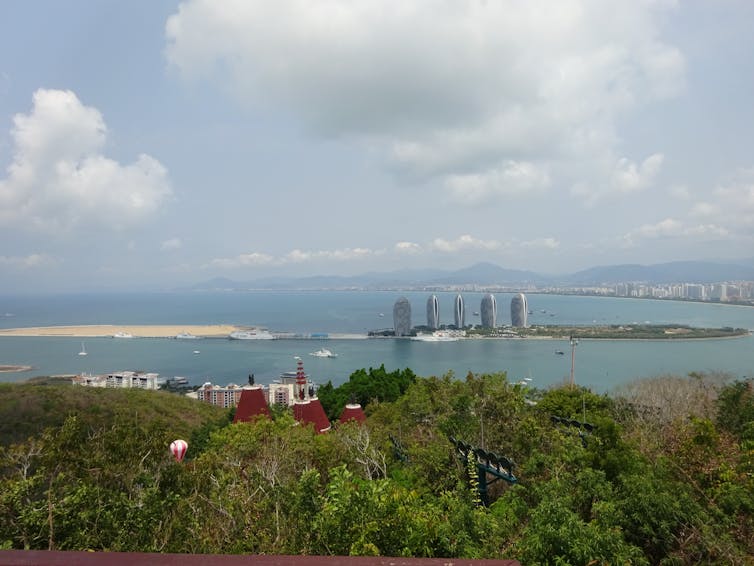
The world’s biggest and most spectacular new island, Ocean Flower, is found here. It is shaped like a lotus with scrolling leaves and is already crowded with apartment blocks and outlandish architecture, including European-style castles, grandiose hotels and amusement parks. The plan was to have 28 museums, 58 hotels and the world’s largest conference centre.
Even in the hyperbolic world of island building, it sounds extreme. The developer, Evergrande, is now in financial trouble and 39 residential towers on Ocean Flower have been deemed to have flouted environmental and planning regulations and ordered to be demolished.
Boom-and-bust cycles would appear to plague new islands. But these tales shouldn’t mislead us into thinking this is an ailing industry. The financial incentives remain enormous and island makers are an adaptive breed.

Floating For A Few
Floating islands have come to the fore recently: anchored platforms whose construction does not involve scraping away the seabed, making them less disruptive to the marine environment.
Plans for floating cities keep bubbling up. One prospect, Green Float, led by the Japanese company Shimz, would be a floating Pacific city designed to float on the equator “just like a lily pad” and house 40,000 people.
Building on the high seas will always be challenging, so it’s no surprise that ventures closer to shore, such as the Floating City in the Maldives, have been the first to materialise. Floating City is slated as a 500-acre development with 5,000 low-rise homes for 20,000 people arranged in a coral-like scatter of closely connected islets. The first islands have already been towed into place.
The Dutch architect of the scheme, Koen Olthuis, hopes that the Floating City will not be the preserve of the rich (unlike the others I’ve mentioned). His vision is of ordinary Maldivians, having lost homes and livelihoods to rising seas, finding a safe anchorage in the Floating City.
But from what I’ve seen, the world of artificial islands caters to the few not the many. Island-building is led by private developers, not environmentalists – or even states. Foreigners are already being induced to buy into Floating City and told this will be their ticket to a Maldivian residence permit. The bond between wealth and island building will not be easily broken.
Don’t have time to read about climate change as much as you’d like?
Get a weekly roundup in your inbox instead. Every Wednesday, The Conversation’s environment editor writes Imagine, a short email that goes a little deeper into just one climate issue. Join the 30,000+ readers who’ve subscribed so far.![]()
Alastair Bonnett, Professor of Geography, Newcastle University
This article is republished from The Conversation under a Creative Commons license. Read the original article.
Right to roam: paths to 2,500 public areas are being blocked by landowners due to outdated laws

Vixen Tor is a distinctive, craggy granite outcrop on the western side of Dartmoor, the largest and highest upland area in southern England. But this secluded moorland beauty spot, with a right to roam provided by the Countryside and Rights of Way Act 2000, is hard to get to.
Surrounded by private land, this tor is one of around 2,500 access islands in England and Wales. Other examples include Gillcambon in the northern Lake District and land near the village of Wylye in Wiltshire.
These wild places are open to the public but can only be accessed by helicopter or by trespassing over private land.
The right to roam campaign to draw attention to these legally inaccessible islands has been popularised by veteran campaigners such as authors Guy Shrubsole and Nick Hayes.
These advocates for access contend that it is now time to rethink access law in England and Wales. Based on my research into environmental and land law, I argue access islands seem to be a legacy of laws that have been poorly executed, and outdated before even coming into force.
The campaign for a right to roam predates the Labour party, but gained momentum under the post-war Labour movement. In fact, the promise of a wider right to roam over the English countryside can be found in most of the Labour party’s post-war general election manifestos. This included the manifesto that preceded Blair’s 1997 landslide victory, which had promised “greater freedom for people to explore our open countryside”.
Blair had promised to govern as new Labour however, and sought to distance his party’s policies from those of his predecessors. This included support for the politics of the “third way”.
This was a controversial ideology inside his own party, positing that political solutions are not always found on the left or the right, but can draw on a range of ideas with an aim of finding balance and compromise. The Countryside and Rights of Way Act 2000 can be seen as a product of this era, balancing a limited right to roam on foot with significant powers for landowners to close their land temporarily.
Specifically, the right to roam extended to common land, and to mountain, moor, heath and down, all described in this act as open country. Access was not extended to more accessible lowland areas, other agricultural land or woodland.
There are no access islands in Scotland, however, where access laws are more generous than those in England and Wales. The Land Reform (Scotland) Act contains a presumption in favour of the right of access, with small exceptions such as private gardens, schools and industrial land. By contrast, access law in England and Wales works on a presumption of trespass, with small exceptions allowing access.
My own research into parliamentary papers from the late 1990s shows that the current right to roam was also chosen because it was one of the cheapest solutions, and could be rolled out quite quickly at a time when Blair’s cabinet was looking for support from Labour backbenchers.
A lot of the mapping of open country was done quickly and cheaply through aerial photography. Surveyors would only be dispatched to a site with equipment to count plant species to settle the most contentious cases.

Landowners could appeal and, at times, exploit the uncertainties of this mapping process. According to the Right to Roam campaign organisers, possible trespass protests at the island of Vixen Tor are planned for later this year as a result of this.
Much of the surrounding fields were originally mapped as access land but this was later appealed by the landowner on the grounds that it was improved grassland rather than moor. This closed a vital corridor of access land and left the tor itself as an island.
Following the introduction of the Countryside and Rights of Way Act 2000, grants were made available for landowners to improve gates, stiles and footpaths. Local authorities have the power to negotiate with landowners to open or divert new footpaths. Some have indeed done so. In spite of this, there was no general power to provide pedestrian routes to these islands.
The Future Of Access
Since the introduction of the Countryside and Rights of Way Act, improving and widening access has been a low political priority, but the possibility of a Labour victory in a 2024 general election has led many to believe that a new and more effective right to roam could soon be established.
Kier Starmer’s team has spoken of Scottish-style access which would provide a much wider right of access over woodland, green belt and other open countryside. Starmer has already been accused of a U-turn, promising better rights of access while protecting the rights of landowners.
Rather than a U-turn, this looks like evidence that Labour’s policy on access is still a work in progress. Access campaigners will be waiting for the next election manifesto with eager interest.
Meanwhile, future protests are planned and campaigners are still asking for Scottish-style rights of access to be extended to England and Wales. Whatever the solution, our access to the countryside should be given the parliamentary time and investment that it deserves.
Don’t have time to read about climate change as much as you’d like?
Get a weekly roundup in your inbox instead. Every Wednesday, The Conversation’s environment editor writes Imagine, a short email that goes a little deeper into just one climate issue. Join the 30,000+ readers who’ve subscribed so far.![]()
Ben Mayfield, Lecturer in Law, Lancaster University
This article is republished from The Conversation under a Creative Commons license. Read the original article.
Elephant calves have been found buried – what does that mean?

The myth of elephant graveyards has pervaded popular culture, and recent observations of buried Asian elephant calves may finally give that legend some credence.
In the research published in the Journal of Threatened Taxa, two scientists describe five instances where elephant calves have been found buried in a legs-upright position within irrigation trenches of tea plantations in northern Bengal, India. The authors argue that the unusual positioning, the surrounding ground being compacted by the feet of several elephants and injuries suggestive of dragging after death, all point to intentional burial practices.
If this conclusion is accurate, these observations could indicate an understanding of death and grief potentially unlike anything else we’ve seen in the animal kingdom, revealing yet another way in which humans are not as unique as previously thought.
Archaeological evidence suggests our hominid ancestors have been burying their dead for at least 100,000 years – potentially much longer. Burials are intriguing because of what they suggest about the minds of those doing the burying. For us – and presumably for our ancestors who started this practice – burial is not just about disposing of bodies, but an expression of grief and an honouring of the life that has passed.
Across cultures, people put time and effort into the rituals of burial as a way of commemorating life. Burials are a clear indication of our sentience and empathy. Indeed, it is commonly believed that our reactions to death signify humanity. To date, evidence of similar mental representations of death are scarce in other animal species, and despite a few anecdotes, no animal species has been found to systematically bury their dead in the ritualised way that we do.
Are Elephant Burials Intentional?
It may be too early to cross burials off the uniquely human list. While the recent reports of calf burials are intriguing, these five burials were not directly observed, so questions remain. It is possible, for example, that dead or weak calves fell into the trenches as they were being carried, before the ensuing panic of the family caused the trench to collapse around the body.
However, reports of burial are at least consistent with what we know about elephants’ acute reactions to death. Elephants have been observed carrying corpses of dead infants. They frequently show a change in behaviour as they approach a carcass of a family member or another individual.
This response can involve silent investigating, sniffing and touching body parts with their head held low, perhaps trying to move or rouse the carcass, and on rare occasions, placing mud or large palm fronds over the bodies of dead relatives. This all likely amounts to what, in humans, we would recognise as grief or mourning.
Understanding Death
Of course, elephants are not the only animals to show interesting reactions to dead associates. Crows often gather around and mob the carcass of another dead crow, in what has sometimes been called a funeral. This social gathering appears to provide the crows with an opportunity to learn about a danger to be avoided, lest they end up in the same state (as opposed to offering the chance to say goodbye in the traditional sense of funerals).
Even some social insects, such as ants, will clear away their dead. When ants detect certain chemicals released by dying or dead individuals in their colony, it induces them to remove the bodies – and in a few species even to bury them – in order to limit the possibility of disease transfer.
However, as researchers that study animal behaviour and, more specifically, grief, we have no reason to assume this extraordinary “corpse management” behaviour means that the ants have any understanding of life or death.
In the 1950s, biologist and entomologist E.O. Wilson applied the critical chemical to live ants, causing nest mates to respond as they would to a dead animal. They tried to drag the unfortunate individual out of the nest and dumped them a safe distance away.
Similar responses to the chemicals of decay have been noted in rats, who bury others that have been dead for long enough to turn putrid. Like Wilson’s ants, they also try to bury anaesthetised – but still living – rats sprinkled with the signature scent of decomposition. They even try to bury wooden sticks that have the same scent. Some social living animals are hard-wired to remove decaying items from their nest area.
These examples in rats and ants are clearly different to human burial, and to the mourning behaviour we see in elephants and several other species including orcas.
While the jury may still be out on whether or not elephants really choose to bury their dead, their emotional reactions to the death of family members or associates are undeniably extraordinary and deeply moving to observe. These reactions remain difficult to explain adequately without suggesting that elephants do have some kind of concept of death.
Don’t have time to read about climate change as much as you’d like?
Get a weekly roundup in your inbox instead. Every Wednesday, The Conversation’s environment editor writes Imagine, a short email that goes a little deeper into just one climate issue. Join the 30,000+ readers who’ve subscribed so far.![]()
Lucy A. Bates, Senior Lecturer in Comparative and Evolutionary Psychology, University of Portsmouth and Leanne Proops, Associate Professor in Animal Behaviour and Welfare, University of Portsmouth
This article is republished from The Conversation under a Creative Commons license. Read the original article.
Oil firms want to drill in four of the UK’s areas of outstanding natural beauty
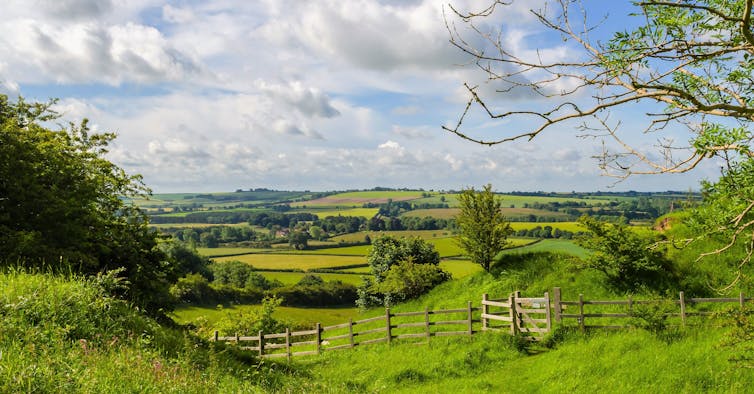
Think of onshore oil fields and images of oil derricks and “nodding donkeys” may spring to mind, perhaps in Texas or the Middle East. So it might come as a surprise to learn that the UK has its own onshore oil fields, mostly scattered across the east Midlands and southern England. Wytch Farm, on the south coast, is the largest onshore oil field in western Europe.
The industry is now looking at the UK with renewed vigour. Reserves that were previously considered too expensive or hard to reach have been made accessible thanks to higher oil prices and breakthroughs in technologies like fracking and horizontal drilling.
There are plans for new drilling at 15 locations across England, with a Friends of the Earth investigation showing four of these sites are situated within officially designated areas of outstanding natural beauty.
One of these sites is near the village of Biscathorpe in the picturesque Lincolnshire Wolds, where an oil company wants planning permission to start drilling. Following an initial rejection by the local council in 2021, a planning inspector’s investigation prompted by the UK government led to the refusal being overturned in November 2023.
This reignited intense local debate, and campaigners recently obtained a judicial review from the high court, to be heard later in the year.
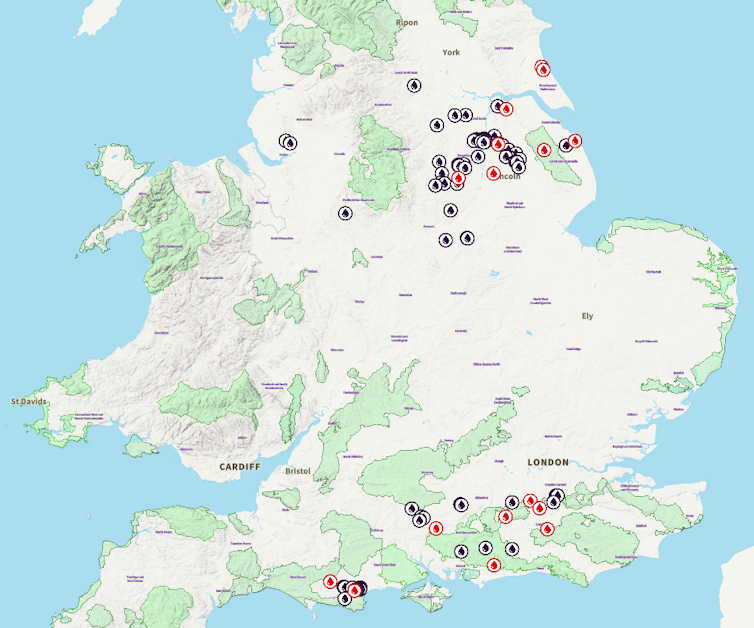
The Sums Add Up – But The Alternatives Are Better
Precise extraction rates are difficult to predict for the Biscathorpe site and will vary throughout the lifetime of the well. Comparing with existing nearby sites, Biscathorpe might provide an average of around 600 barrels per day over its first 15 years at a cost of a competitive US$18 (£14) per barrel – starkly lower than the US$30-US$50 (£24–£39) associated with North Sea oil fields.
Oil is currently priced at around US$80 per barrel. Although a large share of revenue would go to the state, the site’s backers might make around US$8 (£6) profit per barrel or around £2.5 million per year. With the oil company seeking planning permission for 15 years of extraction, the economic motivation is obvious.
National energy security was given as the main reason for the planning inspector to overturn the local council’s initial refusal. Yet the site’s potential oil yield, while economically tempting at the local scale, pales in comparison to the UK’s daily oil consumption of 1.3 million barrels.
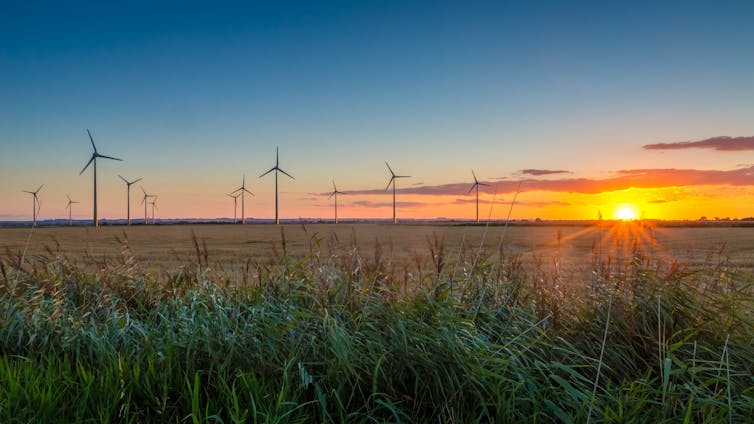
For comparison, a modern onshore wind farm with 14 turbines could generate the same amount of energy as those 600 barrels of oil per day, assuming the oil is refined for petrol vehicles and the wind energy powers electric vehicles. The contrast is even more significant when comparing heating. Just 10 wind turbines could heat as many homes as 600 barrels of oil per day (when comparing oil boilers to homes heated by modern air-source heat pumps).
Sustainable energy technology is still improving fast. Ten years ago we would have required around 19 wind turbines for the transport comparison and 16 for the heating comparison. Oil isn’t going to make similar efficiency improvements any time soon.
Focus On Wind Not Oil
This makes the search for onshore oil harder to justify when the country is trying to reduce its carbon emissions to net zero. The UK has plenty of wind. And, unlike some onshore oil reserves, that wind isn’t intrinsically tied to any particular areas of natural beauty. Yet very few onshore wind farms have been built over the past decade, even despite planning regulations being relaxed in 2020.
It’s evident that just as local planning and regulation play a crucial role in safeguarding cherished nature spots, our broader energy policy must equally prioritise the protection of our planet. This dual focus on local conservation and global environmental health is crucial for mitigating the worst impacts of climate change.
Rather than extracting limited onshore oil reserves, the UK’s energy security would be much better served by installing more wind and solar power. Diversifying energy sources through renewables would reduce the reliance on volatile oil markets and mitigates the risk of further conflicts like Russia-Ukraine, leading to more stable energy prices. The UK could also position itself as a leader in clean energy technologies, just as it was once a leader in oil & gas technology.
In light of the latest budget announcements, which were widely criticised for their lack of substantial green measures, the UK stands at a crossroads. The choice is between continuing down a path that risks natural heritage and global environmental health or one that embraces renewable energy and sustainable development. The preservation of areas of natural beauty and the broader fight against climate change demand decisive action and visionary policy making.
Don’t have time to read about climate change as much as you’d like?
Get a weekly roundup in your inbox instead. Every Wednesday, The Conversation’s environment editor writes Imagine, a short email that goes a little deeper into just one climate issue. Join the 30,000+ readers who’ve subscribed so far.![]()
Tom Rogers, Senior Lecturer in Sustainable Energy Engineering, Nottingham Trent University
This article is republished from The Conversation under a Creative Commons license. Read the original article.
Four ways to eat less meat that are better for the planet, your health and your bank balance

Do I choose the meat in my local store or drive out of town for tofu instead? Shall I add honey to my winter porridge or would strawberries or mango be better? Should I choose to drink oat milk or organic goat’s milk?
Most people are familiar with the idea that food consumption will affect their health. But food consumption also contributes between 20% and 30% of the environmental footprint from daily life, with impacts from production, processing, transport and retail. For many of us, our diet could be healthier and more sustainable, but it can be hard to know which options will have the biggest positive effect.
As part of our research into healthy and sustainable eating, interviews with predominantly young adults found that UK consumers are willing to make small changes that would improve the health and environmental footprint of their diet, if these changes will have some benefit and are of little cost to them. Small dietary changes tend to be easier to maintain in the longer term than larger changes, but the small changes to make for greatest benefit, for health and the planet, are not well known.
To provide this advice, we compared the health-related, environmental and financial effects of a number of sustainable dietary actions that have previously been proposed. We applied 12 sustainable actions to the dietary data of 1,235 UK adults in the National Diet and Nutrition Survey.
We investigated differences between the new diet and the original diet for six dietary markers (protein, saturated fat, sugars, salt, iron, calcium), three environmental markers (greenhouse gas emissions, freshwater withdrawals, land use), and dietary cost. There were some limitations – we couldn’t quantify the impacts of reducing food waste, for example.
But our research showed that four simple switches resulted in the greatest benefits for your diet, the planet and for your pocket. These changes won’t be small or simple for everyone, but you don’t need to try them all. Every switch will benefit both your health and our home, and lots of small changes will soon add up.
1. Replace Meat Items With Pulses
Beans, chickpeas and lentils are high in protein, fibre and are low in fat. They have low environmental impacts and can even benefit the growth of other crops, plus they are very inexpensive. Barriers that prevent people consuming pulses tend to focus around their taste or texture. And pulses can be perceived as inconvenient, effortful or difficult to cook.
Start with houmous – a tasty pre-prepared chickpea spread or dip. Including more pulses in your diet is made easier and quicker by using pre-prepared and canned pulses or by batch cooking dishes and freezing portions for another day. Try incorporating canned beans into your favourite soups and stews. Add lentils to your bolognese sauce. If you’re feeling more adventurous, experiment with some tasty new recipes from cultures that traditionally use pulses, such as Mexico, the Middle East or India.

2. Replace Meat Items With Eggs
Eggs, like pulses, are highly nutritious. They provide protein and many micronutrients, have low environmental impacts, and are good value for money. Choose free-range eggs for added animal welfare benefits.
Eggs can be easy to prepare. They are soft and can be easier to eat for those who may have difficulties chewing, swallowing or cutting up foods. Eggs can add taste and flavour to your diet. Eggs can be consumed at any meal. Poached or scrambled, they make a great high-protein breakfast, hard-boiled eggs are a filling on-the-go snack, and sous-vide (slow-cooked) eggs can impress guests at dinner parties.
3. Replace Meat Items With Hard Or Soft Cheeses
Cheese is another nutritious food, full of calcium and other micronutrients, good for strong bones and teeth. Often considered a food with high environmental impacts, cheese typically has a lower environmental footprint than meat, even more so for soft cheeses.
The environmental impact of dairy foods increases with the processing needed, predominantly as a result of the waste created at each stage of manufacture. Milk has the lowest environmental impact, yoghurt slightly higher, soft cheeses, such as cream cheese, slightly higher again, and hard cheeses such as Cheddar are higher still.
Try switching your pepperoni pizza for four cheeses pizza, replace the meat in pasta dishes for soft blue cheese to retain flavour, and use soft cheeses in sandwiches.
4. Reduce Meat Consumption By 20%
Meat production, particularly for beef and lamb, has high environmental impacts. Consuming a lot can be unhealthy, but meat consumption in small amounts can offer a valuable source of protein and micronutrients, including iron, zinc and B vitamins. Try consuming smaller portions, increase the quality of meat you buy to gain the health benefits while eating less, or aim to have regular vegetarian days, such as meat-free Mondays. Choose the meat option when you’re eating out, make it a treat for special occasions, and eat more plant-based dishes at home.
Don’t have time to read about climate change as much as you’d like?
Get a weekly roundup in your inbox instead. Every Wednesday, The Conversation’s environment editor writes Imagine, a short email that goes a little deeper into just one climate issue. Join the 30,000+ readers who’ve subscribed so far.![]()
Katherine Appleton, Professor of Psychology, Bournemouth University and Danielle Guy, PhD Candidate in Psychology, Bournemouth University
This article is republished from The Conversation under a Creative Commons license. Read the original article.
How the Tudors dealt with food waste

More than ten million tonnes of food is wasted in the UK each year. Leftovers perish in their plastic Tupperware tombs, supermarket bins heave with damaged but perfectly edible produce and fields are littered with spoiled harvests. Preventing good food from ending up in the bin is an important part of the global fight against climate change.
But what about the past? How did our ancestors deal with food waste? Surprisingly, given the pertinence of the issue in modern discourse, very little has been written about the history of food waste. My new book, Leftovers: A History of Food Waste and Preservation, addresses the topic across the last half a millennium, from the Tudor kitchen right up until the present day.
Tudor society was intrinsically religious. Henry VIII’s well-known divorce issues ignited the English Reformation, the tumultuous transformation from Catholicism to Protestantantism, heightening religious fervour and shaping attitudes towards food across the country.
In Tudor eyes, food was the ultimate gift from God that literally sustained life on earth. And in the form of the bread and wine, it was food that Christ had chosen to represent his body and blood at the Last Supper. No wonder that wasting food was seen as sinful and immoral. “The least crum, which can be saved, be not lost,” commanded the puritan writer Ezekias Woodward, “no, not a crum”.
Familiar to many of us today, clergymen taught their parishioners about the feeding of the 5,000. In the Biblical tale, when Jesus went to mourn the passing of John the Baptist, the large crowd that followed him were miraculously fed on just five loaves and two fish. According to the Gospel of John, at the end of the meal, Christ told his disciples to “gather the pieces that are left over,” so “nothing be wasted,” and they collected 12 full baskets of leftovers.
In another Biblical parable, the rich man Dives went to hell when he denied the scraps of his feast to the poor man Lazarus, who instead ascended to heaven. Like Lazarus, the Tudor poor waited at the gates of grand estates to receive the remains of lavish feasts. An almoner (a church official who was responsible for distributing money or food to the poor) collected leftovers but also the first slices of meat to be given in charity.
Leftovers
Even those from humbler backgrounds could donate surplus food. Instead of throwing it to the pigs, the whey left over from cheese making, for example, could become a nourishing summer drink for the labourers who toiled in the hot fields.
Charitable housewives who expressed their piety by distributing such leftovers to their poor neighbours would “find profit therefore in a divine place,” according to Gervase Markham in his popular 1615 cookery book.
As well as being distributed to the poor, the leftovers from large Tudor households went to employees rather than going to waste. In Queen Elizabeth I’s royal household, workers who cooked meats in the “boiling house” received the “dripping of the roste” and even “the grease… in the kittles (kettles) and pannes” as a benefit for their labour. A waste product to those with plenty, these meat juices could be reimagined to add flavour and nutrition to sauces and gravies.
Still, those at the top of the social scale had access to far more than they could possibly eat. Elizabeth’s table overflowed with elaborate pies, roasted meats, sugar sculptures, imported wines and exotic fruits.
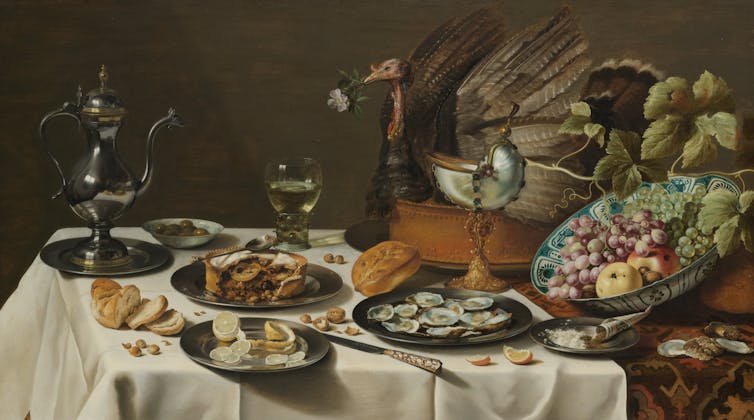
Waste And Hunger
Meanwhile, widespread hunger led to rioting across the country in the 1590s after years of devastating harvests. As wealthy landlords closed off their land to common pasture, flour prices tripled over the span of just a few years.
In the Bible, Ruth gleaned from the field of a wealthy man named Boaz, in accordance with the Old Testament law: “when ye reap the harvest of your land, thou shalt not wholly reap the corners of thy field…thou shalt leave them for the poor and stranger”. With this example, the poorest in Tudor England collected the scraps from the harvest to feed themselves and their families.
Squaring these disparate images of plenty and want is not too hard when we consider that in the UK 9.7 million adults experience food insecurity according to data from September 2022. Meanwhile the richest 5% take home 37% of the nation’s total disposable income. On a global scale, a third of the food we produce goes to waste while 842 million people are afflicted with chronic hunger.
Food waste today is a pressing environmental issue. But this foray into Tudor food waste reminds us that it is also a deeply moral issue that reflects the growing inequalities between the rich and the poor. In telling the so far untold history of food waste, my research reflects on our changing moral values, and our relationship with food, people and planet.
Don’t have time to read about climate change as much as you’d like?
Get a weekly roundup in your inbox instead. Every Wednesday, The Conversation’s environment editor writes Imagine, a short email that goes a little deeper into just one climate issue. Join the 30,000+ readers who’ve subscribed so far.![]()
Eleanor Barnett, Leverhulme Early Career Fellow in the School of History, Archaeology and Religion, Cardiff University
This article is republished from The Conversation under a Creative Commons license. Read the original article.
Haiku has captured the essence of seasons for centuries – new poems contain a trace of climate change
Jasmin Kirkbride, University of East Anglia and Paul Chambers, University of BristolA successful haiku could be described as a half-finished poem. Originating in Japan in the 17th century, the haiku uses a combination of sensory language, seasonal references, a sense of contrast and a focus on the present tense to share an experience between writer and reader.
It relies on the reader to “finish” the poem by employing their recollections of sensations and emotions to connect to the moment described as vividly as they do their own experiences.
Haiku often depict moments in a particular season by describing the behaviour of animals, the weather and the appearance of plants. With a new generation of haiku poets, there’s a whole new collection of work that reflects how seasons are changing as a result of rising global temperatures.
Could haiku poetry written more recently contain a trace of the changes wrought by our warming climate? That’s something one of us (Jasmin) set out to investigate by analysing haiku published in English over the last 30 years.
First, let’s learn how to read haiku.
Do the seasons feel increasingly weird to you? You’re not alone. Climate change is distorting nature’s calendar, causing plants to flower early and animals to emerge at the wrong time.
This article is part of a series, Wild Seasons, on how the seasons are changing – and what they may eventually look like.
What enables this brief poetic form to achieve its resonance is its use of negative space. A haiku is a poem in two parts – a fragment (one line) and a phrase (two lines), divided by a pause (signified by a line break or punctuation).
Related to the concept of ma in Japanese visual arts, which perceives empty space in an artwork as a positive entity, the negative space in haiku is a way in to the contemplative experience of the poem.
The following by Japanese poet Matsuo Basho (1644-94) is the most famous haiku ever composed:
old pond –
a frog leaps in
water’s sound
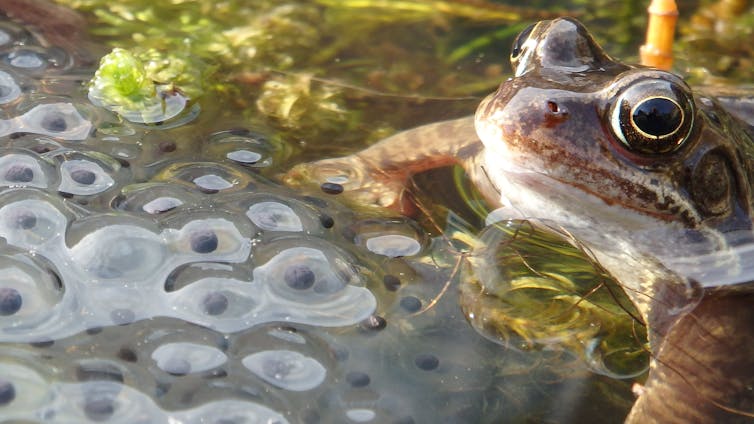
To write a different account of this same event, you could say something like a frog leapt into an old pond and made a sound. But the key distinction between the two is the negative space that follows Basho’s first line. It encourages the reader to pause, breathe and contemplate the old pond before they encounter the frog leaping and the sound of the water.
When our minds become still, and reflective, like the old pond, we witness the action of an animal living simply according to its nature. We perceive things just as they are. The result is an experience of interconnectedness: a realisation that we are not separate from the natural world, but a part of it.
In the following haiku by Basho we experience the season as both a physical setting and as a metaphor for emotional experience:
no-one walks
along this road but I
autumn evening

In a world of increasing anxiety and distraction, the negative space in a haiku affords us moments of reflection and invites us into a dialogue with the rest of the natural world.
It requires a sensitivity on the part of the reader, but its effect is to instil an appreciation for what surrounds us. Through a meaningful, felt awareness of the seasonal cycles, the reading and writing of haiku inspires a deeper connection to our environment.
How Haiku Is Changing
I spent the summer of 2022 in my home office, consuming decades of haiku journals and anthologies, trying not to leave sweaty fingerprints on their ancient covers in the unnatural 40°C heat. As that year’s researcher-in-residence for the British Haiku Society, working on a project called Twisting Point, I was searching for tell-tale traces of climate change in the English-language haiku archives.
My goal was to contrast present-day haiku against older archival ones, using the differences between them to make readers sensitive to nature’s decline and to suggest how the English-language haiku form might be evolving due to climate change.
I was looking at 30 years’ worth of haiku. In the UK during this time flying insect populations have fallen by over 60%, 41% of wildlife species have decreased in abundance and the frequency of heatwaves, floods and other extreme weather have all increased. More than enough change has occurred in these three decades to manifest in the archives.
Yet, these changes emerge in a strange fashion. It’s hard to write about nature’s losses, and writers tend to do so unconsciously. Rather than tracking population declines in concrete terms, then, the language used around certain species has altered, becoming soaked in grief.
For example, over 25 years numbers of curlews, a wading bird, have halved in the UK. Earlier haiku described their powerful cry “lengthen[ing] the hill[s]”; a poem written in 2022 found them “calling across wintry mudflats, haunting the wind”. Similarly, since 2000, declining butterflies have moved from being a “cloud” common in the background of haiku to lone survivors “pushing against time”.
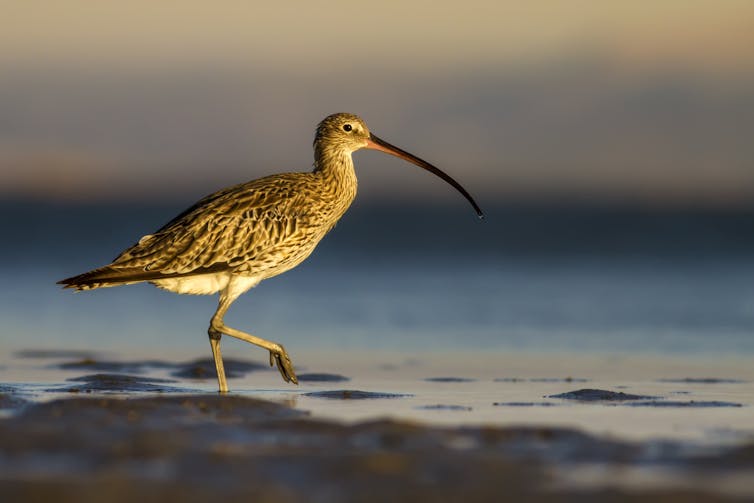
The archetypal seasonal words used in haiku are shifting too, disrupting centuries-long traditions of meaning and emotion. As winter has been squeezed into weeks, spring arrives earlier and frosts become tardier, snowdrops have become a symptom of the changing haiku form.
Here is a haiku published in the 1990s in the spring seasonal category (the traditional haiku date for spring’s beginning is February 4):
song of a greenfinch
a ray of sun on cold steps
and a few snowdrops
By 2022, snowdrops are emerging in December in this tanka (a slightly longer poem variety) by Ruth Parker:
Omicron triumphs
and sends Christmas packing – but in the garden
the delicate white hope
of snowdrops

I was struck by how few haiku seemed to address climate change. Twisting Point became my call to arms for haiku writers. Haiku are about intense moments of perception, in which “the vast is perceived in one thing”. But in addressing climate change so little, are English-language haiku really depicting “the vast”?
Since 2022 the issue has come to the fore, with The Guardian describing how Japanese haiku writers are “lost for words” in the face of climate change. Meanwhile, Twisting Point is to be republished in a journal of the New Zealand Poetry Society. The call to haiku arms is growing: the vast climate crisis is upon us, and we should write about it.![]()
Jasmin Kirkbride, Lecturer in Publishing, University of East Anglia and Paul Chambers, PhD Candidate in Creative Writing, University of Bristol
This article is republished from The Conversation under a Creative Commons license. Read the original article.
Green lights on fishing nets could slash bycatch of sea turtles, says research
Robin Snape, University of ExeterBycatch in fishing gear is one of the biggest threats to sea turtles. But these creatures are particularly sensitive to green light so they’re less likely to get caught up in fishing nets fitted with green LED lights.
Since 2014, a team of marine biologists and I have been trialling ways to reduce turtle bycatch using lights in nets as a deterrent. Our recent study shows that these lights can reduce bycatch by approximately 40%.
The adult green turtles I work with in Cyprus are over a metre long and weigh more than 100kg. The females nest and lay their eggs on Alagadi beach, but only one in a thousand of their tiny hatchlings will survive to adulthood decades later.
Once they have left their nesting beach, young green turtles often wash up dead. Thousands of turtles are killed annually due to the activities of the Turkish Cypriot fleet alone.
With fish stocks in decline, fishers are using more nets to catch more fish – making bycatch more likely. That effectively negates any conservation efforts to help protect the young green turtles that feed on the coastal seagrass beds.
In this part of the Mediterranean Sea, fishers leave kilometres of net on the seabed overnight in these seagrass habitats. When they haul them in the morning they often find drowned turtles entangled.
But quantifying bycatch is not easy, especially in Cyprus, where hundreds of small fishing boats use different types of fishing gear. It’s even harder to identify the most dangerous fishing methods and prioritise possible solutions.
Together with local fishers and marine authorities, we have monitored impacts on marine life by deploying onboard observers and having fishers report their catches of dolphins, sea turtles, sharks, rays and monk seals.
The first lights we trialled were effective, and Cypriot fishers corroborated the positive results from trials in Mexico. But they found these prototypes difficult to use, with moving metal parts that got tangled in the “set nets”.
These long panels of net which fishers deploy on the seabed are stored in buckets. Due to tangling, the lights needed to be attached and removed on every fishing trip.
They’d often stop working and were not specifically designed for these set nets. At US$40 (£30) per light, the cost of fitting 3km of net is US$12,000. That’s way more than the annual cost of replacing nets that have been cut to release turtles that have got caught.
To make this concept more feasible, we teamed up with Devon-based marine engineering company FishTek in 2018 to develop a scalable solution. After years of trials, we developed a more efficient solution known as NetLights, which costs just US$8 per light.
Net Illumination
These battery-powered lights that can be easily attached to huge fishing nets reduce bycatch of turtles by around 40%. But more trials are needed.
Because the green turtles living around the Cyprus coast keep dying, there aren’t that many of them, so catch rates remain low. Over time, more trials will provide more accurate results.
Thousands of NetLights have been made available to 50 fishers in Cyprus as part of a broader trial. Most are pleased with the target catch rates and ask for more. They’d be most likely to use them if costs are subsidised or if bycatch reduction tech like this is made a legal requirement to safeguard turtles from particular types of fishing net.
Every fisher uses a slightly different net set up and it’s hard to please them all. Ideally, the lights need to be slightly smaller, lighter and more buoyant so that they can replace the floats that fishers use to stand the nets in the water, without adding more bulk.
Other Solutions
Aside from training fishers to rescue turtles that get entangled, other existing bycatch reduction methods include turtle excluder devices that fit inside the neck of trawl nets. While small fish and shrimp can pass between the bars to the back of the net, larger turtles bump against the metal grid and can escape through a flap in the mesh net.
In the US, bottom trawlers catching shrimp have to use turtle excluder devices to provide an escape route for turtles and other large objects.
Circular fishing hooks which replace “J” shaped hooks are less likely to snag turtles. These have been rolled out in large-scale commercial tuna and swordfish fleets on the high seas. But their success has been variable and in some cases reduced target catch can make them economically unsustainable.
If not enforced by governments, measures like these may be requested from supermarkets as part of a bycatch audit to promote best practice within the supply chain.
In 2023, fisheries policy in northern Cyprus was updated to include some no-take zones and restricted areas to protect fish stocks and other vulnerable species. If properly enforced, both the sea turtles and the fish that fishers rely on will benefit from these measures.
By rolling out more NetLights in set net fisheries that are a top priority for bycatch management, and monitoring their effectiveness against the baseline data we now have, there is huge scope to improve the chance of survival for green turtles.
Don’t have time to read about climate change as much as you’d like?
Get a weekly roundup in your inbox instead. Every Wednesday, The Conversation’s environment editor writes Imagine, a short email that goes a little deeper into just one climate issue. Join the 30,000+ readers who’ve subscribed so far.![]()
Robin Snape, Associate Researcher, Centre for Ecology and Conservation, University of Exeter
This article is republished from The Conversation under a Creative Commons license. Read the original article.
ARTEXPRESS 2024: Two Local Creatives Focussed On Our Great Outdoors Part Of Art Gallery Of NSW's 2024 Exhibition
Two 2023 HSC students from our area form part of the Art Gallery of New South Wales presents ARTEXPRESS 2024, a showcase of outstanding artworks by young artists from across New South Wales for the art-making component of the Higher School Certificate (HSC) examination in Visual Arts.
Jessie O'Rielly's 'Inattentional blindness', Pittwater High School, and Millie Crowley's 'Landscapes revealed', Northern Beaches Secondary College, Freshwater Senior Campus, are among those on display, and chosen from over 8000 works that formed part of the 2023 Visual Arts completions.
In her Artists Statement for 'Inattentional blindness' Jessie said:
'Nature is rarely noticed in its rawest form. My body of work examines the natural beauty of the untouched environment, and how it brings life into colonised areas. Within the beauty of natural landscapes, we can reflect upon the ever-changing world and accept that these natural landscapes are becoming more rare to find. In my body of work I have used gouache landscapes to represent what people don’t have time to appreciate and take in. By concentrating on simple yet detailed elements of nature, my intent is to express the important and necessary connection between individuals and the environment around them.'
Influencing artists: Tomas Sanchez, Hrvoje Majer, Thomas Edwin Mostyn, Phil Lockwood

Inattentional blindness © Jessie O'Rielly
In her Artists Statement for 'Landscapes revealed' Millie said:
'Landscapes revealed is an interpretation of the topography of the landscape around me, which has been a source of inspiration. My work is intended to express the ‘scaffold’ of the land: the basic shapes on which its beauty is built. I have used my skills of observation, my experiences and imagination to create my paintings. My stylistic approach – the use of shapes and an exaggerated colour palette – represents the colours and patterns that are found within the landscape. These colours and patterns only become evident when you immerse yourself in the environment.'
Influencing artists: Ben Waters

Landscapes revealed © Millie Crowley
ARTEXPRESS 2024 charts a breadth of topics impacting young Australians, and reveals common themes of identity, family, history, cultural heritage, place and home. The exhibition includes works across all Expressive Forms of the HSC Visual Arts curriculum, including painting, drawing, photo-media, sculpture, ceramics, time-based, documented form, printmaking, textiles and fibre, graphic design, designed objects and collections of works.
First shown at the Art Gallery in 1983, the annual ARTEXPRESS exhibition highlights the creativity and unique perspectives of the state’s most recent HSC Visual Arts graduates.
ARTEXPRESS 2024 features works by 50 students, chosen from 8660 student works submitted for the 2023 HSC examination in Visual Arts. The exhibition showcases work by students from both regional and metropolitan areas, government and non-government schools, and affirms the strength of young artistic talent from across New South Wales.
Art Gallery of New South Wales director Michael Brand said that ARTEXPRESS is a key pillar of the Art Gallery’s commitment to celebrating arts scholarship and creative learning in New South Wales schools.
‘It is always a joy to see the Art Gallery buzzing with the youthful energy of ARTEXPRESS. It reminds us of the crucial role of the arts in helping people of all ages connect and make sense of our world. I extend my congratulations to this years’ students on their stellar presentation of work, and as they move into their next chapter, I encourage them to continue enriching their lives with art,’ Mr. Brand said.
Exhibition curator and Art Gallery of New South Wales senior programs producer, learning and participation, Louise Halpin, said: ‘ARTEXPRESS remains one of the Art Gallery’s most popular annual exhibitions, and I believe this is testament to the students’ original and passionate interpretations of the world around them. It is exciting to imagine our future art landscape in the hands of talented young artists, including these students.’
This year’s ARTEXPRESS students will join an impressive cohort of former exhibitors including Ben Quilty (1991), David Griggs (1994), Jasper Knight (1997), Julie Fragar (1995), Tom Polo (2002), Bhenji Ra (2009) and Louise Zhang (2009). Since 1989, the Art Gallery has been the principal venue for ARTEXPRESS, displaying bodies of work by students from across New South Wales. ARTEXPRESS is presented in partnership with the NSW Department of Education and the NSW Education Standards Authority (NESA).
ARTEXPRESS 2024 is on display at the Art Gallery from 8 February to 21 April 2024. Entry is free.
For those who want to take a Virtual Tour of this year's ARTEXPRESS you can do so HERE
Joel Vaughan And Ellie Harrison Win Newcastle Pro QS 5000
- Victories Provide Australia / Oceania Region QS Titles to Both Winners
- Vaughan Becomes First Ever Male to Win SURFEST Back-to-Back
- Winter Vincent and Saffi Vette Qualify for Challenger Series With Runner-Up Finishes
- All Challenger Series Qualifiers for Australia / Oceania Region Locked In
Saturday, March 16, 2024
Today, Joel Vaughan (AUS) and Ellie Harrison (AUS) claimed victory at the Burton Automotive Pro & Newcastle Racecourse Women’s Pro World Surf League (WSL) Qualifying Series (QS) 5000, the co-sanctioned final event of the season for the Asia and Australia / Oceania QS regions. A stormy morning gave way to a stunning day as the two-to-four foot surf cleaned up and provided endlessly rippable sections to determine final QS rankings and 2024 Challenger Series qualifiers.
Runner-up finishes for Winter Vincent (AUS) and Saffi Vette (NZL) delivered both surfers the best results of their careers and were enough to see them jump multiple places in the rankings to earn a place on the Challenger Series for the very first time.
For the two event winners, Joel Vaughan (AUS) and Ellie Harrison (AUS), the victories boosted them into the No. 1 position on the Australia / Oceania region QS rankings, allowing them to claim the respective regional titles for the season. Meanwhile, the final results solidified Asia region QS titles for Sara Wakita (JPN) and Kian Martin (SWE).
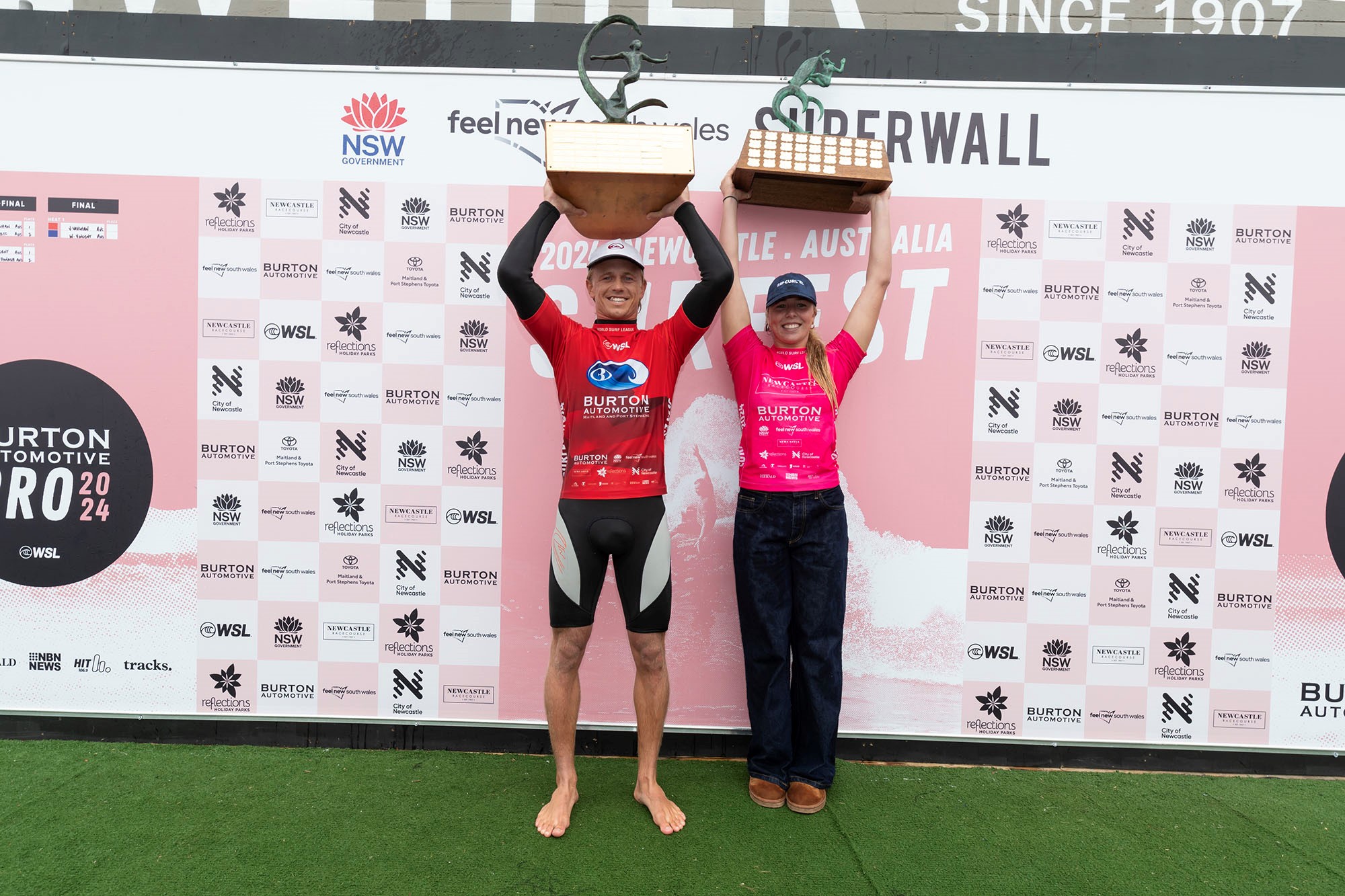
A dominant performance from 2023 winner Joel Vaughan (AUS) saw the Central Coast surfer claim the honour of being the first man to win SURFEST back-to-back in its 38 year history. Credit: WSL / Anderson
Vaughan Becomes First Ever Male to Win SURFEST Back-to-Back
Defending champion Joel Vaughan (AUS) became the first man to win the trophy back-to-back in the 38-year history of the iconic SURFEST event. Posting some of the competition’s highest scores every time he hit the water, Vaughan delivered an absolute highlight reel once again on Finals Day to take both the event win and the Australia / Oceania regional title.
“I’m pretty stoked to be the first male to win back-to-back,” Vaughan said. “ I was actually walking past the names all week and I was pretty stoked to see my name up there, and I’ll be stoked to see it up there again next year. To win the regional QS series was definitely a goal of mine. I did the calculations last night and I knew if I got second I wouldn’t have won. I was thinking about that all Final actually and I’m really happy to have taken it out.”
Having opened both his Quarterfinal and Semifinal with a 9.70 on his first wave, the 8.00 Vaughan earned on his second wave in the Final for a speedy air reverse was tame in comparison. Leaving the door open till the last second for Winter Vincent (AUS), whose dynamic two-turn backhand combo had earned him a 7.17, Vaughan closed out the heat in dominant fashion. With 15 seconds remaining on the clock, the 20-year-old ulitised his priority to block Vincent, turning it into a victory lap in the process by launching into yet another giant air reverse and posting an 8.60 to lock down his historic second SURFEST victory.

19-year-old Winter Vincent (AUS) placed runner-up in his first attempt in the Burton Automotive Pro, landing him straight in the Challenger Series. Credit: WSL / Anderson
Vincent Pushes Straight Into the Next Tier in First Year on QS
For the second year in a row an up-and-coming surfer from Manly has experienced a dream run at SURFEST to qualify for the Challenger Series. In 2023 it was George Pittar (AUS) and in 2024 it is Winter Vincent (AUS). In his first season competing on the QS, Vincent knocked out big names to climb the rankings and push straight into the next tier. Needing to make the Final to qualify, the 19-year-old did just that, defeating Mikey McDonagh (AUS) and Riaru Ito (JPN) in the process.
“I’m over the moon,” Vincent said. “I did not expect (to qualify for the Challenger Series) coming into this comp and I just kept going and had a few people in my corner and yeah, got it done. I had Julian Wilson in my corner all event and I feel like his experience helped me get through to the Final and do some of my best surfing.”

18-year-old Victorian Ellie Harrison (AUS) had one goal coming into the event, to claim the biggest win of her career so far. Credit: WSL / Anderson
Harrison Powers Through to Achieve Her Goal
Having already requalified herself for the Challenger Series from her 2023 rankings, Ellie Harrison (AUS) had one goal on her mind coming into the event - to win SURFEST - and that is precisely what the 18-year-old achieved. The winner of the 2022 Lake Mac City Pro Junior, which is also a part of SURFEST, Harrison stepped up to take the big event win, her second at the QS level and first QS 5000.
“I feel amazing, this event is so prestigious,” Harrison said. “So many of my idols have won. I’m grateful for everyone who runs this event and everyone who supports me. Going into this week I was pretty exhausted from the ABB (Australian Boardriders Battle). It was a big weekend up there but I still had my goal and just took it day-by-day. There was a few days that I wasn’t on, so I just tried to keep my energy and keep surfing. It’s a huge confidence boost.”
Utilising her powerful forehand to devastating effect, the Victorian peaked in the Final, earning her best numbers of the event when it mattered most. A 7.83 for a combination of a huge opening carve into an aggressive layback on the end section, backed up with a 6.33, left Saffi Vette (NZL) chasing an 8.39. Late in the Final, Vette was able to find a 5.77 for a single critical turn, but was unable to tap into the magic of earlier heats that saw her take down two WSL Championship Tour (CT) veterans, Bronte Macaulay (AUS) and Nikki Van Dijk (AUS).

A runner-up finish in SURFEST has capped off a massive season for Saffi Vette (NZL) that has both surprised the 22-year-old and given her a huge boost in confidence. Credit: WSL / Anderson
Vette Shocks Herself, Qualifying for Challenger Series and Olympics in the Same Season
Qualifying for the Challenger Series and the Olympics in the same season has been both a huge confidence boost and a shock for Saffi Vette (NZL). The 22-year-old has slowly risen in the QS ranks over a few years, but a win in the 2023 Mad Mex Maroubra Pro QS 1000 turned the tide. Having all but counted out the possibility of qualifying for the Challenger Series, the two big heat wins today over Macaulay and Van Dijk were massive for the Kiwi’s competitive future.
“Honestly, I was going into these last two events in 16th I think,” Vette said. “So the fact that I’ve climbed this far is crazy to me. I get really emotional about it but it’s been a hard few years and I’m really stoked that my hard work is paying off. I’m just really happy.”
All Challenger Series Qualifiers for Australia / Oceania Region Locked In
The conclusion of the event saw all Challenger Series qualifiers for the Australia / Oceania region decided. With Ellie Harrison (AUS) already qualified, Paige Hareb (NZL), Philippa Anderson (AUS), Rosie Smart (AUS) and Saffi Vette (NZL) were the four women to progress to the next tier, a return for Hareb and Anderson, and the first opportunity for Smart and Vette.
On the men’s side, Joel Vaughan (AUS), Dakoda Walters (AUS), Alister Reginato (AUS), Jarvis Earle (AUS), Tully Wylie (AUS), Oscar Berry (AUS) and Winter Vincent (AUS) were the seven qualifiers. Of those, it will be the first season on the Challenger Series for Walters, Wylie, Berry and Vincent. Newcastle’s Morgan Cibilic (AUS) finished fifth on the rankings, but his double-qualification allowed Vincent to gain his spot.
Wildcards will also be allocated for a male and female, respectively, from both Australia / Oceania and Asia, allowing those four surfers to join each of the qualified surfers from their regions.
The 2024 Burton Automotive Pro & Newcastle Racecourse Women’s Pro QS 5000 ran from March 11 - 17, 2024.
About the WSL
The World Surf League (WSL) is the global home of competitive surfing, crowning World Champions since 1976 and showcasing the world’s best surfing. The WSL oversees surfing’s global competitive landscape and sets the standard for elite performance in the most dynamic playing field in all of sports. With a firm commitment to its values, the WSL prioritizes the protection of the ocean, equality, and the sport’s rich heritage, while championing progression and innovation.
For more information, please visit WorldSurfLeague.com.
Report by Tom Bennett/WSL
Manly’s Tram And Bus Depots
By the BackTracks Channel
A story about a Steam Tram Depot that became an Electric Tram Depot that was replaced by a Bus Depot which then moved a few kilometres north to become one of the largest Bus Depots in Sydney, Australia.
NB: Videos on this channel are not meant to be 100% accurate historical records. Having said this, we try to ensure they are factually correct by using multiple sources from what we think are credible books, websites, blogs and articles. But we do make mistakes....
It's worth nothing that Sydney's original tramlines didn't use colours (or even route numbers) to denote lines - instead they used the 'termini' of each line as their names. In the route animations we have arbitrarily selected colours to differentiate the lines visually on the maps.
Funding Guarantee For Program Delivering A Head Start In Vocational Studies
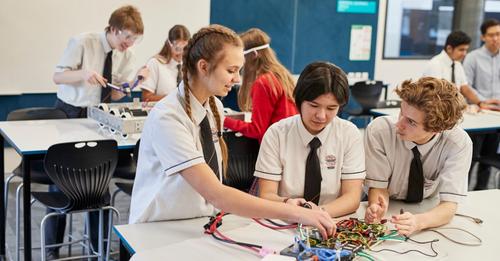 The NSW Government is expanding a successful educational program that raises student engagement at schools across the state through increased access to vocational education opportunities.
The NSW Government is expanding a successful educational program that raises student engagement at schools across the state through increased access to vocational education opportunities.
Funding for the Educational Pathways Program (EPP), now operating in 148 public high schools in 9 regions, will be continued for another 2 years and expanded to an additional 20 schools across the state.
The EPP is an innovative program designed to improve education and career outcomes by introducing public high school students to a range of vocational training and employment pathways.
It supports existing careers activities at schools by providing extra resources including 2 key roles: Head Teachers Careers and School-Based Apprenticeships (SBAT) and Traineeship Engagement Officers.
As part of the program, schools match students with local employers and offer support while they explore their pathways through school-based apprenticeships or traineeships.
Over the past 12 months the EPP has seen:
- >1771 students undertake school-based apprenticeships or traineeships (SBAT), a 129% increase from February to October 2023
- >more than 1000 students re-engage in their education through support and mentoring initiatives
- >more than 7800 students participate in “test and try” vocational courses with TAFE NSW
- >1079 students secure nationally recognised pre-apprenticeship or pre-traineeship credentials.
One school participating in the program is Granville South Creative and Performing Arts High School which focuses on career opportunities for students in the trades and aged care sector, both areas of skilled shortages across the state.
The locations of the 20 additional schools are:
- Batemans Bay High School
- Bega High School
- Bourke High School
- Bowraville Central School
- Brewarrina Central School
- Broken Hill High School
- Chatham High School
- Coomealla High School
- Coonamble High School
- Gilgandra High School
- Kempsey High School
- Macksville High School
- Melville High School
- Menindee Central School
- Moruya High School
- Narooma High School
- Nyngan High School
- Taree High School
- Wilcannia Central School
- Willyama High School
Deputy Premier and Minister for Education and Early Learning Prue Car said:
"The NSW Government remains committed to empowering students with the skills and knowledge essential for successful futures.
“The expansion of the Educational Pathways Program is a fitting example of this commitment, ensuring that more school students have access to high-quality vocational education and training.”
NSW Minister for Skills, TAFE and Tertiary Education, Steve Whan, said:
“We know 4 out of every 10 new jobs created in the next decade will need vocational qualifications.
“Last year, through the EPP more than 1000 students completed pre-apprenticeship or pre-traineeship training, earning nationally recognised VET credentials.
“The EPP plays a key role in removing barriers so our public high school students remain engaged with their education and have a head start in embracing the lifetime of opportunities.
“I am particularly pleased that we are expanding this program to more regional, rural and remote schools. Supporting schools outside the metropolitan areas is a key focus and I am thrilled to be able to better support regional schools with this important program”.
Find out more about the Educational Pathways Program (EPP), at: HERE
Music To The Ears: New Recording And Touring Grants
Applications open on 20 March and close 20 May 2024.
 Musicians and artists are set to receive a boost under the NSW Government with the opening of grants focused on rebuilding the NSW touring circuit.
Musicians and artists are set to receive a boost under the NSW Government with the opening of grants focused on rebuilding the NSW touring circuit.
Sound NSW’s new Touring and Travel Fund and Recording and Promotion Grants will inject $3 million into the local contemporary music sector to deliver more new and original music, enable touring opportunities, and open doors for career-defining professional development.
With a focus on fostering growth and sustainability for the contemporary music industry, the programs support NSW artists to be globally competitive, develop industry networks and connect with new audiences locally and internationally.
Touring and Travel Fund
Designed to address the time-sensitive nature of venue availability and performance opportunities, Sound NSW’s $2 million Touring and Travel Fund offers quick response grants of up to $2500 per person for domestic activity and up to $7500 per person for international activity.
Applications for Sound NSW’s Touring and Travel Fund will be assessed on a quick-response basis against eligibility criteria.
Applications open on 20 March via nsw.gov.au/sound-nsw and close 20 May 2024.
Recording and Promotion Grants
Sound NSW’s $1 million Recording and Promotion Grants program will support NSW contemporary musicians to record and release new, original creative projects. NSW artists can apply for grants of:
- up to $25,000 for short-form releases, such as a single or EP
- up to $50,000 for long-form releases, such as an album
- up to $25,000 matched funding for artists signed to a major label.
Applications open 20 March and close 17 April 2024 at nsw.gov.au/sound-nsw
Minister for the Arts John Graham said:
“We are determined to rebuild the touring circuit, up and down the NSW coast, through our inland tours and suburbs. This fund will do just that.
“We’re delivering on our commitment to bring music back in NSW with this much-needed investment. These fast-response grants will support more new and original music from our musicians, enable tours across Australia and the world, and move NSW a step closer to being a global powerhouse for contemporary music.”
Head of Sound NSW Emily Collins said:
“Recording, releasing and performing new music is essential to the contemporary music industry and the growth and sustainability of artists’ careers, but the upfront costs are often greater than the income generated for many musicians.
“Sound NSW is excited to help bridge this gap by providing this vital funding, removing these prohibitive barriers and supporting NSW artists to do what they do best – making great music.”
NSW Youth Week 2024: Express. Empower. Get Loud!
- share ideas
- attend live events
- have your voice heard on issues of concern to you
- showcase your talents
- celebrate your contribution to the community
- take part in competitions
- have fun!
- Express – Youth week is a chance for every young person from across NSW to be themselves! It gives young people the opportunity to showcase their talents and getting involved.
- Empower – It’s time for young people in NSW to have their voices heard on issues that matter to you. Register here to participate in the Advocate for Children and Young People’s opportunities to have your say.
- Get loud! – Get loud and celebrate together at local community events happening in your local community and across NSW.
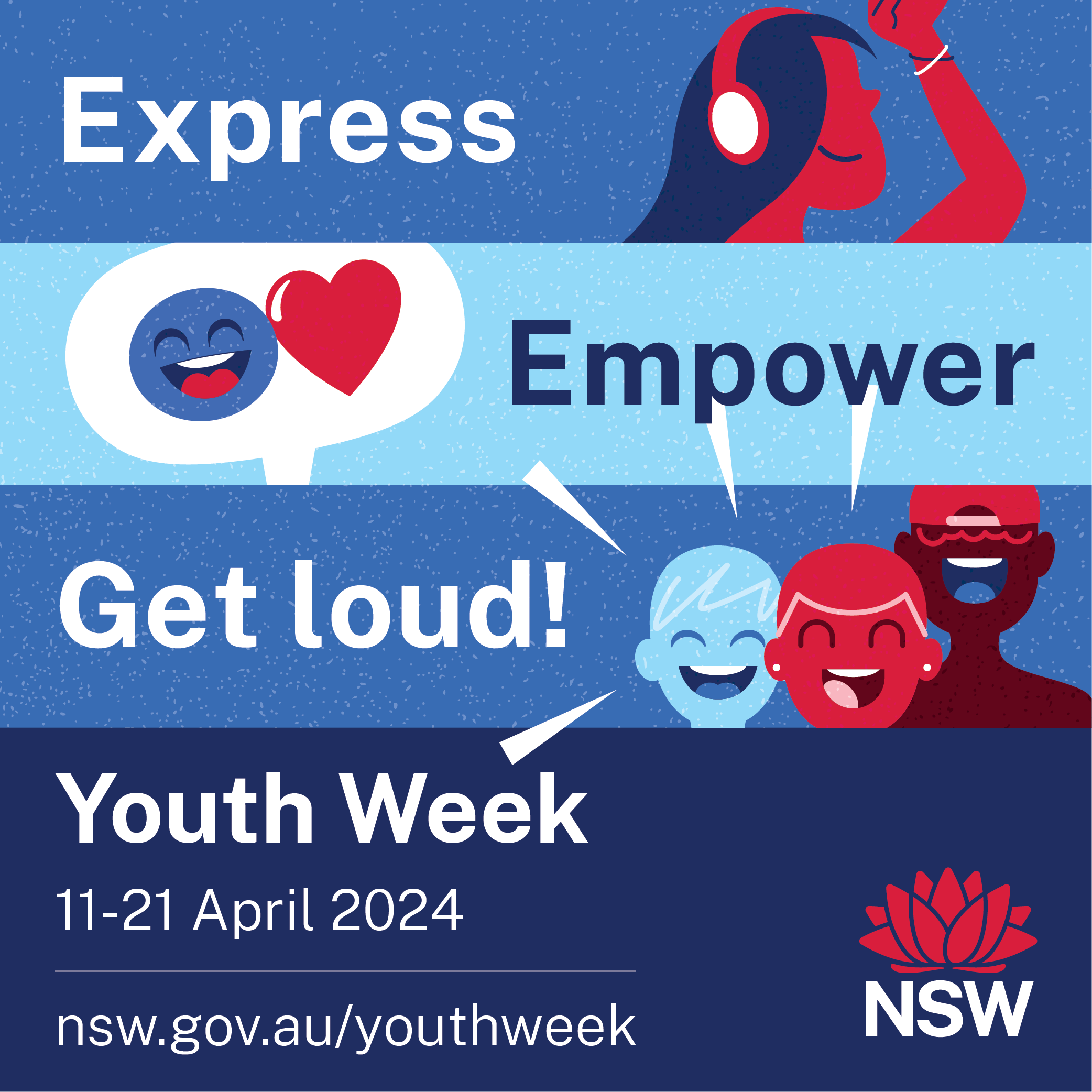
AFP Unlocks Untapped Talent
March 22, 2024
This Neurodiversity Awareness Week, the Australian Federal Police (AFP) is shining a light on one of its brightest neurodiverse minds, Matt Crowley, a trainee from the AFP’s Dandelion Program.
The Dandelion Program connects talented neurodivergent people, specifically Autistic individuals, with meaningful employment opportunities while combatting skill shortages and creating more inclusive workplaces.
The two-year traineeship program is managed by DXC Technology with Untapped Talent, who oversees the selection, recruitment and support of trainees for AFP roles.
The AFP’s Covert and Technical Operations (CTO) branch brought on six trainees, including Matt, under the Program in July last year as a way to boost the technical capabilities of the agency and harness the unique talents of neurodiverse individuals.
Prior to commencing the program, Matt had struggled to find meaningful work which challenged him and allowed him to pursue his passion for IT.
Matt said the program was all about unlocking ‘untapped talent’, which meant finding people who had talent that wasn’t being used because they were unable to network themselves into the appropriate roles.
“One of the great parts about the program is that during the recruitment process, I was assessed on my aptitude for IT, which is completely unlike other jobs in the industry which rule you out immediately if you don’t have a relevant qualification,” Matt said.
In nine short months, Matt’s dedication and willingness to learn has led him to become a valuable software developer to the CTO branch.
“I came in with only a little bit of experience in programming and software which I learnt through school, but I’ve learnt the majority of my skills through on the job training,” Matt said.
“This job has also allowed me to prove to myself just how capable I really am.
“In my last job, I was working eight hours a week and thought that I didn’t have it in me to take on any additional hours.
“I’m now up to working 30 hours a week, and while it can still be tiring at times, coming into work is so worth it and I feel motivated each day to come in.
“My team has been so supportive and understanding and technical trainer used to be in the Dandelion Program, so it’s been great to have a mentor with lived experience that can relate to me on a deeper level.
“Beyond the team, AFP has been such a welcoming environment and has allowed us to just be us.
“This week for Neurodiversity Awareness Week we held a week-long Mario Kart challenge where we invited people from across the agency to come and compete with us.
“It was a great way to meet new people and show other members what we’re all about.”
As part of the Program, the trainees also have a dedicated Neurodiversity Consultant, Martina, who assists them with relevant skills to help them adapt to the work environment.
“Having Martina around has made a real difference to us and she’s really helped us through some major challenges, which may have otherwise been overlooked by people.
“For example, fragranced soap really bothers me, Martina took the initiative to get this changed noting the negative impact it was having on my work life.
“While it might seem like a tiny issue to most, the effort that she went to to get this changed for me made such a big difference to me and really highlighted how supported and cared for in the program.
The AFP plans to open the Dandelion Program to more commands across the AFP later this year.
For more information about the Dandelion Program and the 2024 program visit the Dandelion Program.
Baby Boomers Splurge Online While Younger Generations Cut Back And Opt For Budget Buys
Monday March 18, 2024
- >9.5 million households shopped online in the past year, that’s 82% of all Australian households, up 1.4% year-on-year (YoY).
- >Baby Boomers spent almost $1 billion more than they did last year.
- >Average basket size was $98, down 4.6% from last year.
 Australia Post today released its 2024 'Inside Australian Online Shopping Report', providing an insight into which Aussies spent the most online in the past year.
Australia Post today released its 2024 'Inside Australian Online Shopping Report', providing an insight into which Aussies spent the most online in the past year.
According to the data, 9.5 million Australian households2 shopped online in 2023, spending $63.6 billion on online goods3, down 1.2% from the year prior. Online shopping has remained largely flat with less spent online compared to last year, but the number of online purchases increased as Aussies turned to smaller, more frequent buys.
Cost-of-living pressures driving more cautious spending in 2023 has also highlighted a clear generational gap in spending habits. Gen Y (millennials) spent more than any other generation ($22.1 billion) despite their average basket size declining by –2% YoY ($95). Gen X followed suit, spending $17.47 billion online while their average basket size declined by 5% YoY to $110 and Gen Z spent the least ($10.64 billion), choosing more budget-friendly purchases with $80 as the average basket size. Bucking this trend, Baby Boomers spent 7% more than the prior year ($109 average basket size).
Social researcher and generational expert Claire Madden commented: “We’re seeing a growing confidence in older generations spending more than younger generations in each transaction. While Gen Z don’t currently have the same earning capacity as older generations, they are showing they are still active, savvy, online shoppers who have a focus on lifestyle spend and search for good value.”
Aussies spent the most on home and garden ($16 billion), a category which traditionally has more expensive items like furniture. The two categories that showed growth were variety stores ($15.8 billion, with YoY growth of 9.1%) and food and liquor ($13.2 billion, with YoY growth of 2.4%), showing consumers aren’t afraid to shop around for a better deal as cost-of-living pressures continue to take effect.
Interesting comparisons can also be made state versus state. Across the country, West Australians embraced the online shopping trend with the strongest YoY growth in number of online purchases of the states/territories (5.1%), followed closely by the Northern Territory (4.6%) and Queensland and Tasmania (4.3% each). The significant 18% increase in online shopping activity since 2019 in remote and regional Australia can be attributed to population growth post COVID-194 and convenience, while Victoria and New South Wales saw a drop in online purchases, with both states returning to normal shopping habits since the pandemic.
Australia Post Executive General Manager Parcel, Post and eCommerce services Gary Starr said eCommerce has now established itself as the new normal in Australian retail and is an integral part of the overall retail experience.
“Australians are shopping online more often, with 1 in 7 households shopping weekly. While basket sizes were smaller this year, the increasing trend in repeat shopping highlights the reliance on eCommerce in everyday life. 9.5 million households received a parcel in 2023, that’s 8 in 10 households making an online purchase and over 1.5 million more Aussies shopping online compared to 2019.
“This year, online sales events accelerated in popularity, almost becoming traditions for Aussie shoppers. The Black Friday sales event alone saw an 88% jump in online purchases, compared to 2019 and retailers were quick to capitalise.
“The success of sales events like Black Friday and Cyber Monday ultimately contributed to Australia Post achieving its biggest eCommerce peak period ever, delivering nearly 100 million parcels in November and December,” Mr. Starr said.
Minister for Communications, the Hon. Michelle Rowland MP said the results demonstrate the ongoing demand for postal services in Australia.
“Australia Post connects millions of consumers with national and international businesses every year, and today’s results demonstrate the significant role the organisation plays in enabling eCommerce to thrive in Australia.
“As demand for eCommerce continues to increase, so too does the need for trusted, timely and reliable access to postal services in Australia.
“The Government is committed to ensuring Australia Post keeps up with this demand, which is why we are supporting Australia Post to modernise to deliver more parcels and improve the company’s long-term financial sustainability.
“These important reforms will help ensure this cherished institution continues to deliver for consumer and small businesses, and help boost Australia’s economic productivity,” Minister Rowland said.
With a focus on the customer, Australia Post is delivering on changing consumer expectations with the introduction of Australia Post Metro, a next-day delivery service operating in Melbourne, Sydney and Brisbane. Australia Post is committed to the communities it operates in, investing $343 million in the network in the last financial year and opening new sites like Orange Community Hub—an example of more to come for a modernised Australia Post.
To view the report visit: https://ecommerce-report.auspost.com.au/

Living Ocean 'No Plastics Please' Beach Clean Up; South Avalon Beach
LIVING OCEAN'S - 'NO PLASTIC PLEASE' PROGRAM IS BACK!
Join them for the Living Ocean community beach clean as they re-launch their monthly program and microplastics analysis initiative.
Where: South Avalon Beach
When: Sunday 14th April 9:30am
Bring: Gloves & Buckets
They’ll be meeting at the clearing under the pine trees for an initial brief, and then head to the beach for a short 10-15mins intro and demonstration into microplastics by Living Ocean’s lead scientist Bill Fulton.
At 10am they will be starting their clean which will run for about an hour.
''Everyone is welcome to this family friendly event. Come along, make some new friends and do some good for the local environment!
Please invite family and friends and share this event. LO hope to see you all there!'' - LO
Let them know you are coming at: HERE


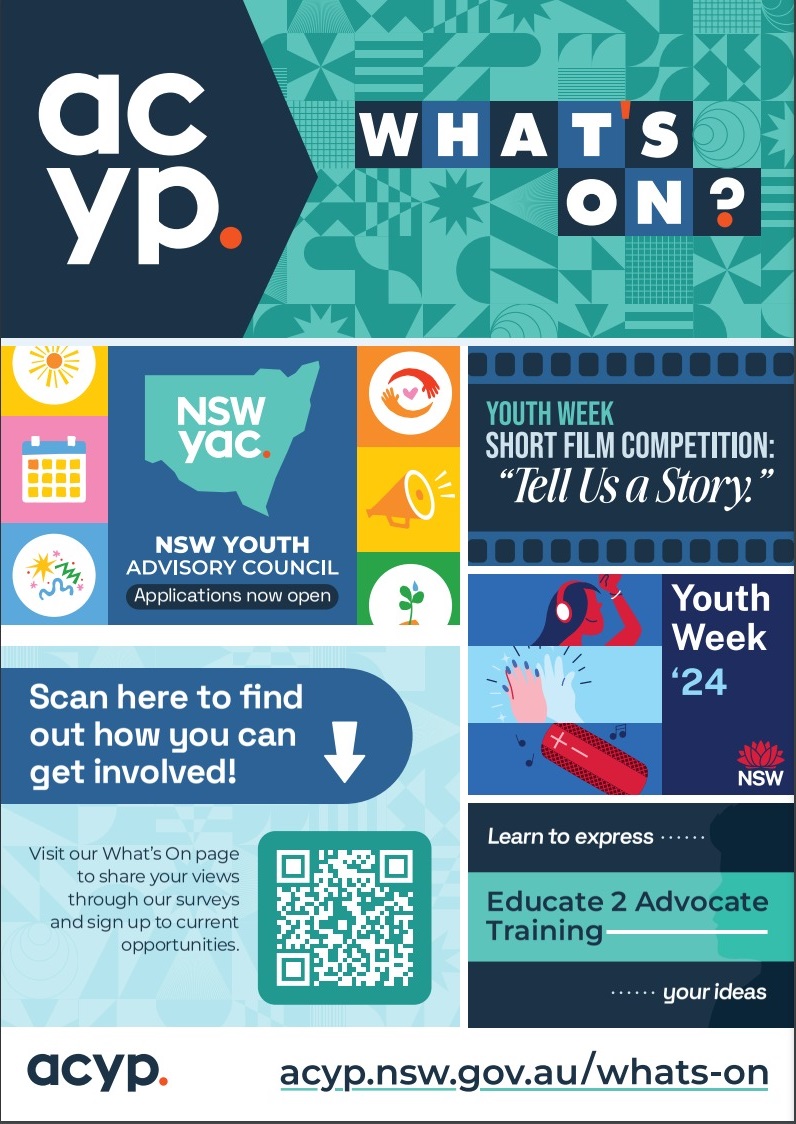
Expressions Of Interest For The 2024 RPAYC Youth Development Program Are Now Available!

School Leavers Support
- Download or explore the SLIK here to help guide Your Career.
- School Leavers Information Kit (PDF 5.2MB).
- School Leavers Information Kit (DOCX 0.9MB).
- The SLIK has also been translated into additional languages.
- Download our information booklets if you are rural, regional and remote, Aboriginal or Torres Strait Islander, or living with disability.
- Support for Regional, Rural and Remote School Leavers (PDF 2MB).
- Support for Regional, Rural and Remote School Leavers (DOCX 0.9MB).
- Support for Aboriginal and/or Torres Strait Islander School Leavers (PDF 2MB).
- Support for Aboriginal and/or Torres Strait Islander School Leavers (DOCX 1.1MB).
- Support for School Leavers with Disability (PDF 2MB).
- Support for School Leavers with Disability (DOCX 0.9MB).
- Download the Parents and Guardian’s Guide for School Leavers, which summarises the resources and information available to help you explore all the education, training, and work options available to your young person.
School Leavers Information Service
- navigate the School Leavers Information Kit (SLIK),
- access and use the Your Career website and tools; and
- find relevant support services if needed.
Word Of The Week: Swell
Verb
1. (especially of a part of the body) become larger or rounder in size, typically as a result of an accumulation of fluid. 2. become or make greater in intensity, number, amount, or volume.
Noun
1. a full or gently rounded shape or form. 2. a gradual increase in amount, intensity, or volume.
Adjective (informal - old slang; 1930's)
1. excellent; very good.
Adverb (informal - old slang; 1930's)
1. excellently; very well.
Compare; 'get swell' - to become filled with pride and arrogance, to behave or speak in a pompous, blustering, or self-important manner, to play the swell.
Compare Swell (ocean); Ocean swell refers to series of ocean surface waves that were not generated by the local wind. Swell refers to an increase in wave height due to a distant storm. Ocean swell waves often have a long wavelength. Swell can develop on lakes and bays, but their size varies with the size of the water body and wave intensity.
The G.O.A.T Comes To Town - Kelly Slater - Kirra Point - 2024
by Surf Days: Tuesday 12 March 2024
As the US government and record labels go after TikTok, musicians get the squeeze

For much of the year, TikTok has been on the defensive.
On March 13, 2024, the House of Representatives voted to approve a bill that would force the short-form video app to be sold off from its Chinese parent company to non-Chinese owners or face a ban in the U.S. The Senate will still have to vote on the legislation, which received broad bipartisan support due to beliefs that TikTok creates risks to national security.
Meanwhile, Universal Music Group, one of the biggest record labels in the world, stopped licensing its music to TikTok at the end of January 2024. Since then, songs by Taylor Swift, Billie Eilish and scores of other artists can no longer be used on the platform, while millions of TikTok videos that had incorporated tracks from Universal artists were muted.
Universal Music Group has an estimated 37.5% market share in the music industry, so its songs likely make up a significant portion of the clips used on TikTok prior to the ban.
The record label claims its artists account for a majority of songs on the platform, and therefore, Universal artists should be better compensated and have guardrails against the harmful effects of artificial intelligence. TikTok, in its response, has said that it has come to amicable agreements with other record labels and that Universal is being unreasonable to the detriment of the artists it seeks to protect.
In the end, both companies simply want to have a larger piece of the pie.
But each of their interests, I believe, should be secondary to the creators that sustain them. Over the past two decades, as the internet and streaming have disrupted the music industry, wage gains for music professionals have been far more pronounced at the top of the income ladder. However, most composers and performers have seen their income and employment prospects dwindle.
TikTok has become a beacon in an otherwise dismal digital streaming landscape, and while musicians increasingly need TikTok, TikTok also needs music.
Gains Have Gone To The Top
My research explores the impact of technology on music professionals in the internet era.
Technology was supposed to democratize the music industry, allowing more artists to more easily gain access to new markets.
Artists no longer needed a record deal to record their music and get it out to the world. They can record music cheaply using their computers, upload it to YouTube, Spotify, BandCamp, SoundCloud, Tidal or any number of platforms for music distribution, then promote their work on social media to build their audience.
But this didn’t lead to more music professionals making a living off their work.
That’s the conclusion I came to by analyzing data from the Bureau of Labor Statistics, which includes two categories of music professionals: performers, who record songs and put on live shows, and composers, which includes musicians who conduct performances or create original works of music but do not necessarily perform that music. A performer would be someone like Dua Lipa, whereas a composer might be someone who is credited for writing a track on Dua Lipa’s album.
From 1999 to 2022, composers saw a strong 85.3% boost in employment, reflecting a gain of 5,380 jobs. This alone suggests that technology has helped music professionals gain employment.
However, when we look at performers – whose employment numbers shrank by 14,690, or 31.6% – it tells a different story.
Put together, the total number of music professionals fell by 9,310 people from 1999 to 2022, reflecting a 17.6% drop. All the free promotion of social media and the lowered barriers to entry that the internet provided were not enough to sustain artists’ livelihoods.
Wages tell a more complex story.
While more people have earned a living from composing music since 1999, their wage gains paled in comparison to that of performers. In short, there are fewer people working as performers now, but those who can cut it are making more money.
This would seem to show that technology has helped most working music professionals.
However, there were outsize gains among the top 10% of music professionals – so the bulk of the rewards from technological advancement went to those at the top. The average wage gain for music professions rises as you climb the income ladder.
Artists First, Or Artists Last?
Artists, then, are having an increasingly difficult time making a living, especially independent artists who comprise the lower income brackets.
The promises of technology are often overblown; in the case of music, the winners and losers have ended up mirroring broader societal inequalities.
Even as technology hasn’t deliver what it promised to artists, artists are increasingly reliant on technology to make a living.
They’ve increasingly turned to TikTok to do so.
TikTok, with more than a billion active users worldwide, has revolutionized music promotion and discovery. Unlike traditional social media, TikTok’s unique format, algorithm-driven content discovery and collaborative features supposedly democratize fame.
Lesser-known artists can go viral, shaping the Billboard charts and propelling songs into the mainstream. Lil Nas X rose to fame on TikTok with “Old Town Road” and promptly signed on to Columbia Records. Oliver Anthony, the creator of the populist hit “Rich Men North Of Richmond,” went viral in summer 2023, eventually reaching the No. 1 spot on the Billboard Hot 100.
In this era of virality, TikTok has become an essential promotional tool for musicians and record labels alike, transcending the boundaries of conventional social platforms.
By cutting ties with TikTok, Universal Music Group is not only depriving its artists of these opportunities, but it’s also alienating a large and loyal fan base who use TikTok to interact with their favorite artists and their songs.
TikTok also loses in this situation, since music is such a critical part of its audiovisual experience. In a 2023 test conducted by TikTok, the platform limited the music that some users in Australia could use in posts. For three straight weeks, the number of users, along with the time users spent on the app, declined.
Both parties say they want to protect the artists, with TikTok arguing that it has reached “artist-first agreements with every other label” and that “Universal’s self-serving actions are not in the best interests of artists, songwriters, and fans.”
TikTok is banking on the perception that platforms provide opportunities for cultural producers by saying that the power of the platform lies in it being “a free promotional and discovery vehicle” for artists. Some members of Congress who opposed the TikTok ban cited the platform’s utility for maintaining creators’ livelihoods, so this is a common refrain.

In response, Universal Music Group has declared that TikTok has an “outdated view” of the modern music business due to the app’s insistence that it provides exposure for artists – and that this exposure is good enough. As my research shows, this free promotion has not grown the ranks of artists who can make a living off music.
TikTok still holds out hope that it can reach “an equitable agreement with Universal Music Group,” but the record label hasn’t budged.
The two media companies say they want to protect artists. But I believe the artists are the ones who will end up hurt the most in a divorce.
In other words, TikTok and Universal need to stay together for the kids.![]()
Ediz Ozelkan, Lecturer of Media Studies, University of Colorado Boulder
This article is republished from The Conversation under a Creative Commons license. Read the original article.
The ideal James Bond is an actor on the cusp of superstardom – as film history shows
James Chapman, University of LeicesterMore people have walked on the Moon than have played James Bond, so it’s no wonder that the suave secret agent with a licence to kill is one of the most coveted roles in cinema. The casting of a new 007 always grabs the public imagination – even now, when it’s still only a rumour that British actor Aaron Taylor-Johnson has been offered the part.
There have been false rumours in the past. I still remember a non-story that Australian model Finlay Light had been cast as the new Bond in 1986.
Even before social media, the casting of James Bond was always a subject of public intrigue. Before Sean Connery was cast in Dr No (1962), the Daily Express ran a competition to find the public’s choice for the “ideal” Bond. The winner was model Peter Anthony, who won ahead of several other contenders, including stuntman Bob Simmons.
The often-told story that Cary Grant was “offered” the part by the producer Albert “Cubby” Broccoli should be taken with a large dose of salt. Grant’s picture fee at the time was over four times Dr No’s total cast budget of £25,000.
Harry Saltzman, Broccoli’s production partner, told the press that Michael Craig and Patrick McGoohan had been considered. And the United Artists’ archive reveals that Broccoli and Saltzman saw the war picture The Valiant (1962) but reported that “Robert Shaw in this particular film did not impress any of us as being James Bond”. However, Shaw was subsequently cast as an assassin in From Russia With Love (1963).
Two myths have accumulated around Connery’s casting over the years. One is that he was an unknown when he was cast. In fact, Connery was already a well-established television actor and had meaty supporting roles in films such as Another Time, Another Place (1958) and The Frightened City (1961) before he got the call.
Broccoli stated it was Connery’s role in Disney’s whimsical fantasy Darby O’Gill and the Little People (1959) that put the actor on his radar.
The other myth is that Bond’s creator Ian Fleming disapproved of Connery, considering him too rough and ready to play the suave secret agent. However, as revealed in Fergus Fleming’s collection of his uncle’s letters, The Man With the Golden Typewriter (2015), Fleming met – and approved of – Connery.
The writer told his confidante, Blanche Blackwell, that “the man they have chosen for Bond, Sean Connery, is a real charmer – fairly unknown but a good actor with the right looks and physique”.
Next In Line
Bond was the box office phenomenon of the 1960s, and when Connery decided it was time to step back after five films, finding a replacement was a drawn-out process. Australian model George Lazenby, a genuine unknown whose only acting experience had been in television commercials for Fry’s chocolate, won the part on account of his ability to stage convincing fight scenes.
On Her Majesty’s Secret Service (1969) is the closest of the adaptations to Fleming’s book, but it didn’t perform as well as previous Bonds at the box office. Lazenby carried the can for its perceived failure: he was destined to be the one-time Bond.
American actor John Gavin, best known for playing Janet Leigh’s boyfriend in Psycho (1960), was signed for Diamonds Are Forever (1971). Gavin had the right sort of looks and physique for the part, and would have played Bond as British.
However, United Artists were determined to get Connery back, and made him an offer he couldn’t refuse: 12.5% of the distributor’s net receipts with an up-front cash advance of US$1,250,000 (£983,050) and an agreement to produce two films of the actor’s choice. No wonder Connery seems to be enjoying himself so much in Diamonds Are Forever. Gavin was paid and released from his contract.
The casting of Live And Let Die (1973) proved controversial. United Artists wanted a household name star and its archive confirms that Clint Eastwood and Paul Newman were approached – but neither were interested.
In the end it came down to a choice between Burt Reynolds or Roger Moore. Saltzman reportedly favoured the former but Broccoli “violently opposed”“ Burt Reynolds. Moore emerged as the compromise choice as he was the only actor on whom they could agree.
Moore was the first established star to be cast as Bond – albeit his stardom was on the small screen, as the dashing gentleman hero of The Saint (1962) and The Persuaders! (1971). He was also the oldest Bond at the point of casting. As one reviewer presciently remarked: "Roger Moore is 45. I predict he could now be playing James Bond into his fifties.” As indeed he did.
Moore’s successor was another television actor, the Irish-born Pierce Brosnan, star of Remington Steele (1982). But when the network refused to release Brosnan from his contract, Timothy Dalton was a late replacement for The Living Daylights (1987) and Licence to Kill (1989). Brosnan eventually got the role that he thought had eluded him nine years later in GoldenEye (1995). In that sense he was the longest “Bond-in-waiting”.
Modern Bonds
Brosnan had been the bookies’ odds-on favourite. In contrast his successor, Daniel Craig, whose biggest role had been in the British gangster film Layer Cake (2004), was a a surprise choice. His casting prompted something of a backlash from fans – that he was too short, too “ugly” and too blonde for Bond.
There was even an online campaign, “Craig Not Bond”. However, the success of Casino Royale (2006), Skyfall (2012) and three other blockbusters silenced the critics. Craig, one of the few Bonds to leave the series at the time of his choosing, retired from Her Majesty’s Secret Service with the five biggest-grossing Bond films in the series’ history.
So, Lazenby and Moore excepted, Bond producers have usually cast an actor on the cusp of stardom. Aaron Taylor-Johnson – if the rumours turn out to be true – would fit that pattern. He’s not an unknown, but he’s not quite a superstar. And at 33 he’d also be the youngest Bond since Lazenby, not an insignificant consideration given that the producers will want to sign the new Bond for at least three films.
Looking for something good? Cut through the noise with a carefully curated selection of the latest releases, live events and exhibitions, straight to your inbox every fortnight, on Fridays. Sign up here.![]()
James Chapman, Professor of Film Studies, University of Leicester
This article is republished from The Conversation under a Creative Commons license. Read the original article.

Each Easter we spend about $62 a head on chocolates, but the cost of buying unsustainable products can be far greater
Stephanie Perkiss, University of Wollongong; Cristiana Bernardi, The Open University, and John Dumay, Macquarie UniversityAustralians enjoy chocolate, consuming on average the equivalent of 32 kilograms a year, but there is growing interest in its origins and how it’s made.
They want to know their product is sustainably made by companies that only deal with ingredient suppliers who engage in fair labour practices and safeguard against deforestation and other environmentally damaging processes.
But according to the 5th Edition of the Chocolate Scorecard, produced by Be Slavery Free, two Australian universities and several sustainability interest groups, some retailers are lagging when it comes to stocking sustainable products.
The scorecard is released at Easter, the busiest time of the year for the sweet treat. Sales in this period account for 75% of chocolate sold annually in Australia, with the average consumer spending $62 on Easter chocolates.
The scorecard ranks the policies and practices of chocolate traders, manufacturers, brands and retailers, assessing 63 companies on six criteria. These are traceability and transparency, living income, child and forced labor, climate change and deforestation, agroforestry and agrochemical use.
Next year’s report card will also include a rating based on gender equality which is being added as a seventh criteria.
It assesses companies deemed industry leaders in sustainable policies and practices and awards them a green rating (or “egg”), while yellow and orange ratings are given to companies considered to be “progressing” and “needing improvement”. Red is given to those “trailing in policy and practice” and grey indicates a lack of transparency.
This year, the German brand, Ritter Sport, available in some large Australian supermarkets, was given a Good Egg Award in the medium and large company category for its progress and to show bigger companies can do much better.
Dutch brand, Tony’s Chocolonely, was given a special achievement award in the same category for consistently rating green. New Zealand manufacturer Whittaker’s was a highly rated yellow.
Mars Wrigley (maker of Mars bars, Snickers, Milky Way and Twix) rated strongly among the world giants of chocolate, followed by Nestle (Kit Kat, Smarties), Hershey’s (Kisses, chocolate syrup) and Ferrero (Nutella, Kinder, Ferrero Rocher), all of which received yellow awards.
Lindt and Mondelēz, whose portfolio includes Cadbury, Toblerone and Green & Black’s, received orange, indicating the need for improvement.
Globally, no retailers were rated green. Of the stores operating in Australia, Aldi (run by Aldi Sud), received yellow while Woolworths (including Big W) scored a disappointing orange. This was followed by red recipients Coles, David Jones and Kmart.
Chocolate Is A Growing Business
Global revenue from chocolate is expected to reach US$254 billion in 2024. Around US$3.5 billion is generated in Australia and this is expected to grow by nearly 8% over the next few years.
According to the United Nations Guiding Principles on Business and Human Rights, a business is responsible for any and all adverse human rights impacts either through their or their suppliers’ activities. Responsibility should not be shifted to another level in the supply chain.
Research on retail stores reveals confectionery is often an impulse purchase. Stores stock sweet products at payment areas, setting a high profit margin. These products can financially make or break a retailer.
So when a retailer sells chocolate, they have a responsibility to address human rights and environmental issues.

Some Retailers Are Falling Behind In Sustainable Sourcing
Unlike other regions, all Australian retailers took part in this year’s chocolate scorecard. These companies were early adopters in responding to human rights and environmental issues through certifications such as Fairtrade and Rainforest Alliance.
But most retailers have poor data on their supply chains. While they develop a code of practice for their manufacturers and suppliers for the chocolate to be certified, it’s up to suppliers to adopt. This cascading model can lead to all responsibility resting with the farmer.
US retailers are the largest in the world and have the resources to lead the way. However, all US retailers received “grey” ratings in this year’s scorecard for not responding. This list includes three of the largest outlets in the US by revenue, Walmart, Costco, and Kroger.
One likely reason the US chocolate industry is lagging is because it has not passed regulations to curb deforestation. The European Union has passed the EU Deforestation Regulation, to ensure commodities such as cocoa, sold in the EU, are not sourced from deforested areas. The UK Environment Act 2021 calls for similar due diligence on critical forest-risk commodities. The US has proposed the Forest Act, but has not passed it.
Making Responsible Decisions
Retailers need to be aware that consumers are increasingly seeking ethically produced and sustainable products, including chocolate.
Ethically-produced cocoa must become a core element of their corporate responsibility and business strategy. Retailers can make improvements by working with their suppliers and manufacturers to trace their cocoa supply chains to ensure they are untainted by human rights and environmental abuse.
Consumers can use the 5th Edition Chocolate Scorecard to inform their sustainable purchasing decisions about the brands they buy and the retailers they buy from.![]()
Stephanie Perkiss, Associate professor in accounting, University of Wollongong; Cristiana Bernardi, Senior Lecturer in Accounting and Financial Management, The Open University, and John Dumay, Professor in Department of Accounting and Corporate Governance, Macquarie University
This article is republished from The Conversation under a Creative Commons license. Read the original article.
Is hyaluronic acid as effective as skincare brands claim?

Hyaluronic acid has become a huge buzzword in the beauty industry, with everything from creams and cleansers to shampoos containing it. Often, these products are marketed to consumers with the promise that hyaluronic acid will boost hydration – important for keeping the skin looking its best.
Hyaluronic acid is ubiquitous in our organs and tissues, playing a crucial role in the function of our cells and tissues.
Hyaluronic acid has been in clinical use for decades, for example, as an injectable between joints to help lubricate cartilage. But at the turn of the century, cosmetic companies began using it as a moisturising ingredient in cosmetic products.
Topically, it’s thought that hyaluronic acid works by holding and retaining water molecules in order to hydrate the skin and restore elasticity, preventing wrinkles. When combined with sunscreen, hyaluronic acid may be capable of protecting the skin against ultraviolet radiation as it has antioxidant properties (meaning it prevents damage caused by oxidising agents, such as ultraviolet radiation).
One of the most frequent marketing claims used to sell hyaluronic acid is the long-held belief that hyaluronic acid holds 1,000 times its weight in water. This means it can maintain moisture and reduce moisture loss.
But this claim has been called into question recently, with numerous publications recently discussing the findings of a pre-print paper which suggests this claim is not true.
The authors of the pre-print, researchers from the University of California, looked into the molecule-binding properties of hyaluronic acid and water to test the claim that it can hold 1,000 times its weight in water.
To do this, the researchers created a solution containing 1g of hyaluronic acid and 1,000g of water (0.1% of hyaluronic acid), which was compared with just water. They then applied heat to both solutions, measuring the thermal changes that occurred. They found that there was not much difference in the changes that occurred in the 0.1% hyaluronic acid solution compared with the pure water. They therefore concluded that the long-held claim is not true.
These findings may have consumers wondering how well their hyaluronic acid products actually work if it doesn’t hydrate the skin as much as previously claimed.
How Hyaluronic Acid Works
While there’s no disputing the experimental results obtained, the conclusion on hyaluronic acid’s water-holding capacity is not applicable to all forms of hyaluronic acids.
Hyaluronic acid comes in different molecular sizes. This pre-print only looked at one medium-sized hyaluronic acid molecule in their experiments. This means the results may only be true for products containing medium and smaller sized hyaluronic acid molecules.

When hylauronic acid interacts with water, its water-loving and water-hating parts lead to electrostatic repulsion. This enables large numbers of hyaluronic acid molecules to form networks, which look a bit like honeycombs, and expand.
The larger the hyaluronic acid’s molecule size, the more capable it is of forming these honeycomb structures – and also the more able it is to retain water relative to its own weight.
Hyaluronic acid with larger molecular sizes will form these networks at a concentration of 0.1%, meaning it can hold 1,000 times its own weight in water. Some very large molecules will even form these networks at a concentration as low as 0.05%. This means it can hold 2,000 times its weight in water.
It’s also worth noting that hyaluronic acid doesn’t just hold moisture and hydrate the skin. Because of its hydrating and antioxidant effects, it also promotes cell regeneration and stimulates collagen production. So hyaluronic acid’s benefits go beyond its ability to retain water.
Although this paper may have partially debunked one popular claim about hyaluronic acid’s moisturising abilities, that doesn’t mean you should stop using it. The research still shows there’s no doubt about hyaluronic acid’s moisturising abilities, which can leave skin softer, smoother and with fewer wrinkles. Plus, hyaluronic acid’s antioxidant effects promote the growth of new skin cells and collagen.
But if you want to make sure you’re getting the most effective product possible, look for one containing multiple weights of hyaluronic acid molecules (sometimes labelled as “triple weight”, “multiweight” or “multi-molecular weight”). Also look for a product containing a minimum hyaluronic acid concentration of 0.1%.
This is because research suggests products containing a formulation of multiple sizes of hyaluronic acid molecules could be more beneficial for skin than formulations containing only one molecule size. This is partly due to smaller molecules permeating skin better, while the larger ones hold more water.![]()
Lian Liu, Reader, School of Chemistry and Chemical Engineering, University of Surrey
This article is republished from The Conversation under a Creative Commons license. Read the original article.
What happens to F1 drivers’ bodies, and what sort of training do they do?
Dan van den Hoek, University of the Sunshine Coast; Justin Holland, Queensland University of Technology, and Paul Haines, Griffith UniversityVarious forms of motorsport are passionately followed around the world, and the pinnacle of the sport is Formula 1 – a fast-paced battle between drivers and teams with some of the most finely engineered vehicles in the world.
Despite the impressive speeds and engineering of their machines, race car drivers have sometimes battled the stereotype that they are not truly elite athletes. However, the recent advent of television series such as Drive to Survive has given the public an insight into the demands of driving in Formula 1.
Formula 1 Drivers: Elite Athletes?
Drivers use split-second judgements to perform precision steering while travelling at speeds of up to 300 kilometres per hour. All the while, drivers need to concentrate on the track, their opponents, and feedback provided through their radio or steering wheel.
As the vehicles have developed over time, so too have the drivers. Nowadays, drivers are considered athletes who must undergo immense preparation and training to ensure their physical and mental abilities can manage the ever-increasing limits of their machines and environmental demands.
What Forces Are Formula 1 Drivers Exposed To?
During a typical race, Formula 1 drivers are subjected to a barrage of physical and psychological demands that test their strength, endurance and mental fortitude at high speeds.
Not only is a driver required to have sufficient strength to perform, they must also stabilise themselves to withstand gravitational forces (G-force) in multiple different directions.
During cornering and braking, drivers experience forces upwards of 5Gs. In addition, each application of a brake pedal requires between 600–700 newtons of force which, during a 90-minute race, would equate to a total load of 57,940kg (based on the 14 turns and 58 laps of Melbourne’s Albert Park track).
However, when things go wrong, the forces experienced by drivers are even more extreme. In a crash, drivers can experience deceleration forces of up to 100G]
As you can imagine, such forces place incredible strain on a driver’s head and neck.
The forces experienced by Formula 1 drivers are like those of military pilots. Unsurprisingly, this can result in neck and back pain or a loss of peripheral vision (often called grey-out) when forces are endured for an extended period.
Fortunately, F1 drivers aren’t typically subject to extended G-force loading. Rather, they are challenged repeatedly through acceleration, deceleration and cornering.
To combat the effects of these forces, drivers train their trunk and neck strength against high loads to be able to counteract the forces pulling their head and neck around their cockpit. Drivers also train their aerobic capacity to assist with handling these demands, resulting in high heart rates and physiological stress.
Trying To Beat The Heat
Beyond the incredible forces experienced by driver-athletes, cabin temperatures can exceed 50°C, and extensive heat generated from the vehicle (through the close proximity of the transmission and engine to the driver) via convective heat transfer can result in more than 3% bodyweight loss during a race.
Drivers therefore need to stay hydrated to maintain their health, safety and performance. This process is made harder by the mandated safety equipment – under the Federation Internationale de l’Automobile guidelines, drivers must wear fire-retardant boots, under- and over-garments, balaclavas, gloves and helmets that limit their capacity to cool down via evaporation and convection.
Every Kilogram Counts
In preparation for these ever-increasing demands, F1 drivers maintain very low body-fat percentages (around 8%) compared with IndyCar drivers (around 17%) and maintain greater levels of fitness than their counterparts from IndyCar and NASCAR, allowing them to meet the design demands of the vehicle.
Similarly, F1 drivers are typically stronger and more powerful than their counterparts from other racing series.
Because of the demands of the F1 racing calendar, drivers need to get the most bang for their buck through efficient training methods that improve strength, power and fitness.
Nutritionally, they should consume a balanced diet that maintains weight and optimal body composition so they don’t become too heavy or large for their limited cockpit space.
What Else Do Drivers Do To Prepare?
Of course, racing at speeds of more than 300km per hour with millimetres between rivals requires more than strength, fitness and fearlessness. There is substantial skill required to control a machine that is being pushed to its limits.
Beyond their athleticism, F1 drivers develop skills from a very young age and typically progress from go-karting through to the elite level.
So, it’s not just about a fast car and being fit and strong enough to control it – if you want to make it as an elite driver in the top tier, years of practice and devotion to the art of driving are required too.![]()
Dan van den Hoek, Senior Lecturer, Clinical Exercise Physiology, University of the Sunshine Coast; Justin Holland, Senior Lecturer in Clinical Exercise Physiology, Queensland University of Technology, and Paul Haines, Manager, Sport Engagement (Performance), Griffith University
This article is republished from The Conversation under a Creative Commons license. Read the original article.
Social media apps have billions of ‘active users’. But what does that really mean?

Our digital world is bigger and more connected than ever. Social media isn’t just a daily habit – with more than 5 billion users globally, it’s woven into the very fabric of our existence.
These platforms offer entertainment, connection, information and support, but they’re also battlegrounds for misinformation and online harassment.
Platforms like Facebook, YouTube, Instagram and TikTok vie for our attention, each boasting user counts in the billions. But what do these numbers actually tell us, and should we care?
What Is An Active User Or A Unique User?
Behind the impressive statistics lies a complex reality. While global social media usership has hit the 5 billion mark, representing about 62% of the world’s population, these figures mask the intricacies of online participation.
In Australia, the average person juggles nearly seven social media accounts across multiple platforms. This challenges the assumption that user counts equate to unique individuals.
It is also important to differentiate between accounts and active users. Not all accounts represent actual engagement in the platform’s community.
An “active user” is typically someone who has logged into a platform within a specific timeframe, such as the past month, indicating engagement with the platform’s content and features. They’re measured with analytics tools provided by the platform itself, or with third-party software.
The tools track the number of unique users – that is, individual accounts – who have interacted with or been exposed to specific content, whether a post, story or advertising campaign.
Social media companies use these metrics to showcase the potential reach of their platform to marketers. It’s key to their business model, as advertising revenue is typically their main source of income.
However, the reliability of these statistics is debatable. Factors such as bot accounts, inactive accounts and duplicates can inflate numbers, offering a distorted view of a platform’s user base.
Moreover, the criteria for an “active user” vary across platforms. This makes it difficult to make comparisons between user bases and to truly understand online audiences.

User Count Isn’t Always Relevance
TikTok boasts a staggering 1.5 billion users globally. This doesn’t even include users on its Chinese counterpart, Douyin. It is also often at the centre of controversies and geopolitical tensions.
For example, TikTok has repeatedly faced threats of bans in significant markets such as the United States, raising questions about future access. But with such a vast user base, TikTok’s impact on culture and trends – particularly among young people – is clear and far-reaching.
However, the true impact of platforms is further muddied by algorithms – the complex formulas that dictate the content we see and engage with. Designed to keep us scrolling and interacting, they significantly shape our online experiences.
They also complicate how “active” a user might appear. Someone could seem more engaged simply because the algorithm promotes content they interact with more often.
So, while a high active-user count might indicate a platform’s popularity and reach, it doesn’t fully capture its influence or social relevance. True engagement goes beyond numbers, delving into the depth of user interaction, the quality of the content, and the cultural impact these platforms wield.
Different Strokes For Different Ages
When we look at the users’ demographics, we see distinct preferences across age groups.
Among the younger crowd, specifically Gen Z, TikTok vastly outpaces Instagram with one in four users under the age of 20.
Meanwhile, Snapchat and Instagram are the preferred platforms for people aged 18–29.
Facebook, with its massive user base of more than 3 billion and a median user age of 32, is the platform of choice for millennials, Gen X and boomers.
People in their 30s and older tend to use LinkedIn and X (formerly Twitter) more than platforms like Snapchat.
But all these social media platforms tend to vary in their primary focus, from news and professional connections (like LinkedIn) to predominantly serving entertainment (like TikTok).
This means demographic trends also reveal how each platform impacts users differently, catering to varied content preferences – whether it’s for entertainment, staying updated on news and events, or connecting with friends and family.

User Count Isn’t What Matters
For content creators and news media, delving into user statistics is crucial if they want to reach their target audiences.
However, despite headlines often focusing on vast user numbers, do these figures actually matter to the everyday social media user? Research I’ve done with colleagues suggests they don’t.
For individuals navigating these digital spaces, it’s not about which platform boasts the highest user count and is therefore deemed “important”.
Instead, the focus is on maintaining connections within their social circles. This preference is rooted in cultural practices, meaning it aligns with the habits, preferences and values of their own community or cultural group.
In other words, people are drawn to social media platforms that are popular or widely accepted among their family, friends, social allies and broader cultural community. This suggests the essence of social media lies in the quality of interactions rather than the platform’s global standing.
Whether for staying informed, being entertained, or nurturing relationships, people gravitate to spaces where their community or “tribe” gathers. ![]()
Milovan Savic, Research Fellow, ARC Centre of Excellence for Automated Decision-Making and Society, Swinburne University of Technology
This article is republished from The Conversation under a Creative Commons license. Read the original article.
Conspiracy theorist tactics show it’s too easy to get around Facebook’s content policies
Amelia Johns, University of Technology Sydney; Emily Booth, University of Technology Sydney; Francesco Bailo, University of Sydney, and Marian-Andrei Rizoiu, University of Technology SydneyDuring the COVID pandemic, social media platforms were swarmed by far-right and anti-vaccination communities that spread dangerous conspiracy theories.
These included the false claims that vaccines are a form of population control, and that the virus was a “deep state” plot. Governments and the World Health Organization redirected precious resources from vaccination campaigns to debunk these falsehoods.
As the tide of misinformation grew, platforms were accused of not doing enough to stop the spread. To address these concerns, Meta, the parent company of Facebook, made several policy announcements in 2020–21. However, it hesitated to remove “borderline” content, or content that didn’t cause direct physical harm, save for one policy change in February 2021 that expanded the content removal lists.
To stem the tide, Meta continued to rely more heavily on algorithmic moderation techniques to reduce the visibility of misinformation in users’ feeds, search and recommendations – known as shadowbanning. They also used fact-checkers to label misinformation.
While shadowbanning is widely seen as a concerningly opaque technique, our new research, published in the journal Media International Australia, instead asks: was it effective?
What Did We Investigate?
We used two measures to answer this question. First, after identifying 18 Australian far-right and anti-vaccination accounts that consistently shared misinformation between January 2019 and July 2021, we analysed the performance of these accounts using key metrics.
Second, we mapped this performance against five content moderation policy announcements for Meta’s flagship platform, Facebook.
The findings revealed two divergent trends. After March 2020 the overall performance of the accounts – that is, their median performance – suffered a decline. And yet their mean performance shows increasing levels after October 2020.
This is because, while the majority of the monitored accounts underperformed, a few accounts overperformed instead, and strongly so. In fact, they continued to overperform and attract new followers even after the alleged policy change in February 2021.
Shadowbanning As A Badge Of Pride
To examine why, we scraped and thematically analysed comments and user reactions from posts on these accounts. We found users had a high motivation to stay engaged with problematic content. Labelling and shadowbanning were viewed as motivating challenges.
Specifically, users frequently used “social steganography” – using deliberate typos or code words for key terms – to evade algorithmic detection. We also saw conspiracy “seeding” where users add links to archiving sites or less moderated sites in comments to re-distribute content Facebook labelled as misinformation, and to avoid detection.
In one example, a user added a link to a BitChute video with keywords that dog-whistled support for QAnon style conspiracies. As terms such as “vaccine” were believed to trigger algorithmic detection, emoji or other code names were used in their place:
A friend sent me this link, it’s [sic.] refers to over 4000 deaths of individuals after getting 💉 The true number will not come out, it’s not in the public’s interest to disclose the amount of people that have died within day’s [sic.] of jab.
While many conspiracy theories were targeted at government and public health authorities, platform suppression of content fuelled further conspiracies regarding big tech and their complicity with “Big Pharma” and governments.
This was evident in the use of keywords such as MSM (“mainstream media”) to reference QAnon style agendas:
MSM are in on this whole thing, only report on what the elites tell them to. Clearly you are not doing any research but listening to msm […] This is a completely experimental ‘vaccine’.
Another comment thread showed reactions to Meta’s dangerous organisations policy update, where accounts that regularly shared QAnon-content were labelled “extremist”. In the reactions, MSM and “the agenda” appeared frequently.
Some users recommended that sensitive content be moved to alternative platforms. We observed one anti-vaccination influencer complain that their page was being shadowbanned by Facebook, and calling on their followers to recommend a “good, censorship free, livestreaming platform”.
The replies suggested moderation-lite sites such as Rumble. Similar recommendations were made for Twitch, a livestreaming site popular with gamers which has since attracted far-right political influencers.
As one user said:
I know so many people who get censored on so many apps especially Facebook and Twitch seems to work for them.
How Can Content Moderation Fix The Problem?
These tactics of coordination to detect shadowbans, resist labelling and fight the algorithm provide some insight into why engagement didn’t dim on some of these “overperforming” accounts despite all the policies Meta put in place.
This shows that Meta’s suppression techniques, while partially effective in containing the spread, do nothing to prevent those invested in sharing (and finding) misinformation from doing so.
Firmer policies on content removal and user banning would help address the problem. However, Meta’s announcement last year suggests the company has little appetite for this. Any loosening of policy changes will all but ensure this misinformation playground will continue to thrive.![]()
Amelia Johns, Associate Professor, Digital and Social Media, School of Communication, University of Technology Sydney; Emily Booth, Research assistant, University of Technology Sydney; Francesco Bailo, Lecturer, Digital and Social Media, University of Sydney, and Marian-Andrei Rizoiu, Associate Professor in Behavioral Data Science, University of Technology Sydney
This article is republished from The Conversation under a Creative Commons license. Read the original article.
Intimacy, ‘secret service’ and social climbing: meet the real Villiers women behind Mary & George

Mary & George, the new British television drama series, depicts the real-life story of Mary Villiers and her son George, and their social climbing at the early 17th century English royal court.
George Villiers rose from humble beginnings to cup-bearer in 1614, Gentleman of the Bedchamber in 1615, and ultimately to the royal favourite of King James VI & I, amassing many titles and court appointments. In 1623 he was made Duke of Buckingham, the only duke who was not a member of the royal family.
In Mary & George, Mary moulds George to be James’ lover, where he would become the second-most powerful man in England. But from dizzying heights can come a great fall.
Much of the show is embellished for dramatic effect – it’s unclear if James actually did have sexual relationships with his male favourites, and Sir Francis Bacon did not die of syphilis.
However, other aspects of the show are fact. The Earl and Countess of Somerset were tried and found guilty of murder through poisoning (though they weren’t executed) and Frances Coke really was abducted and forced to marry John Villiers (witnesses noted her crying in the ceremony just like depicted).

Although George’s relationship with James is a central focus of the series, the Villiers women – George’s mother, sister and wife – all strategically bolstered the power and influence of their male relatives and ensured their family remained in royal favour.
Here’s what you should know about the real women behind the characters.
The Mother: Mary Villiers

While the fictional Mary Villiers’ origins are depicted as low-born, the real Mary was from a gentry family with a good name but little money.
Mary’s four children with her first husband, George Villiers, were Susan, John, George and Christopher (“Kit”), who all feature in the show.
She married again to Sir William Rayner, and finally Sir Thomas Compton. She was created Countess of Buckingham in her own right (not tied to a husband) in 1618.
Like many women at this time who could not own property or assets due to the laws of coverture, Mary strategically married and used the other avenues available to her – such as social networking – to rise through the ranks of Jacobean society until her death in 1632.
History has not been kind to Mary. Her ambition for her family marked her as greedy, calculating and ruthless, which the show extends to lesbianism and murder despite the absence of any historical evidence.
The Sister: Susan Villiers

Mary’s only daughter Susan is portrayed in the show as a quiet, timid and boring teenager. In reality Susan, who went by Sue, learned a great deal from her mother and used strategic connections to improve the social standing of her family.
In 1607, before the rise of the Villiers family at court, she married a country gentleman named William Fielding. Sue and William used George’s favour with the king to obtain many offices and titles; they were made the Countess and Earl of Denbigh in 1622.
After Charles I ascended the throne and married French princess Henrietta Maria, Sue was appointed as the most senior Lady of the Bedchamber.
These positions gave her vast influence at court. Surviving papers describe how she was frequently paid for “secret service” for the queen.
Over time, Sue developed a close relationship with Charles and Henrietta Maria, godparents to some of her grandchildren. Her letters show she was concerned with the social position of her own son, his education and his advancement at court.
When the queen fled for France during the English civil wars, Sue went with her and remained until her death in 1652.
The Wife: Katherine Manners

In the show, George is forced into a partnership with “Katie” Manners when his mother and sister conspire to lock them in a room overnight, risking their reputations.
Young, “fertile” and wealthy, Katie describes herself as the perfect aristocratic wife.
They married in 1620 in a private ceremony witnessed only by James and her father, the Earl of Rutland. Katie became Katherine Villiers, Marchioness and then Duchess of Buckingham. She and George had four children, Mary, Charles, George and Francis.
James was Mary’s doting godfather. In his letters, he called her his grandchild, while Kate and George became his “children” and he their “dear dad”.
As the show depicts, George and the Villiers women became like a new family to James. This intimacy explains the libels which claimed Mary and George killed the king, a rumour the show brings to life.
Katherine, like Mary and Sue, became a Lady of the Bedchamber to Henrietta Maria. Katherine was pregnant when George was assassinated in 1628 and witnessed his death at the Greyhound Inn (where you can still stay) in Portsmouth.
She went into mourning, commissioning portraits and the Buckingham monument at Westminster Abbey in a chapel usually reserved for royalty. She continued to live at York House in London, marked today by its Watergate near Embankment Station.
Although she and her children remained favourites of Charles, her reconversion to Catholicism in 1628 and marriage to the Irish Catholic Randall MacDonnell in 1635 caused a strain. Katherine spent much of the civil wars in relative poverty in Ghent and Ireland, with her husband often imprisoned for his role in the Irish Confederacy.
She died in 1649, shortly after Cromwell’s conquest of Ireland, her life and the rule of Charles I both coming to an end.
But the influence of the Villers women in the royal court continued throughout the 17th century. George and Katherine’s daughter Mary married a Stewart, making their royal connections official.
Later generations of Viliers women, including Sue’s daughter Barbara also served in the households of Henrietta Maria and later, Catherine of Braganza, continuing the tradition of royal service and influence that began under Mary and George. ![]()
Sarah Bendall, Senior Lecturer, Institute for Humanities and Social Sciences, Australian Catholic University and Megan Shaw, PhD Candidate in Art History, University of Auckland, Waipapa Taumata Rau
This article is republished from The Conversation under a Creative Commons license. Read the original article.
Why Are There So Many Moths Around At The Moment?
Have you noticed, when walking through longer grass, that there are a LOT of little moths around at the moment?
As a general rule, moths start breeding in Spring and continue until late Summer and early Autumn. There are some that we will see in March though - warm weather and some rain helps them and they will rise up in little clouds of wings and tickle your knees when you walk through where they are resting - especially early in the morning.
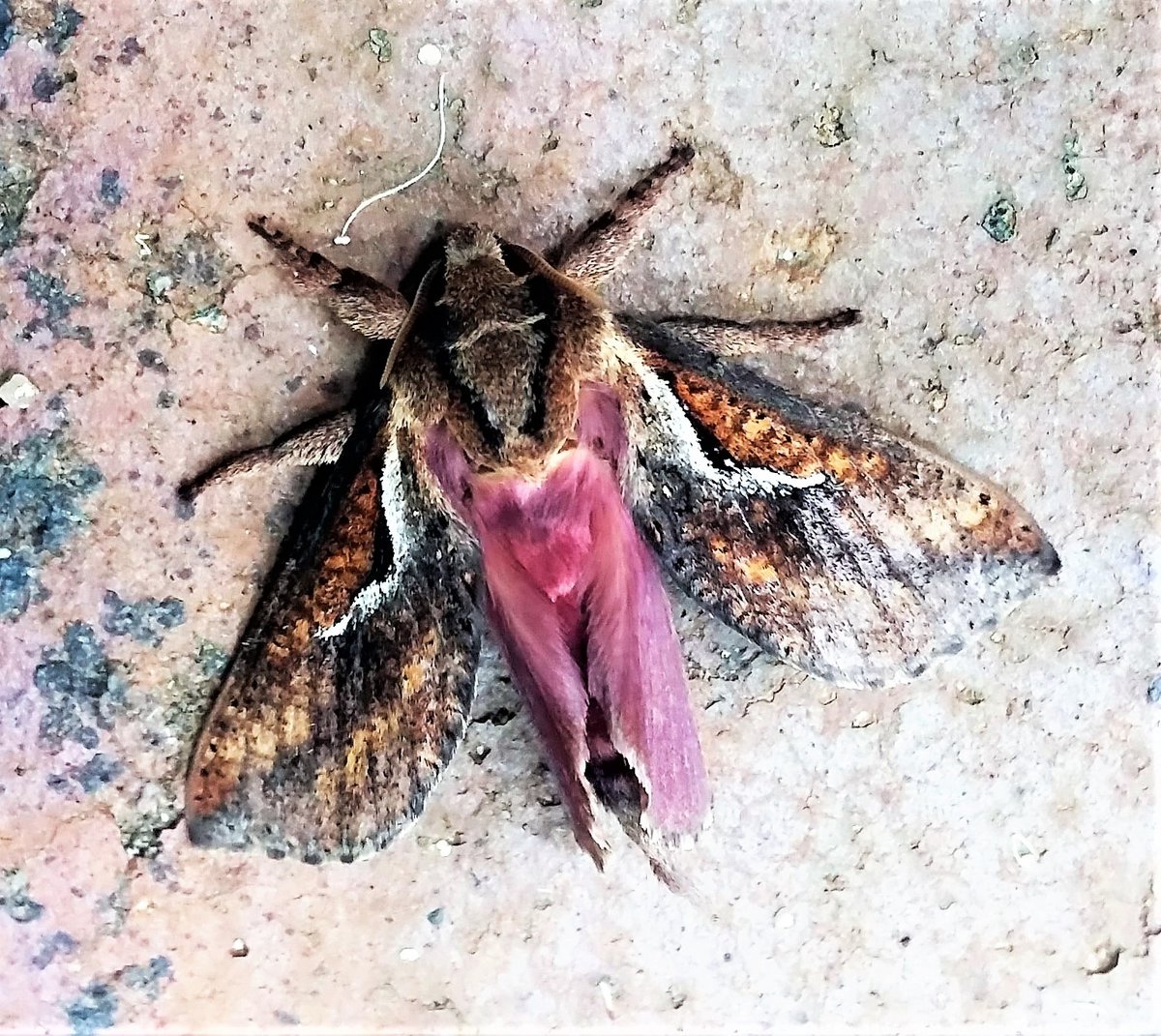
Ghost moth, Blackheath, NSW. January 2018 Image: David Jackson. Courtesy Australian Museum, Public Domain.
This beautiful Ghost moth was encountered at Blackheath, NSW, in January 2018. It's scientific name is Elhamma australasiae, and it is a species of the Hepialidae family.
The family Hepialidae, commonly known as Ghost and Swift Moths, contains some of the largest and most obvious Australian moths.
There are about 150 species of ghost and swift moths found in Australia. The common name “ghost moth” comes from a European species whose white ghostly males are seen hovering over open ground in a conspicuous display flight to attract females.
These moths fly in late Summer and Autumn into early Winter. They sometimes emerge on mass after rains. The earliest adults appear in January, but they are most common in March and usually disappear by April. The males come to lights more readily than the females, and are more uniform in size. The species occurs in New Guinea, and along the eastern seaboard of Australia, and is a common species in Queensland, New South Wales and Victoria.
There are also butterflies you may see in your garden all year round.
The Common Crow Butterfly Euploea is around in Summertime although we've also seen pockets of them in local bush reserves in the middle of Winter; usually those places that have some water and sun. The photo below was taken in Angophora reserve then, and was one of masses fluttering and landing on the ferns over the small creek that runs through the eastern part of the bush there.
The Australian Museum tells us this is because Adult Common Crow Butterflies overwinter together for protection in large aggregations of one to two thousand butterflies. The butterflies go into a dormant state in which they live on their fat reserves and nearby nectar sources until warmer weather returns. These aggregations occur in sheltered coastal sites and on offshore islands in the tropics and subtropics of northern and eastern Australia - however, obviousy we have a few places here in Pittwater that are sheltered and warm enough.
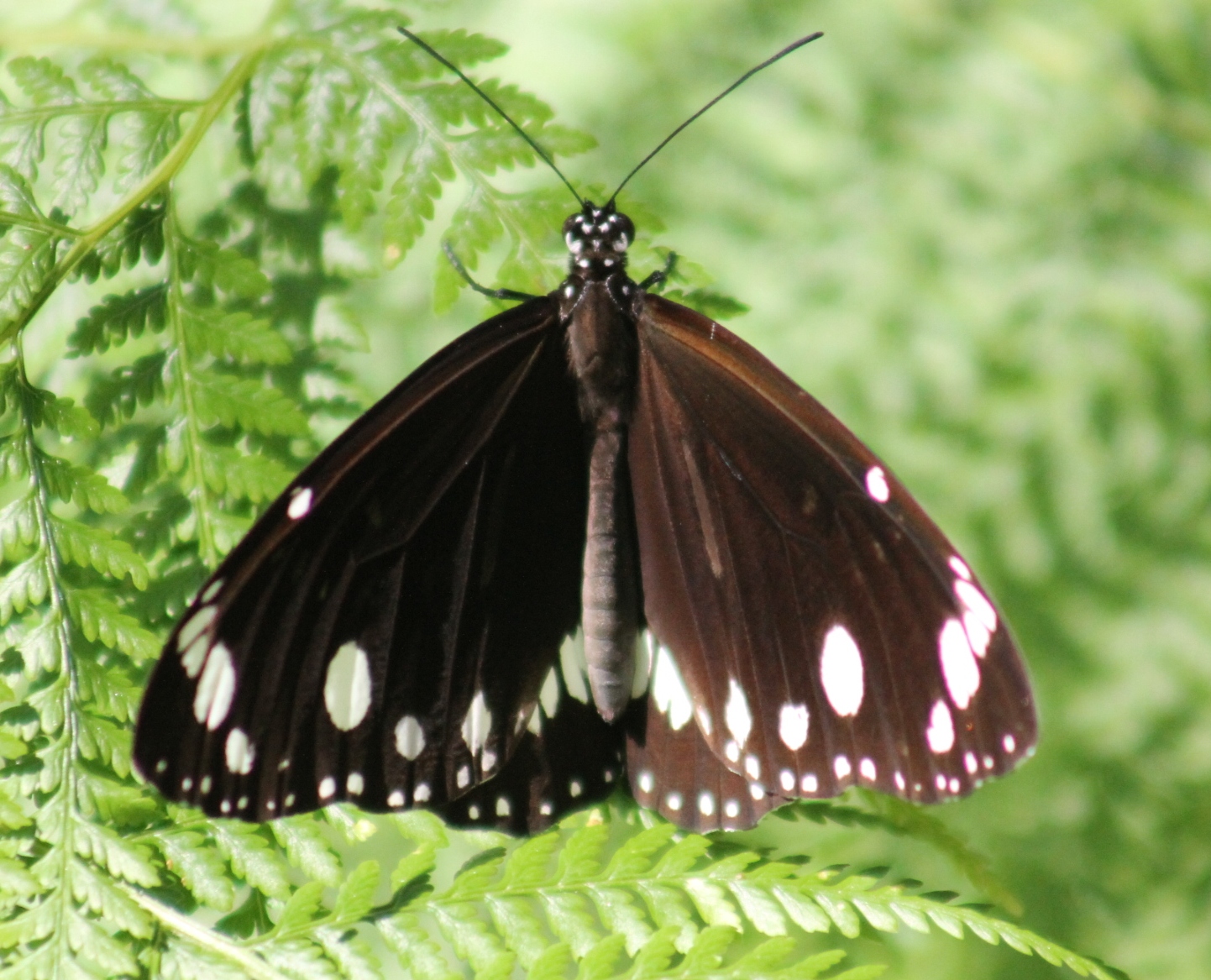
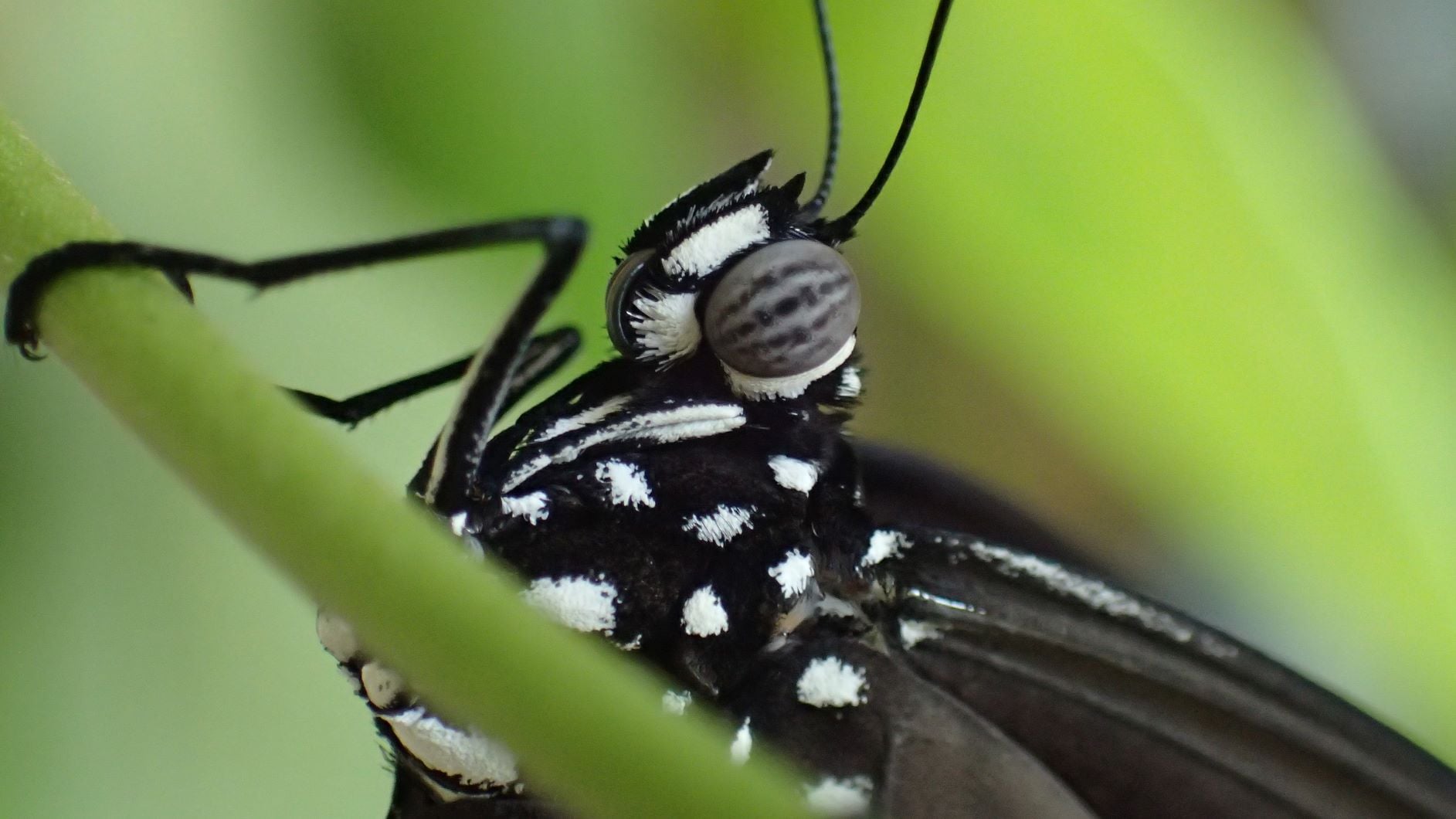
Common Crow Butterfly Euploea close up. Photo: Gary Harris
The creek trough Angophora resreve where we saw all these butterflies:
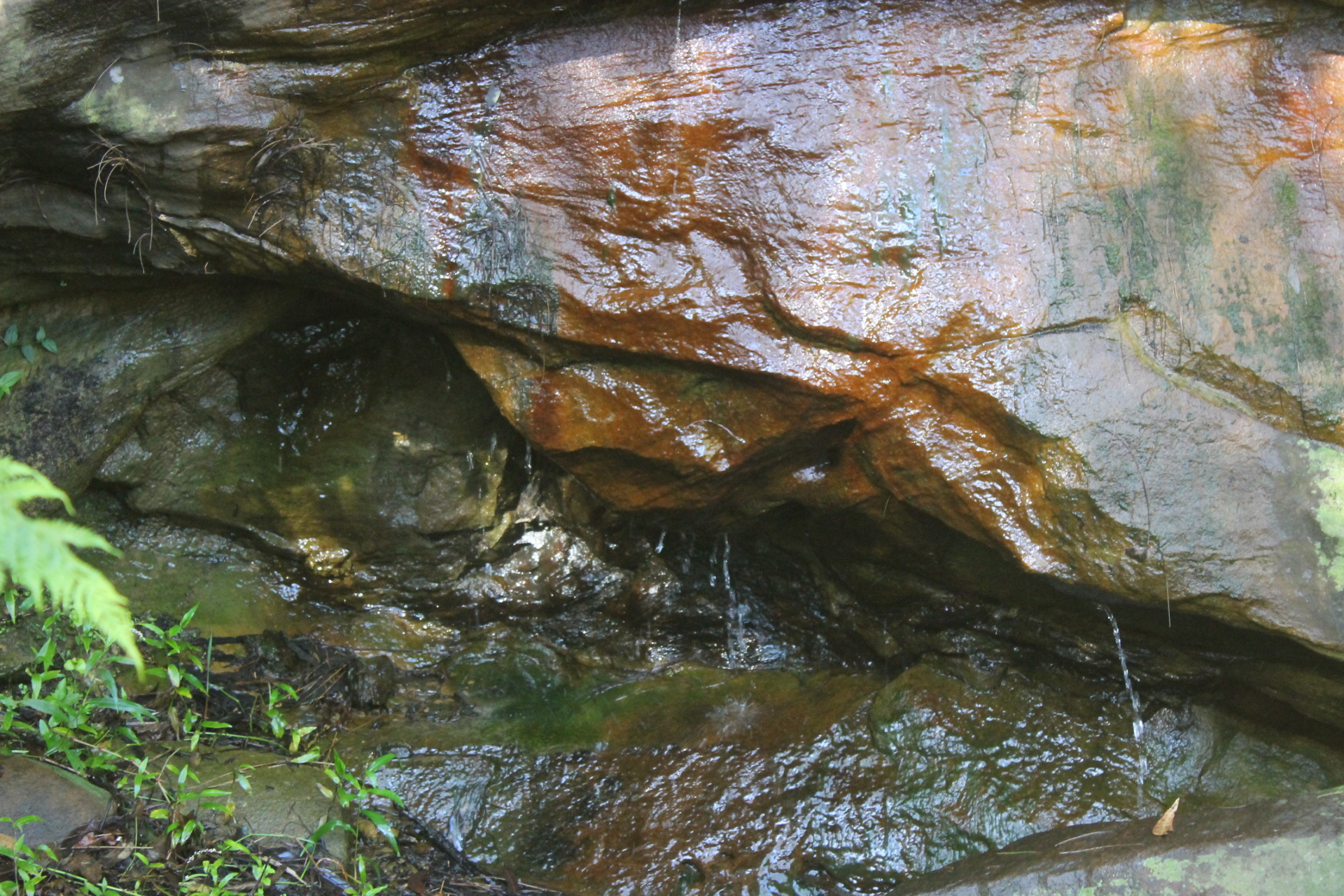
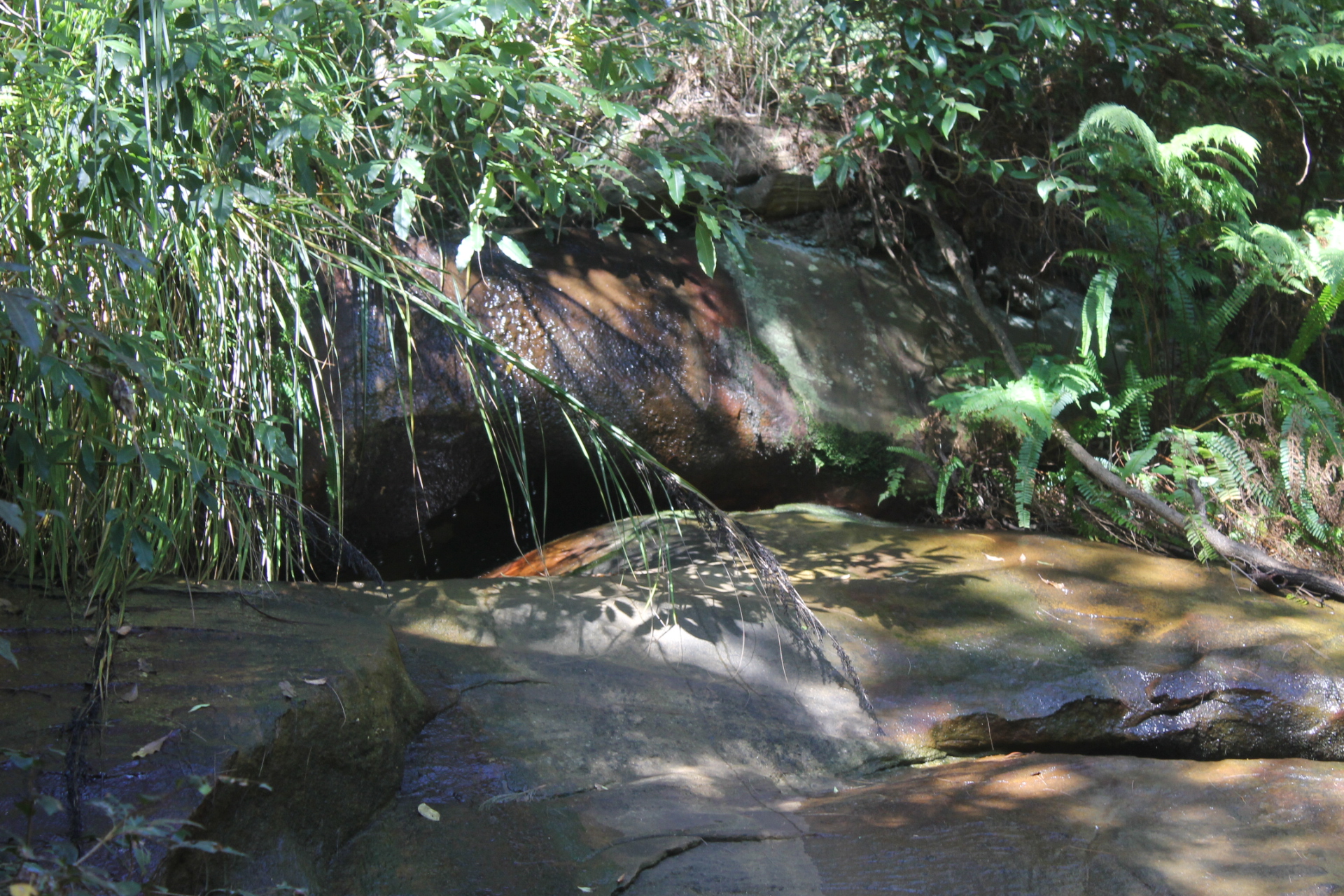
Antibiotic Resistance In Treating UTIs Highest In Aged Care Facilities: Study
.jpeg?timestamp=1711209572689)
Avalon Beach Ladies Probus Club: April 2nd 2024 Speaker

Dr. Scamps Offering Free Anti-Scam Seminar
Squatting, kidnapping and collaboration: Australia’s first women’s shelters were acts of radical grassroots feminism
Emma McNicol, Monash University50 years ago, there wasn’t a single women’s shelter in Australia.
Then feminists squatted two terraces in Sydney, opening “Elsie”, Australia’s first domestic and family violence refuge.
Commissioned by Elsie co-founder Anne Summers, I’ve recorded oral histories with the women who built and sustained Australia’s refuge movement.
Australia’s refuge movement is a story of courageous grassroots feminist activism.
Choose To Act
In the 1970s in Australia, there was nowhere for women experiencing male violence at home to go.
One night almost exactly 50 years ago, around 40 women’s liberation activists changed that, claiming squatters’ rights over two derelict Glebe terraces. They broke a window, changed the locks and turned on the gas and water, opening “Elsie”, Australia’s first women’s refuge.
As Elsie worker Ludo McFerran explained, Elsie’s mission was a “space for women, run by women”, which the residents would control. Elsie did not offer “charity”, the founders aimed at “change”, and therefore refuges would one day become obsolete.
Cooma, Kamilaroi woman Mary Ronyane, who today manages Wilcannia Safe House, proposed that Elsie was created because, when together women draw from their strength, they can “make a choice”. They chose to act.
McFerran described the refuge work as “highly vulnerable”. At the beginning, the work was entirely voluntary, and refuge work never proved a lucrative career.
The activists sacrificed all their time, energy, health and often their safety. In the “wild west”, as McFerran described it, perpetrators would “regularly turn up, threaten to burn the house down and kill everyone inside.”
There was no legal protection for residents or workers, so when perpetrators failed to return children after visits, workers would “go and try find them” and where possible “grab the kids back and make a run for it.”
Desperately trying to cover the operating costs, some of the workers started dealing marijuana to pay for necessities. Sydney’s artists and intellectuals started seeking out “Elsie Pot”.
With an intention to secure funding, the activists started encouraging various government ministers to come and see the conditions Elsie’s residents were enduring. Founder Christina Gibbeson told me how she kidnapped Doug Everingham, the minister for health at the time. She forced her way into a car carrying Everingham and instructed his driver to take them to Elsie. She mused:
“I would’ve gone to jail for it today, I suppose.”
Ceding Power And Privilege
Australia’s early refuges operated collectively. Everyone was obliged to scrub bathrooms and care for resident children. Decisions took time and often went to a vote. Former resident and worker, Bundjalung woman Christine Robinson, believes “at Elsie, we all had a say and a voice.”
The founders recognised residents’ insights and skills that came with their life experience. In 1980, six years after Marrickville refuge opened, the refuge’s residents informed staff that it was time for them to leave and let them take the reins, and they did.
The activists wanted liberation for all women, not just those who looked like them. Women’s Halfway House worker Di Otto noted that they viewed the refuge “as a site in which they could make contact with women outside of [their] circles […] and work towards a collective and inclusive liberation.”
Vivien Johnson shared:
[…] [us] middle class white women were consistently confronted by our class prejudices [and] with the racism we held towards the women with whom we claimed to be equal with.
Christine Robinson believes Australia’s refuge movement “valued diversity.” She explained that Elsie’s staff all learned how to sit with, and learn from, fellow feminists calling out their racism.
Robinson explained at Elsie, she and fellow Aboriginal leaders had a platform to culturally educate their non-First Nations colleagues, whom she described as a “captive audience”, “trying” to get it right.
Space For Activism
Elsie’s founders sought to cultivate an environment in which residents could build confidence and reclaim control over their lives. In 1975, Bobbie Townsend, a working-class woman, arrived at Elsie with two children.

Townsend believes the late night discussions at Elsie’s dinner table “saved her”, and shared:
[…] for 26 years nobody had asked me what I thought about anything […] The first time someone asked me in a collective meeting what I thought, I didn’t know what to say […] Elsie was about taking control.
Robinson, like Townsend, also a resident turned staff member, reflected that “Elsie gave women power to make decisions for themselves.”
Today, There Is Nothing Quite Like Elsie
The founders all described an atmosphere of hope. Under Whitlam, things were possible.
McFerran explained that today, tendering practices have forced out community-run refuges. Run by Christian, centralised institutions, few refuges observe the grassroots collectivist principles that animated the movement’s early years.
While Elsie still opens its doors to victim-survivors today, it is run by St Vincent de Paul.![]()
Emma McNicol, Research Fellow at Monash Sustainable Development Institute, Monash University
This article is republished from The Conversation under a Creative Commons license. Read the original article.
Half of Australians in aged care have depression. Psychological therapy could help

While many people maintain positive emotional wellbeing as they age, around half of older Australians living in residential aged care have significant levels of depression. Symptoms such as low mood, lack of interest or pleasure in life and difficulty sleeping are common.
Rates of depression in aged care appear to be increasing, and without adequate treatment, symptoms can be enduring and significantly impair older adults’ quality of life.
But only a minority of aged care residents with depression receive services specific to the condition. Less than 3% of Australian aged care residents access Medicare-subsidised mental health services, such as consultations with a psychologist or psychiatrist, each year.
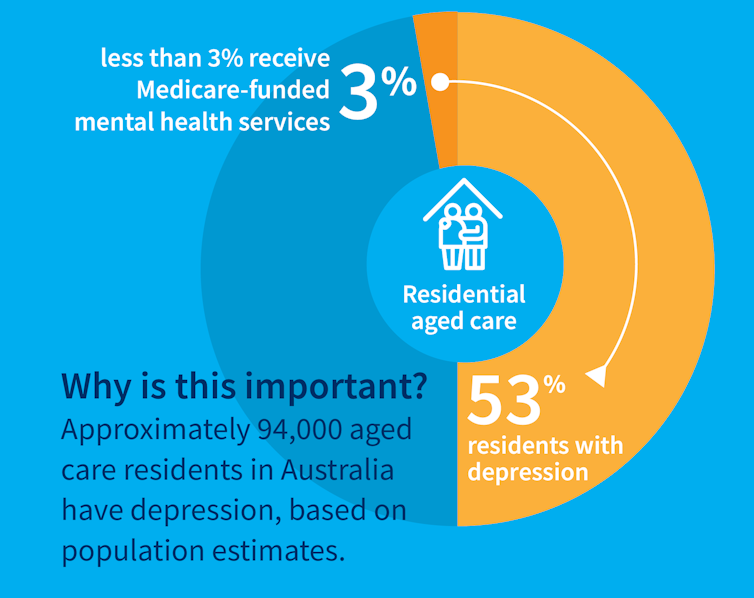
Instead, residents are typically prescribed a medication by their GP to manage their mental health, which they often take for several months or years. A recent study found six in ten Australian aged care residents take antidepressants.
While antidepressant medications may help many people, we lack robust evidence on whether they work for aged care residents with depression. Researchers have described “serious limitations of the current standard of care” in reference to the widespread use of antidepressants to treat frail older people with depression.
Given this, we wanted to find out whether psychological therapies can help manage depression in this group. These treatments address factors contributing to people’s distress and provide them with skills to manage their symptoms and improve their day-to-day lives. But to date researchers, care providers and policy makers haven’t had clear information about their effectiveness for treating depression among older people in residential aged care.
The good news is the evidence we published today suggests psychological therapies may be an effective approach for people living in aged care.
We Reviewed The Evidence
Our research team searched for randomised controlled trials published over the past 40 years that were designed to test the effectiveness of psychological therapies for depression among aged care residents 65 and over. We identified 19 trials from seven countries, including Australia, involving a total of 873 aged care residents with significant symptoms of depression.
The studies tested several different kinds of psychological therapies, which we classified as cognitive behavioural therapy (CBT), behaviour therapy or reminiscence therapy.
CBT involves teaching practical skills to help people re-frame negative thoughts and beliefs, while behaviour therapy aims to modify behaviour patterns by encouraging people with depression to engage in pleasurable and rewarding activities. Reminiscence therapy supports older people to reflect on positive or shared memories, and helps them find meaning in their life history.
The therapies were delivered by a range of professionals, including psychologists, social workers, occupational therapists and trainee therapists.
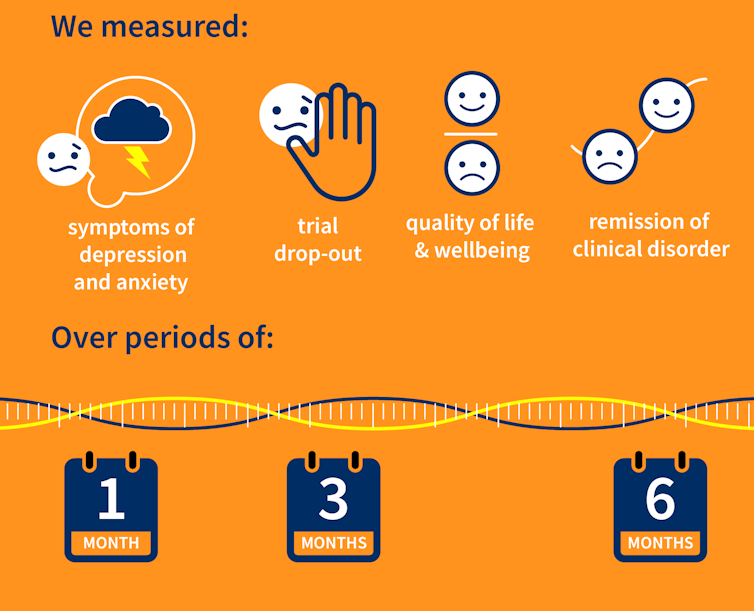
In these studies, psychological therapies were compared to a control group where the older people did not receive psychological therapy. In most studies, this was “usual care” – the care typically provided to aged care residents, which may include access to antidepressants, scheduled activities and help with day-to-day tasks.
In some studies psychological therapy was compared to a situation where the older people received extra social contact, such as visits from a volunteer or joining in a discussion group.
What We Found
Our results showed psychological therapies may be effective in reducing symptoms of depression for older people in residential aged care, compared with usual care, with effects lasting up to six months. While we didn’t see the same effect beyond six months, only two of the studies in our review followed people for this length of time, so the data was limited.
Our findings suggest these therapies may also improve quality of life and psychological wellbeing.
Psychological therapies mostly included between two and ten sessions, so the interventions were relatively brief. This is positive in terms of the potential feasibility of delivering psychological therapies at scale. The three different therapy types all appeared to be effective, compared to usual care.
However, we found psychological therapy may not be more effective than extra social contact in reducing symptoms of depression. Older people commonly feel bored, lonely and socially isolated in aged care. The activities on offer are often inadequate to meet their needs for stimulation and interest. So identifying ways to increase meaningful engagement day-to-day could improve the mental health and wellbeing of older people in aged care.
Some Limitations
Many of the studies we found were of relatively poor quality, because of small sample sizes and potential risk of bias, for example. So we need more high-quality research to increase our confidence in the findings.
Many of the studies we reviewed were also old, and important gaps remain. For example, we are yet to understand the effectiveness of psychological therapies for people from diverse cultural or linguistic backgrounds.
Separately, we need better research to evaluate the effectiveness of antidepressants among aged care residents.
What Needs To Happen Now?
Depression should not be considered a “normal” experience at this (or any other) stage of life, and those experiencing symptoms should have equal access to a range of effective treatments. The royal commission into aged care highlighted that Australians living in aged care don’t receive enough mental health support and called for this issue to be addressed.
While there have been some efforts to provide psychological services in residential aged care, the unmet need remains very high, and much more must be done.
The focus now needs to shift to how to implement psychological therapies in aged care, by increasing the competencies of the aged care workforce, training the next generation of psychologists to work in this setting, and funding these programs in a cost-effective way. ![]()
Tanya Davison, Adjunct professor, Health & Ageing Research Group, Swinburne University of Technology and Sunil Bhar, Professor of Clinical Psychology, Swinburne University of Technology
This article is republished from The Conversation under a Creative Commons license. Read the original article.
Four In Ten Older Australians Skipping The Dentist Due To Cost
- 37% of Australians aged 55+ have delaying or completely put off going to the dentist in the past year due to cost;
- 44% of older Australians on lower incomes have delaying or completely put off going to the dentist in the past year due to cost;
- 57% of Australians aged 55+ who say they are financially struggling have delayed or completely put off going to the dentist in the past year due to cost;
- 73% of all Australians support the introduction of a Seniors Dental Benefits Scheme;
- Four in five people (79%) believe dental care should be covered by Medicare;
- 89% of Australians of all ages who are in serious financial difficulty believe dental care should be covered by Medicare.
Baby Boomers Splurge Online While Younger Generations Cut Back And Opt For Budget Buys
Monday March 18, 2024
- >9.5 million households shopped online in the past year, that’s 82% of all Australian households, up 1.4% year-on-year (YoY).
- >Baby Boomers spent almost $1 billion more than they did last year.
- >Average basket size was $98, down 4.6% from last year.
Australia Post today released its 2024 'Inside Australian Online Shopping Report', providing an insight into which Aussies spent the most online in the past year.
According to the data, 9.5 million Australian households2 shopped online in 2023, spending $63.6 billion on online goods3, down 1.2% from the year prior. Online shopping has remained largely flat with less spent online compared to last year, but the number of online purchases increased as Aussies turned to smaller, more frequent buys.
Cost-of-living pressures driving more cautious spending in 2023 has also highlighted a clear generational gap in spending habits. Gen Y (millennials) spent more than any other generation ($22.1 billion) despite their average basket size declining by –2% YoY ($95). Gen X followed suit, spending $17.47 billion online while their average basket size declined by 5% YoY to $110 and Gen Z spent the least ($10.64 billion), choosing more budget-friendly purchases with $80 as the average basket size. Bucking this trend, Baby Boomers spent 7% more than the prior year ($109 average basket size).
Social researcher and generational expert Claire Madden commented: “We’re seeing a growing confidence in older generations spending more than younger generations in each transaction. While Gen Z don’t currently have the same earning capacity as older generations, they are showing they are still active, savvy, online shoppers who have a focus on lifestyle spend and search for good value.”
Aussies spent the most on home and garden ($16 billion), a category which traditionally has more expensive items like furniture. The two categories that showed growth were variety stores ($15.8 billion, with YoY growth of 9.1%) and food and liquor ($13.2 billion, with YoY growth of 2.4%), showing consumers aren’t afraid to shop around for a better deal as cost-of-living pressures continue to take effect.
Interesting comparisons can also be made state versus state. Across the country, West Australians embraced the online shopping trend with the strongest YoY growth in number of online purchases of the states/territories (5.1%), followed closely by the Northern Territory (4.6%) and Queensland and Tasmania (4.3% each). The significant 18% increase in online shopping activity since 2019 in remote and regional Australia can be attributed to population growth post COVID-194 and convenience, while Victoria and New South Wales saw a drop in online purchases, with both states returning to normal shopping habits since the pandemic.
Australia Post Executive General Manager Parcel, Post and eCommerce services Gary Starr said eCommerce has now established itself as the new normal in Australian retail and is an integral part of the overall retail experience.
“Australians are shopping online more often, with 1 in 7 households shopping weekly. While basket sizes were smaller this year, the increasing trend in repeat shopping highlights the reliance on eCommerce in everyday life. 9.5 million households received a parcel in 2023, that’s 8 in 10 households making an online purchase and over 1.5 million more Aussies shopping online compared to 2019.
“This year, online sales events accelerated in popularity, almost becoming traditions for Aussie shoppers. The Black Friday sales event alone saw an 88% jump in online purchases, compared to 2019 and retailers were quick to capitalise.
“The success of sales events like Black Friday and Cyber Monday ultimately contributed to Australia Post achieving its biggest eCommerce peak period ever, delivering nearly 100 million parcels in November and December,” Mr. Starr said.
Minister for Communications, the Hon. Michelle Rowland MP said the results demonstrate the ongoing demand for postal services in Australia.
“Australia Post connects millions of consumers with national and international businesses every year, and today’s results demonstrate the significant role the organisation plays in enabling eCommerce to thrive in Australia.
“As demand for eCommerce continues to increase, so too does the need for trusted, timely and reliable access to postal services in Australia.
“The Government is committed to ensuring Australia Post keeps up with this demand, which is why we are supporting Australia Post to modernise to deliver more parcels and improve the company’s long-term financial sustainability.
“These important reforms will help ensure this cherished institution continues to deliver for consumer and small businesses, and help boost Australia’s economic productivity,” Minister Rowland said.
With a focus on the customer, Australia Post is delivering on changing consumer expectations with the introduction of Australia Post Metro, a next-day delivery service operating in Melbourne, Sydney and Brisbane. Australia Post is committed to the communities it operates in, investing $343 million in the network in the last financial year and opening new sites like Orange Community Hub—an example of more to come for a modernised Australia Post.
To view the report visit: https://ecommerce-report.auspost.com.au/

This 18th-century shell collection, saved from a skip, tells a story of empire, explorers and women’s equality
Freya Gowrley, University of BristolIn the 1980s, a shell collection that included specimens from Captain Cook’s final voyage was accidentally thrown into a skip and believed lost forever. But much to the joy of scientists, last week it was rediscovered safe and sound and donated to English Heritage.
Her name might not have made the headlines, but the woman who originally collected the shells, Bridget Atkinson (1732-1814), made a significant contribution to natural history in the 18th century.
Atkinson was one of many women interested in shells at this time. It was a pursuit that drew in both aristocratic and middle class enthusiasts. Among them were famous collectors, such as the philosopher and poet Margaret Cavendish and cousins Jane and Mary Parminter, the elite owners of the shell-encrusted house A la Ronde, in Exmouth.
Collecting shells was a common past time in Enlightenment Britain. This was a period in which elite women were becoming increasingly interested in the sciences, and they pursued its disciplines with wild enthusiasm.
This is demonstrated in the popularity of books such as Newtonianism for Ladies by Francesco Algarotti. Published in 1737, the book was a bestseller and reprinted many times as the 18th century progressed.
Botany and natural history were deemed particularly appropriate vehicles for women’s intellectual curiosity. Women engaged in these practices were encouraged to collect specimens, create displays and study related literature, often written by female authors.
As a result, the early 19th century saw the publication of various natural history books written by women, such as The Conchologist’s Companion by Mary Roberts (1824), a series of letters on the properties of various types of shell.
Atkinson’s Collection
While Atkinson wasn’t unusual as a woman collecting shells, the extent of her acquisitions sets them apart from many other collections of the period. She acquired as many as 1,200 shells throughout her lifetime, with many sourced from far-flung regions across the globe.
Atkinson was from a wealthy and genteel, but not aristocratic, family, and as a result, she is not as well known as other shell collectors of the time. Nevertheless, her collection includes a number of important specimens of endangered and protected species. Many were amassed from her connection to George Dixon, an armourer on Captain Cook’s third and final world voyage.
While her surviving correspondence shows her to be a less-than-perfect writer, Atikinson’s expertise in natural history led to her becoming the first female honorary member of the Society of Antiquaries of Newcastle upon Tyne in 1813. Women were still deemed ineligible for full membership until 1877.
Atkinson’s collection does not simply reflect the scientific interests of a curious individual. A study of their acquisition reveals a broad, even global, system at play. A number of her shells were gifted to Atkinson through the networks of the British empire.
Several members of Atkinson’s family were employed in imperial roles. Her son and brother-in-law were both a part of the mercantile colonising forces of the East India Company, and the latter even owned sugar plantations in Jamaica. This means the Atkinson family were direct beneficiaries of the enslavement of Black men and women in the Caribbean.
Atkinson used these connections to her advantage, writing to her relatives living abroad to ask for shells and even imploring family friends to do the same. In 1796, her friend Mary Yates wrote to her son John, who then lived in Virginia to pass on Atkinson’s request for “snail shells picked off the ground …the larger the better”.
Conveyed through the very routes and mechanics of the British empire, Atkinson’s collections are indivisible from the wider history of colonialism. This is something that future displays of the shells will inevitably have to address.
The History Of Atkinson’s Collection
Despite their obvious significance today, Atkinson’s shells have not always been treated with reverence. The collection was passed down through various generations of the Atkinson family before eventually being acquired by Newcastle University in the 1930s (then known as King’s College). It was in this time that the shells were lost.
Having been discarded into a skip, an eagle-eyed marine zoologist named John Buchanan rescued them from obscurity. Going through his belongings after his death, his family discovered the collection and donated it to English Heritage.
This is not an unusual story. Viewed as trifling interests and trivial pursuits, a lack of interest in women’s collections of shells, both ornamental and scientific, has led to many examples being lost over the centuries.
The great sale of Margaret Cavendish’s collection in 1786 is a typical example. Her shells and corals from Britain, Italy and the Indian Ocean were all placed all for sale, alongside those collected for decorative purposes. Like Atkinson’s collection, Cavendish’s shells included specimens from Cook’s travels. But even this important association did not save them from being scattered widely.
As Atkinson’s shells reveal, the collection of these beautiful natural objects crossed continents, told vivid histories of imperialism and established women’s vital role in the development of natural history as a discipline. Their forthcoming display at Chester’s Roman Fort and Museum will ensure that they continue to tell these stories long into the future.
Looking for something good? Cut through the noise with a carefully curated selection of the latest releases, live events and exhibitions, straight to your inbox every fortnight, on Fridays. Sign up here.![]()
Freya Gowrley, Lecturer in History of Art and Liberal Arts, University of Bristol
This article is republished from The Conversation under a Creative Commons license. Read the original article.
2024 Seniors Card Discount Directory
The middle-aged brain changes a lot – and it’s key to understanding dementia
Sebastian Dohm-Hansen Allard, University College Cork and Yvonne Nolan, University College CorkOur brains change more rapidly at various times of our lives, as though life’s clock was ticking faster than usual. Childhood, adolescence and very old age are good examples of this. Yet for much of adulthood, the same clock seems to tick fairly regularly. One lap around the Sun; one year older.
However, there may be a stage of life when the brain’s clock starts speeding up. The brain starts changing without you necessarily noticing it. It may even be caused (partly) by what’s in your blood. This stage of brain ageing during your 40s to 50s, or “middle-ageing”, may predict your future health.
Psychologists studying how our mental faculties change with age find that they decline gradually, starting in our 20s and 30s. However, when assessing people’s memory of everyday events, the change over time appears to be especially rapid and unstable during middle age. That is, even among healthy people, some experience rapidly deteriorating memory, while for others, it may even improve.
This suggests that the brain may be going through accelerating, as opposed to gradual, change during this period. Several structures of the brain have been found to change in midlife. The hippocampus, an area critical for forming new memories, is one of them.
It shrinks throughout much of adulthood, and this shrinkage seems to accelerate around the time of middle age. Abrupt shifts in the size and function of the hippocampus during middle age could underlie memory changes like the ones mentioned above.
Ultimately, what allows the brain to carry out its functions are the connections between brain cells – the white matter. These connections mature slowly throughout adulthood, especially the ones connecting areas of the brain that deal with cognitive functions such as memory, reasoning and language.
Interestingly, during middle age, many of them go through a turning point, from gaining volume to losing volume. This means that signals and information cannot be transmitted as fast. Reaction time starts deteriorating around the same time.
Through the white matter connections, brain areas talk to each other and form interconnected networks that can perform cognitive and sensory functions, including memory or vision. While the sensory networks deteriorate gradually throughout adulthood, the cognitive networks start deteriorating faster during middle age, especially those involved in memory.
Much like how highly connected people in society tend to form cliques with each other, brain regions do the same through their connections. This organisation of the brain’s communication allows us to perform some of the complex tasks we might take for granted, such as planning our days and making decisions.
The brain seems to peak in this regard by the time we hit middle age. Some have even referred to middle age as a “sweet spot” for some types of decision-making, but then the network “cliques” start to break up.
It’s worth stating at this point why these subtle changes matter. The global population aged 60 and over is set to roughly double by 2050, and with this, unfortunately, will come a considerable increase in dementia case numbers.

Focus Has Been Too Much On The Brain In Old Age
Science has long focused on very old age, when the detrimental effects of time are most obvious, but, by then, it can often be too late to intervene. Middle age could be a period when we can detect early risk factors of future cognitive decline, such as in dementia. Critically, the window of opportunity to intervene may also still be open.
So, how do we detect changes without having to give everyone an expensive brain scan? As it turns out, the contents of blood may cause the brain to age. With time, our cells and organs slowly deteriorate, and the immune system can react to this by starting the process of inflammation. Inflammatory molecules can then end up in the bloodstream, make their way to the brain, interfere with its normal functioning and possibly impair cognition.
In a fascinating study, scientists from Johns Hopkins and the University of Mississippi analysed the presence of inflammatory molecules in the blood of middle-aged adults and were able to predict future cognitive change 20 years down the line. This highlights an important emerging idea: age in terms of biological measures is more informative about your future health than age in terms of years lived.
Importantly, biological age can often be estimated with readily available and cost-effective tests used in the clinic.
“Middle ageing” may be more consequential for our future brain health than we think. The hurried ticking of the clock could be slowed from outside the brain. For example, physical exercise confers some of its beneficial effects on the brain through blood-borne messengers. These can work to oppose the effects of time. If they could be harnessed, they might steady the pendulum.![]()
Sebastian Dohm-Hansen Allard, PhD Candidate, Anatomy and Neuroscience, University College Cork and Yvonne Nolan, Professor in Neuroscience, University College Cork
This article is republished from The Conversation under a Creative Commons license. Read the original article.
State-Of-The-Art Tissue Pathology Laboratory & Diagnostic Oncology Department Opens At RPA
- expanded and enhanced emergency department and intensive care units
- state-of-the-art operating theatres
- expanded and improved adult and paediatric inpatient ward accommodation
- increased interventional and imaging services
- enhanced maternity services and neonatal intensive care services
- improved roads, signage and landscaping throughout the hospital
- new northern arrival and a new open garden courtyard.
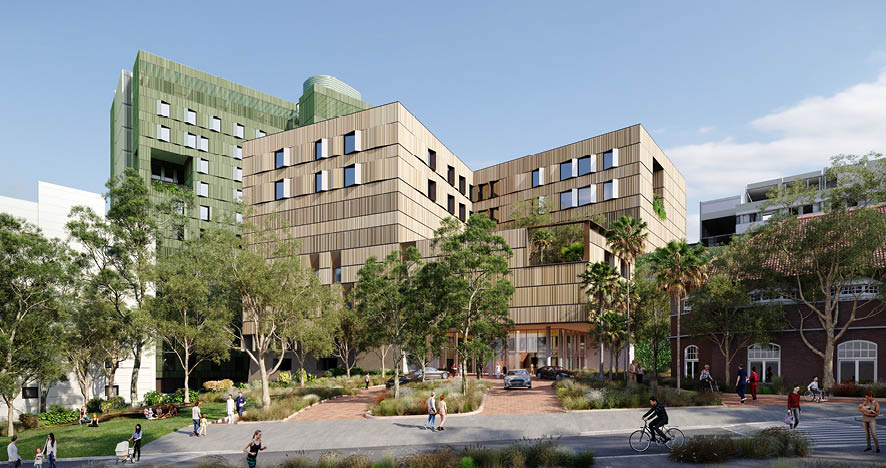
Greater Support And Care For Pregnant Women And Babies In NSW
Better Pay And Conditions Needed To Secure Future Of General Practice: AMA
 March 18, 2024
March 18, 2024Public Hospitals Remain In Crisis Ahead Of 2025 Funding Agreement: AMA

Iconic Byron Bay Locations Have Dual Aboriginal Name Added
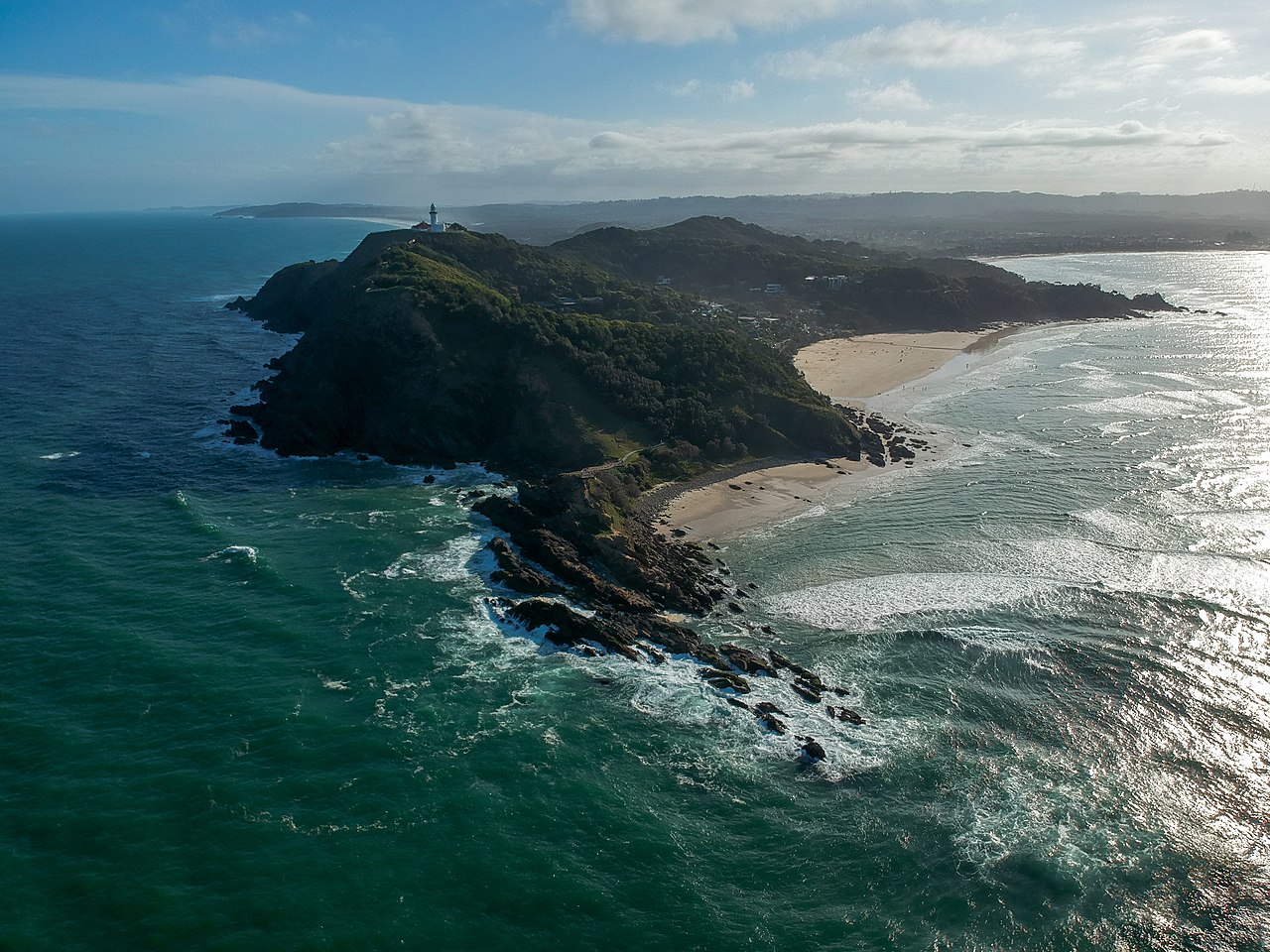
Design Teams Appointed For Canterbury Hospital’s Largest Upgrade In 26 Years And The Blacktown And Mount Druitt Hospital Redevelopment
Design Team Appointed For $120 Million Blacktown And Mount Druitt Hospital Project
- an additional $400 million to build the $700 million Rouse Hill Hospital
- $550 million for Fairfield Hospital, in its first major redevelopment since it opened in 1989
- $350 million for Canterbury Hospital, in its first major redevelopment since 1998
- $1.3 billion to build the Bankstown-Lidcombe Hospital on a new site, the first major investment since the two hospitals merged in 1997.
Major Step Forward For The New Bankstown Hospital
- Emergency services
- Intensive care
- Surgery and interventional procedures
- Women’s and Children’s Health
- Aged health
- Mental health
- Ambulatory care services.
The ‘digital divide’ is already hurting people’s quality of life. Will AI make it better or worse?
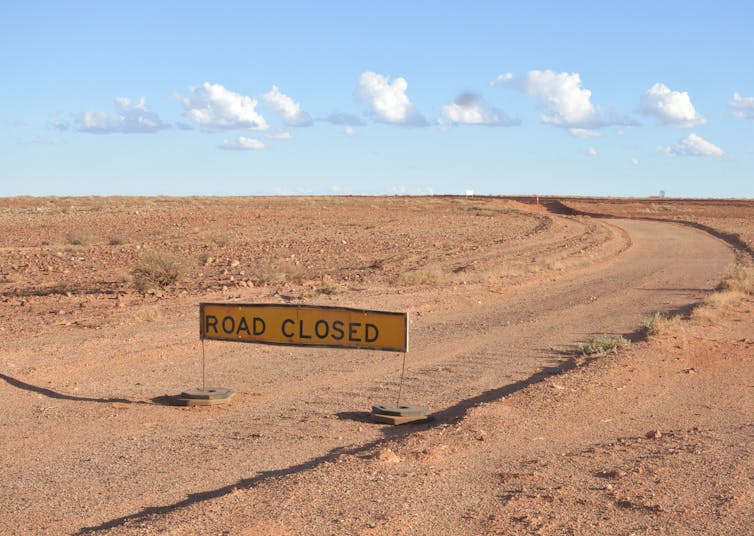
Today, almost a quarter of Australians are digitally excluded. This means they miss out on the social, educational and economic benefits online connectivity provides.
In the face of this ongoing “digital divide”, countries are now talking about a future of inclusive artificial intelligence (AI).
However, if we don’t learn from current problems with digital exclusion, it will likely spill over into people’s future experiences with AI. That’s the conclusion from our new research published in the journal AI and Ethics.
What Is The Digital Divide?
The digital divide is a well-documented social schism. People on the wrong side of it face difficulties when it comes to accessing, affording, or using digital services. These disadvantages significantly reduce their quality of life.
Decades of research have provided us with a rich understanding of who is most at risk. In Australia, older people, those living in remote areas, people on lower incomes and First Nations peoples are most likely to find themselves digitally excluded.
Zooming out, reports show that one-third of the world’s population – representing the poorest countries – remains offline. Globally, the digital gender divide also still exists: women, particularly in low and middle-income countries, face substantially more barriers to digital connectivity.
During the COVID pandemic, the impacts of digital inequity became much more obvious. As large swathes of the world’s population had to “shelter in place” – unable to go outside, visit shops, or seek face-to-face contact – anyone without digital access was severely at risk.
Consequences ranged from social isolation to reduced employment opportunities, as well as a lack of access to vital health information. The UN Secretary-General stated in 2020 that “the digital divide is now a matter of life and death”.
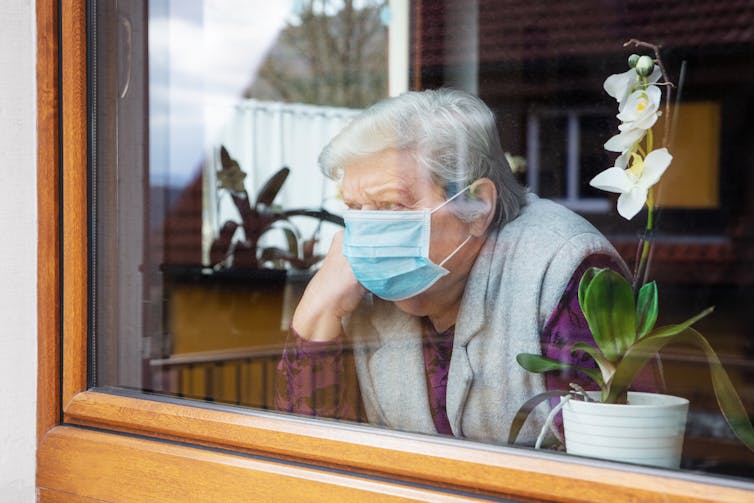
Not Just A Question Of Access
As with most forms of exclusion, the digital divide functions in multiple ways. It was originally defined as a gap between those who have access to computers and the internet and those who do not. But research now shows it’s not just an issue of access.
Having little or no access leads to reduced familiarity with digital technology, which then erodes confidence, fuels disengagement, and ultimately sets in motion an intrinsic sense of not being “digitally capable”.
As AI tools increasingly reshape our workplaces, classrooms and everyday lives, there is a risk AI could deepen, rather than narrow, the digital divide.
The Role Of Digital Confidence
To assess the impact of digital exclusion on people’s experiences with AI, in late 2023 we surveyed a representative selection of hundreds of Australian adults. We began by asking them to rate their confidence with digital technology.
We found digital confidence was lower for women, older people, those with reduced salaries, and those with less digital access.
We then asked these same people to comment on their hopes, fears and expectations of AI. Across the board, the data showed that people’s perceptions, attitudes and experiences with AI were linked to how they felt about digital technology in general.
In other words, the more digitally confident people felt, the more positive they were about AI.
To build truly inclusive AI, these findings are important to consider for several reasons. First, they confirm that digital confidence is not a privilege shared by all.
Second, they show us digital inclusion is about more than just access, or even someone’s digital skills. How confident a person feels in their ability to interact with technology is important too.
Third, they show that if we don’t contend with existing forms of digital exclusion, they are likely to spill over into perceptions, attitudes and experiences with AI.
Currently, many countries are making headway in their efforts to reduce the digital divide. So we must make sure the rise of AI doesn’t slow these efforts, or worse still, exacerbate the divide.

What Should We Hope For AI?
While there is a slew of associated risks, when deployed responsibly, AI can make significant positive impacts on society. Some of these can directly target issues of inclusivity.
For example, computer vision can track the trajectory of a tennis ball during a match, making it audible for blind or low-vision spectators.
AI has been used to analyse online job postings to help boost employment outcomes in under-represented populations such as First Nations peoples. And, while they’re still in the early stages of development, AI-powered chatbots could increase accessibility and affordability of medical services.
But this responsible AI future can only be delivered if we also address what keeps us digitally divided. To develop and use truly inclusive AI tools, we first have to ensure the feelings of digital exclusion don’t spill over.
This means not only tackling pragmatic issues of access and infrastructure, but also the knock-on effects on people’s levels of engagement, aptitude and confidence with technology.![]()
Sarah Vivienne Bentley, Research Scientist, Responsible Innovation, Data61, CSIRO and Claire Naughtin, Principal Research Consultant in Strategic Foresight, Data61
This article is republished from The Conversation under a Creative Commons license. Read the original article.
How safe are Australia’s mines? New analysis shows reform has been stalled for a decade
David Cliff, The University of QueenslandOn Sunday August 7 1994, an explosion at the Moura No 2 underground coal mine in Queensland led to the deaths of 11 miners. This tragedy was the catalyst for a major shakeup in the approach to safety in all kinds of mines around Australia over the late 1990s and early 2000s.
Since that time, we have seen major improvements in safety performance. In 2003, there were 12.4 fatalities per 100,000 workers; a decade later the figure was down to 3.4.
However, since then progress has slowed if not stalled. Despite the industry’s adoption of risk management systems, competency training, and a shift away from prescriptive regulation in the years following Moura, the rate of deaths and serious injuries has barely changed over the past decade.
Given the huge size and variety of Australia’s mining industry, and the inherent dangers of the work, we may never reach a time when there are no deaths. But zero fatalities must still be the goal.
A Rise In ‘One-Off’ Incidents
In the past, most deaths were due to what are called “principal hazards”. These are major incidents such as fires, explosions and mine flooding that can kill or injure many people.
Most safety work has, for good reason, focused on these hazards, and by my count they are today involved in fewer than 20% of deaths. What this means is that today’s tragedy landscape is more diffuse, with fatalities scattered across a range of different scenarios.
Now, most deaths are the result of “one-off” events such as being struck by objects, caught in machinery, falling from heights, or vehicle collisions. Addressing all these possibilities is more complex.
Mental Health, Fatigue, Staff Turnover
Human factors also loom large. Despite a huge increase in mine automation and remote operation technologies that reduce workers’ exposure to hazards, there are indications of worsening mental health, rising fatigue and high staff turnover, which can erode corporate knowledge.
Psychological and social problems such as these affect an estimated 20% of the modern mining workforce. Although there are fewer workers on site, they are often under huge production pressures and the rosters can be very tough on family life.
Poor mental health can compromise decision-making and reduce vigilance, leading to safety problems.
Slow, Steady Improvement
There are some promising developments. The “critical control management” approach already adopted by Rio Tinto and Newmont, among others, has been highly effective. This is a method that identifies a relatively small number of vital controls that can prevent serious incidents, and directs resources towards rigorously designing, implementing and maintaining them.
We are also likely to see future safety gains from better equipment design, further advances in automation and remote operation, and mental health initiatives, such as Western Australia’s Mental Awareness, Respect and Safety program.
But in an industry that has still averaged eight fatalities per year over the past decade, more safety reform is overdue. While new technologies and initiatives may be helpful, none will be a “silver bullet”.
Queensland alone has staged three “safety resets” in the past five years, with little result. Real safety improvement will be slow and steady, and will come from diligently and consistently applying proven safety management techniques.![]()
David Cliff, Professor of Occupational Health and Safety in Mining, The University of Queensland
This article is republished from The Conversation under a Creative Commons license. Read the original article.
Finally, good news for power bills: energy regulator promises small savings for most customers on the ‘default market offer’
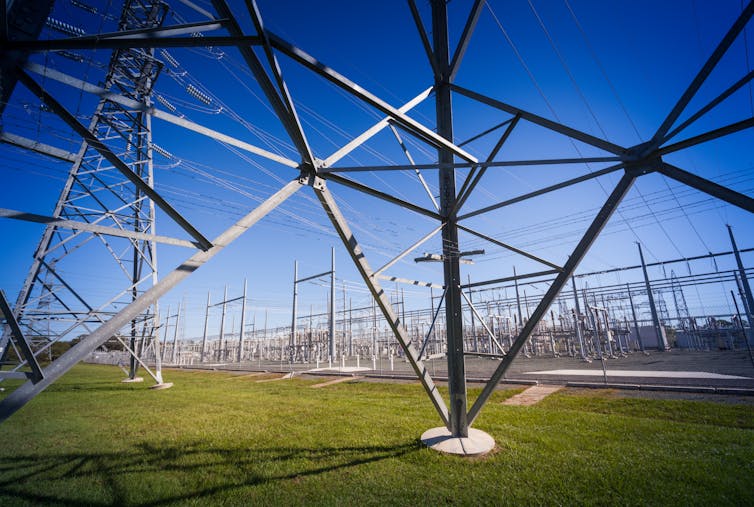
Electricity customers in four Australian states can breathe a sigh of relief. After two years in a row of 20% price increases, power prices have finally stabilised. In many places they’re going down.
The good news is contained in two separate draft decisions today by the Australian Energy Regulator and Victoria’s Essential Services Commission, on the maximum price energy retailers can charge electricity consumers under a specific plan that must be offered to all consumers.
The price is officially known as the “default market offer”. It’s the price you’re charged on a “default” plan with an electricity retailer – in other words, the plan customers are on if they haven’t shopped around to find a better deal from competing retailers. The bottom line is, most of these residential electricity customers should receive price reductions of between 0.4% (A$13) and 7.1% ($211) next financial year. In most cases that’s less than the rate of inflation.
The relief is largely the result of a drop in wholesale prices – that’s the price paid to the generators producing electricity. Unfortunately, however, at the same time transmission and distribution prices – or network costs – have gone up. So the savings won’t be as great as they might have been.
A Big Improvement On Previous Years
This is the sixth year in which regulators have set default market offers for retail electricity customers. They do it where there is competition in the sector: so in southeast Queensland, New South Wales, South Australia and, separately, Victoria.
It does not include Tasmania, the ACT, Western Australia or the Northern Territory, where the relevant regulator sets the prices and there’s no or very little competition.
About 5-10% of consumers across the states involved are on default plans. The rest have a contract arrangement with a retailer. But the draft decision, if enacted, still directly affects hundreds of thousands of people. And as commentators have observed, it sends an important market signal about the general direction of electricity prices.
The Australian Energy Regulator says most residential customers on the default market offer can expect to save on their electricity bills in 2024-25. But the offers vary depending where you live.
Have a look at the table above to see what residential customers without “controlled load” can expect. That covers most households. (Controlled load is when you also have an off-peak tariff for hot water heating.)
Some customers will be paying more for electricity. In Southeast Queensland, residential customers will pay 2.7% more, which is an extra $53 on average.
Using an inflation forecast of 3.3%, the Australian Energy Regulator also calculates what they call the “real” year-to-year variation in prices. So even if there’s a small increase in the price for a particular area, it’s less than the rate of inflation. For that example in southeast Queensland, it equates to a decrease of 0.6% and a saving of $12 in real terms.
Residential customers on the Victorian default market offer can expect to save 6.4%. The retail power prices in Victoria are slightly better than in the other states largely because there are lower wholesale power prices.
All in all it’s a big improvement on the price hikes of last year and the year before that.
The final default market offer prices will be released in May, but we can expect little change.
Network Prices Are Up
Regulators set the default market offer by itemising all costs retailers are likely to incur in the course of running their business. From that, they calculate the fair price retailers should offer customers on default plans.
Wholesale electricity costs, incurred when retailers buy electricity from generators on the wholesale market, make up maybe 30–40% of your bill.
The other major cost retailers face is for the electricity transmission and distribution network – that is, the “poles and wires”. These also comprise around 40% of your bill.
The network price is driven by inflation and interest rate rises, and also includes the costs of maintenance, and building new transmission infrastructure to connect renewable energy generators to the grid.
The easing of wholesale prices since their 2022 peak has been offset by increases in these network prices. In fact, network prices have increased by almost as much as wholesale prices have come down.
A Difficult Ask
Responding to the draft decision on Tuesday, Federal Energy Minister Chris Bowen said it showed the Albanese government was stabilising energy prices.
But Bowen came to office promising to cut power bills by $275 by 2025. That deadline is not very far away.
Bowen made that commitment in December 2021. Very soon after, electricity prices shot through the roof. It’s becoming very difficult to see how the $275 cost reduction will be achieved by next year.
The bottom line is prices have stabilised after a couple of bad years and hopefully the worst is behind us. But, it would be a brave person who attempts to predict where they go from here. There are too many moving parts. Governments should stay the course on policies, and consumers, worried about electricity prices, should go online, compare offers, and to find the best possible deal.![]()
Tony Wood, Program Director, Energy, Grattan Institute
This article is republished from The Conversation under a Creative Commons license. Read the original article.
Even as the fusion era dawns, we’re still in the Steam Age

Steam locomotives clattering along railway tracks. Paddle steamers churning down the Murray. Dreadnought battleships powered by steam engines.
Many of us think the age of steam has ended. But while the steam engine has been superseded by internal combustion engines and now electric motors, the modern world still relies on steam. Almost all thermal power plants, from coal to nuclear, must have steam to function. (Gas plants usually do not).
But why? It’s because of something we discovered millennia ago. In the first century CE, the ancient Greeks invented the aeolipile – a steam turbine. Heat turned water into steam, and steam has a very useful property: it’s an easy-to-make gas that can push.
This simple fact means that even as the dream of fusion power creeps closer, we will still be in the Steam Age. The first commercial fusion plant will rely on cutting-edge technology able to contain plasma far hotter than the sun’s core – but it will still be wedded to a humble steam turbine converting heat to movement to electricity.

Why Are We Still Reliant On Steam?
Boiling water takes a significant amount of energy, the highest by far of the common liquids we’re familiar with. Water takes about 2.5 times more energy to evaporate than ethanol does, and 60% more than ammonia liquids.
Why do we use steam rather than other gases? Water is cheap, nontoxic and easy to transform from liquid to energetic gas before condensing back to liquid for use again and again.
Steam has lasted this long because we have an abundance of water, covering 71% of Earth’s surface, and water is a useful way to convert thermal energy (heat) to mechanical energy (movement) to electrical energy (electricity). We seek electricity because it can be easily transmitted and can be used to do work for us in many areas.
When water is turned to steam inside a closed container, it expands hugely and increases the pressure. High pressure steam can store huge amounts of heat, as can any gas. If given an outlet, the steam will surge through it with high flow rates. Put a turbine in its exit path and the force of the escaping steam will spin the turbine’s blades. Electromagnets convert this mechanical movement to electricity. The steam condenses back to water and the process starts again.
Steam engines used coal to heat water to create steam to drive the engine. Nuclear fission splits atoms to make heat to boil water. Nuclear fusion will force heavy isotopes of hydrogen (deuterium and tritium) to fuse into helium-3 atoms and create even more heat – to boil water to make steam to drive turbines to make electricity.
If you looked only at the end process in most thermal power plants – coal, diesel, nuclear fission or even nuclear fusion – you would see the old technology of steam taken as far as it can be taken.
The steam turbines driving the large electrical alternators which produce 60% of the world’s electricity are things of beauty. Hundreds of years of metallurgical technology, design and intricate manufacturing has all but perfected the steam turbine.
Will we keep using steam? New technologies produce electricity without using steam at all. Solar panels rely on incoming photons hitting electrons in silicon and creating a charge, while wind turbines operate like steam turbines except with wind blowing the turbine, not steam. Some forms of energy storage, such as pumped hydro, use turbines but for liquid water, not steam, while batteries use no steam at all.
These technologies are rapidly becoming important sources of energy and storage. But steam isn’t going away. If we use thermal power plants, we’ll likely still be using steam.
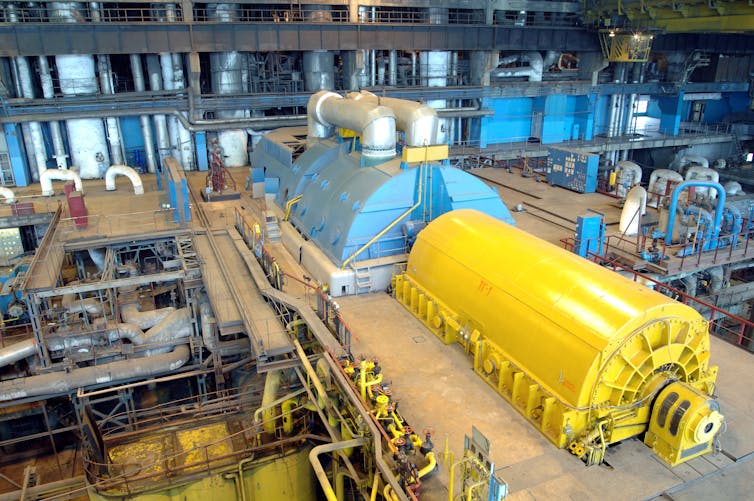
Why Can’t We Just Convert Heat To Electricity?
You might wonder why we need so many steps. Why can’t we convert heat directly to electricity?
It is possible. Thermo-electric devices are already in use in satellites and space probes.
Built from special alloys such as lead-tellurium, these devices rely on a temperature gap between hot and cold junctions between these materials. The greater the temperature difference, the greater voltage they can generate.
The reason these devices aren’t everywhere is they only produce direct current (DC) at low voltages and are between 16–22% efficient at converting heat to electricity. By contrast, state of the art thermal power plants are up to 46% efficient.
If we wanted to run a society on these heat-conversion engines, we’d need large arrays of these devices to produce high enough DC current and then use inverters and transformers to convert it to the alternating current we’re used to. So while you might avoid steam, you end up having to add new conversions to make the electricity useful.
There are other ways to turn heat into electricity. High temperature solid-oxide fuel cells have been under development for decades. These run hot, at between 500–1,000°C, and can burn hydrogen or methanol (without an actual flame) to produce DC electricity.
These fuel cells are up to 60% efficient and potentially even higher. While promising, these fuel cells are not yet ready for prime time. They have expensive catalysts and short lifespans due to the intense heat. But progress is being made.
Until technologies like these mature, we’re stuck with steam as a way to convert heat to electricity. That’s not so bad – steam works.
When you see a steam locomotive rattle past, you might think it’s a quaint technology of the past. But our civilisation still relies very heavily on steam. If fusion power arrives, steam will help power the future too. The Steam Age never really ended. ![]()
Andreas Helwig, Associate Professor, Electro-Mechanical Engineering, University of Southern Queensland
This article is republished from The Conversation under a Creative Commons license. Read the original article.
How we discovered the wreck of a torpedoed British ship after a 109-year mystery

A British cargo ship which was torpedoed and sunk during the first world war has finally surrendered its 109-year-old secret.
The SS Hartdale was steaming from Glasgow to Alexandria in Egypt with its cargo of coal when it was targeted by a German U-boat in March 1915. The final resting place of the ship had long been a mystery, but my colleagues and I have, at last, pinpointed its final resting place.
The old adage that we know more about the surface of the Moon and about Mars than we do about Earth’s deep sea may no longer hold entirely true. But the reality is that we still have a great deal more to learn.
Even our seemingly familiar shallow seafloors near the coast are relatively poorly mapped. Many people may think such areas are well explored, but there are still fundamental questions we can’t answer because detailed surveys haven’t been done.
The UK’s surrounding seas hold a vast underwater graveyard. Thousands of shipwrecks, from centuries of trade and conflict, litter the seabed like silent historical markers.
Surprisingly, even though we know where many wrecks lie, their true identities often remain a mystery. But the Unpath’d Waters project is now linking maritime archives with existing scientific data to help reveal some of these secrets.
History Meets Science
Scientists are using detailed sonar surveys from more than 100 shipwrecks west of the Isle of Man. Combining this underwater data with historical documents from around the world, researchers are piecing together a massive nautical jigsaw puzzle, finally revealing the true stories of these sunken vessels.
The first successful identification to be made as part of this work is that of the SS Hartdale. When the 105 metre long vessel was torpedoed at dawn on March 13 1915 by the German submarine U-27, two of its crew were lost and its final location remained unknown.
Researchers began by scanning known wrecks in the attack area, narrowing the possibilities down to less than a dozen. Then, they compared wreck details with official records and diver observations, eliminating candidates one by one until the SS Hartdale emerged as the perfect match. The vessel is lying at a depth of 80 metres, 12 miles off the coast of Northern Ireland.

Important details about SS Hartdale are available online via the Lloyds Register Foundation. This includes plans for the construction of the ship, formally known as Benbrook, built for Joseph Hault & Co. Ltd in 1910. This information, together with eye-witness accounts reported in the national press at the time, have proved to be crucial in confirming the wreck’s identity.
The US historian Michael Lowrey also provided the project team with a translated copy of notes extracted from an official German account and scans of U-27’s official war diary made by its commanding officer, Kapitänleutnant Bernd Wegener. These contained descriptions of the events leading up the sinking, coordinates for the attack and the exact location on Hartdale where the torpedo struck its hull – a detail strikingly confirmed by the sonar scan data.
Armed with this compelling evidence, the research team reached a definitive conclusion. The only viable candidate for the SS Hartdale was a previously “unknown” 105 metre long wreck. It has been lying just a few hundred metres to the south of where U-27 launched its fatal attack.
Unrestricted Submarine Warfare
Following its attack on Hartdale, the U-27 went on to play a prominent role in how naval warfare developed during the rest of the first world war. This came during a period of escalating tension in 1915.
Following the sinking of the British ocean liners, RMS Lusitania in May, and the SS Arabic in August of that year by U-boats, the way the war at sea was being conducted became increasingly heated and controversial.
Shortly after the SS Arabic was sunk by a different U-boat, the U-27 was itself attacked and destroyed by the Royal Navy Q-ship HMS Baralong. Q-ships were heavily armed merchant ships designed to lure submarines into making surface attacks.
The surviving German sailors, including U-27’s commanding officer, were then allegedly executed by British sailors in front of American witnesses. It has since become known as the “Baralong incident”.
German outcry over this event combined with other factors contributed to the start of “unrestricted submarine warfare” by Germany in February 1917. This meant that warnings were no longer issued to merchant vessels prior to U-boat attacks and loss of life was significantly increased.![]()
Michael Roberts, SEACAMS R&D Project Manager, Centre for Applied Marine Sciences, Bangor University
This article is republished from The Conversation under a Creative Commons license. Read the original article.
Disclaimer: These articles are not intended to provide medical advice, diagnosis or treatment. Views expressed here do not necessarily reflect those of Pittwater Online News or its staff.